

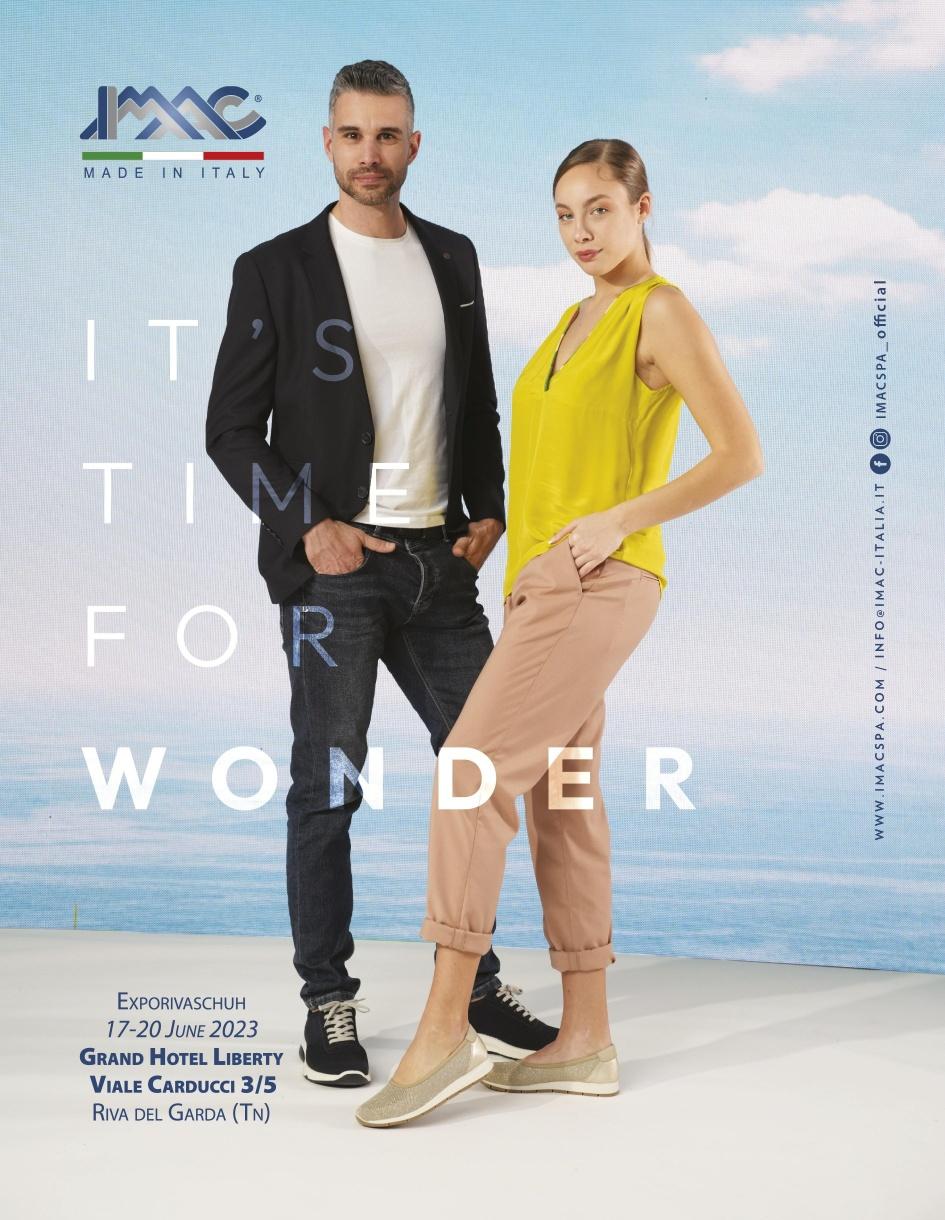


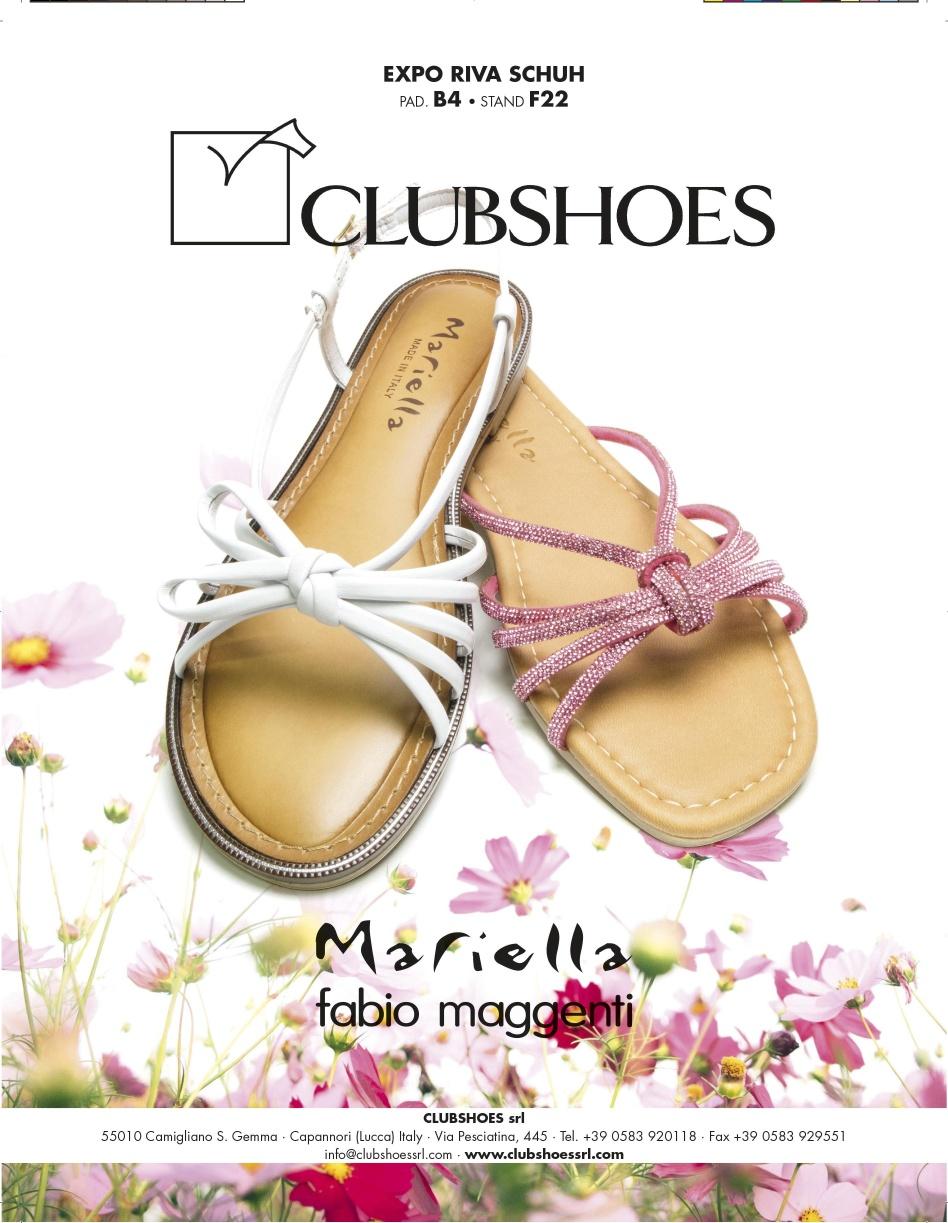
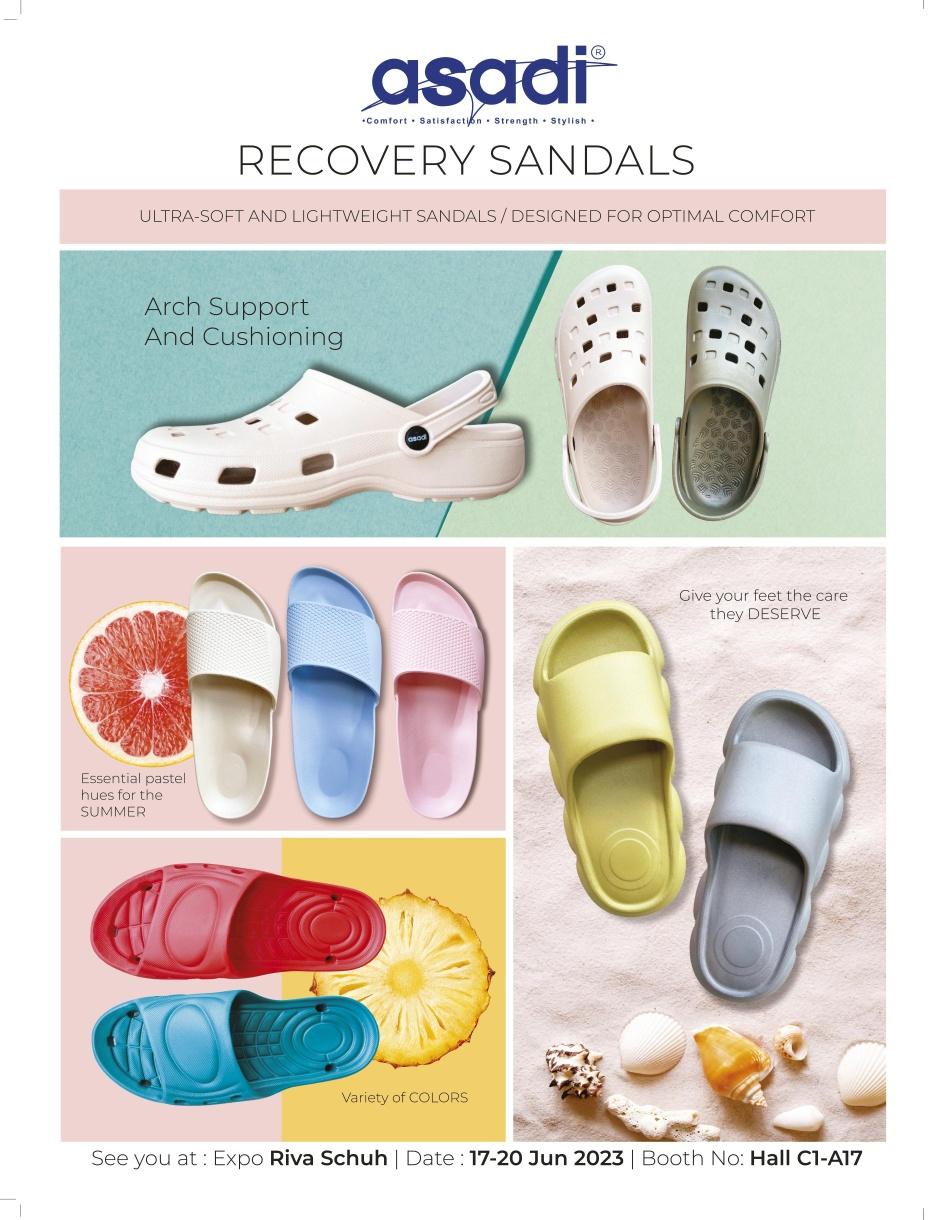

ISSUE 04/2023
EDIZIONI AF SRL
Via Ippolito Nievo, 33 - 20145 Milano
Tel. +39 02 319121 - Fax +39 02 33611619 www.edizioniaf.com info@edizioniaf.com
Direttore responsabile
Matteo Pasca
Direttore editoriale
Enrico Martinelli
Art director Angelo Lanza
Fashion editor
Luca Termine
Graphic design
Michele Alberti
Artwork
Joe Colosimo
New York contributors
Editor: Cecil Servigon
Cartoonist: Matteo Sessa Vitali
Contributors
Antonio Musto, Armando Grillo, Bohdan Bohdanov, Daniela Rettore, Dinalva Barros, Fumatto, Gianni Bortolazzi, Giorgia Spina, Giulia Simonotti, Lucrezia Bazzolo, Stratis Kas, Ursula Beretta, Yadier Castro Piedra
Editorial
Erika Alberti, Alessandro Capuzzi, Alessandro Dorio, Sara Meneghetti, redazione@edizioniaf.com
Digital Domiziana Desantis, Simone Riccardi, Davide Tufano digital@edizioniaf.com
PR & Marketing
Mariella Catalano, Mariel Cuba subscription@edizioniaf.com
Advertising Filippo Crepaldi, Giorgio Gori, Lucio Luiselli, Stefano Migliavacca adv@edizioniaf.com
Operations
Massimo Ledda, Elisa Trasi, Andrea Zampieri operations@edizioniaf.com
Printing
Porpora Group - porpora-group.it
Distributore nazionale: m-dis
Foto e illustrazioni
Alcune foto sono prese dal web in assenza di copyright. Chi riconosce immagini di sua proprietà lo segnali a FOTOSHOE
Poste Italiane Spa - Spedizione in abbonamento postale - Autorizzazione MBPA/LO - NO/114/A.P./2017
ART.1 COMMA1 - LO/MI. Pubblicazione registrata presso il Tribunale di Milano al numero 374 in data 3 luglio 1995. © Copyright 1967 - È vietata la riproduzione senza autorizzazione dei testi e delle immagini. Il trattamento dei dati personali dei destinatari di “Idea Pelle” è svolto nel rispetto della Legge 675/96 sulla Privacy. È possibile chiedere la modifica o la cancellazione dei propri dati indirizzando la richiesta a: Edizioni AF S.r.l. sede di Via Ippolito Nievo, 33 - 20145 Milano - Italy ai numeri di fax e di posta elettronica sopraindicati.
COVER STORY: Dress BYBLOS

Necklace LARIULÀ MILANO
Shoes JEFFREY CAMPBELL
Fashion by Luca Termine
Photo assistant: Yadier Castro Piedra
Make-up and Hair: Imma Mennuti and Andrea Lacavalla
Stylist assistant: Emanuele Scanu Model: Daria Savytska @BraveModelManagement
Photos by Angelo Lanza
Women’s fashion, but in a different sense
L’agenzia White Lady, di cui parliamo in questo numero, ha scelto il nome ispirandosi a un’incisione rupestre di 3000 anni fa: una donna bianca preistorica, protagonista di una scena religiosa, di caccia o di battaglia, nel cuore dell’Africa sub-sahariana. Un segno misterioso che può divenire simbolo dell’arcano femminile, quella delicata forza di chi può generare vita. “Una donna dovrebbe essere due cose: chi e cosa vuole”, diceva Coco Chanel in tempi in cui per lo spirito femminile era necessario rimarcare il concetto. Nonostante queste pagine non vogliano celebrare nulla, è giusto che almeno rilevino e rivendichino la centralità della donna, al pari di quella antica pittura.
Tempo fa Maggie Henriquez, fra le decane nel mondo delle bollicine e CEO di Krug, ebbe a dire che le donne cambiano il business dal punto di vista del management: “È innegabile che lo stile femminile è molto più adatto ai bisogni attuali della gestione di un’azienda”. Una riflessione sull’attualità che non s’immagina la fatina con la bacchetta magica, ma di certo una sensibilità più capace di donarsi che di conservare, di comporre più che demolire. Se fare moda significa fare cultura, allora che alla donna, che della moda è regina, sia lasciato lo spazio per riportarci a fare cultura, a costruire società e dimensioni che favoriscano la crescita e non l’avvizzire.
The White Lady agency, which we present in this issue, chose the name inspired by a 3,000-year-old rock carving: a prehistoric white woman, the protagonist of a religious, hunting or battle scene in the heart of sub-Saharan Africa. A mysterious sign that can become a symbol of the feminine arcane, that delicate strength of one who can generate life. “A woman should be two things: who and what she wants”, said Coco Chanel in times when it was necessary for the feminine spirit to remark on the concept. Although these pages are not meant to celebrate anything, it is fitting that they at least note and claim the centrality of women, on par with that ancient painting.
Some time ago Maggie Henriquez, among the doyens in the world of bubbly and CEO of Krug, had this to say about women changing business from a management point of view: “It is undeniable that women’s style is much better suited to the current needs of running a company”. A reflection on current events that does not envision the fairy with the magic wand, but certainly a sensibility more capable of giving rather than preserving, of composing rather than demolishing.
If making fashion means making culture, then let the woman, who of fashion is queen, be given the space to bring us back to making culture, to building societies and dimensions that foster growth and not wither away.
7 EDITORIAL
07

08
MUUNICE
HOOPS
ring: 12 PM JEWELRY Boots PARIS TEXAS
Playsuit
Clocks
Right
SLIDING DOORS
“Quiet luxury” by Ursula Beretta
OPINION LEADER
Laura Calevo / White Lady
DESIGNERS
Tariel Bisharyan / Emerging Talents Milan
TRENDS
“Is Victoria’s Secret really evolving?” by Giulia Simonotti
CCCT
Super innovative cluster dedicated to Chinese textiles and apparel
TRENDS
Fashion draws inspiration from design
PEANUTS
“Craving for Peanuts” by Claudio Leone
SUSTAINABILITY
Footwear market prepares for exponential growth PRESS ROOM It’s happen
“The balance point” by Giulio Alberoni

Breakfast club Flashing lights Candy Gold and chic! Blurry fluid Casual as usual Softcore
Man F
2024
FASHION
RUNWAY Woman/
/W
BRANDS Saint Angelo
STORY
CARTOONS “Fashioncartoonist” by Matteo Sessa Vitali 11 14 ISSUE N.4 JUNE 2023 18 132 24 29 111 138 128 130 142 144 148 162

TRADE


 Artwork by Joe Colosimo
Artwork by Joe Colosimo
Expo Riva Schuh & Gardabags
Initiatives to bring international supply and demand together

Come si fa a convincere il mondo a tornare in Italia, a Riva del Garda, per comprare scarpe, borse e accessori moda dopo che tutto si è bloccato per due anni? È la domanda su cui si è concentrato lo staff di Expo Riva Schuh & Gardabags e che ha trovato risposta in una fittissima rete di agenti/rappresentanti attivata dalla fiera in ogni parte del mondo e nel lavoro di incoming buyer svolto grazie al sostegno immancabile di Agenzia ITA/ICE che ha investito per promuovere l’export italiano sui mercati internazionali.
“Effettivamente abbiamo lavorato moltissimo sul tema dell’internazionalizzazione”, conferma GianPaola Pedretti, Exhibition Manager dell’evento. “Abbiamo guardato all’estero per coinvolgere sia espositori che visitatori, così da raggiungere l’obiettivo fondamentale di proporre da un lato un’offerta rappresentativa dell’intero mercato della calzatura e dall’altro conquistare chi muove il bacino della domanda. Offriamo così un matching sempre più internazionale, curato, profilato e preciso rispetto alle esigenze dei compratori. Il nostro scopo non è solo riempire i corridoi della fiera, bensì creare nuove opportunità di business facilitando relazioni commerciali di valore.
Il nostro lavoro è teso a comprendere a fondo le esigenze dei buyer e avere in fiera un paniere di fornitori che offra molteplici proposte, così da garantire a tutti di trovare ciò che cercano”.
Quali risorse avete attivato per centrare l’obiettivo?
“Sarebbe stato impossibile raggiungere lo scopo lavorando esclusivamente dagli uffici di Riva del Garda. Per approfondire la conoscenza delle varie piazze e mantenere un osservatorio costante in grado di fornire indicazioni precise riguardo le esigenze dei vari mercati si è reso necessario organizzare un network di persone che presidino un territorio essendo fisicamente presenti sul posto. In tempi molto rapidi ci siamo dotati di una rete di 12 rappresentanti stranieri, che chiamiamo delegati, e che coprono più di 30 Paesi. Grazie a loro e agli accordi stretti con diverse associazioni di categoria oggi vantiamo un presidio su molti territori”.
Quali paesi possiamo aspettarci di trovare in fiera durante la prossima edizione?
“Non è possibile citarli tutti, ma provo a nominarne almeno alcuni. Dal sud-est asiatico avremo un’ottima partecipazione di India, Vietnam, Singapore, Indonesia e Malesia. Ospiteremo buyer dall’Australia, per la prima volta selezionati dai nostri delegati. Lo stesso
II FAIRS
GianPaola Pedretti, Exhibition Manager Expo Riva Schuh & Gardabags
GianPaola Pedretti, Exhibition Manager della fiera rivana, spiega come la manifestazione è tornata a essere il rifeimento per il business calzature e accessori a livello internazionale
accadrà con compratori provenienti dalla Cina e dalla regione di Hong Kong. Una bella notizia visto che di solito si parla di Cina pensando solo al sourcing (che comunque sarà molto presente in fiera visto che raddoppierà il numero di espositori cinesi rispetto allo scorso gennaio, grazie alla riapertura dei viaggi).
Citerei anche la presenza di compratori dall’Africa, in particolare dal Nord Africa, soprattutto Egitto, ma anche dall’Africa centrale, grazie alla numerosa delegazione dal Kenya. Non è possibile omettere la corposa presenza di compratori dal Sud America”.
A livello europeo quale situazione si prospetta?
“Consolidata la presenza di buyer dal nord Europa, con un’ampia partecipazione dall’Inghilterra. Nominerei anche la Spagna che sarà presente in fiera con una buona rappresentanza di retailer che aderiscono all’associazione di categoria locale. Un risultato frutto del lavoro di sinergia fra il delegato locale e la ripresa dell’iniziativa Expo Riva Schuh & Gardabags Around the World che ha visto e vedrà lo staff organizzativo della manifestazione visitare in prima persona associazioni, aziende ed eventi internazionali”.
Oltre all’incoming di compratori quali altre iniziative avete messo in campo per favorire il business?
“Riproporremo l’iniziativa dei Market Focus studiata per favorire un incontro agile fra espositori e compratori. Riteniamo che per i buyer sia interessante disporre di un momento d’incontro esclusivo e riservato con un numero limitato di espositori che probabilmente non avranno previsto nel loro programma di visite. I Paesi su cui ci concentreremo saranno: America Latina, Far East, Kenya, Nord Europa, Stati Uniti, a cui si aggiunge il focus sulla tipologia di prodotto Borse e Accessori Moda.
Si rinnova anche l’appuntamento con i Trend Focus, coordinato dalla giornalista Claudia Schulz. In questa edizione fornirà ai buyer indicazioni utili rispetto ai prodotti da comprare se si opera sul mercato DACH (Germania, Austria e Svizzera).
Continuerete a puntare anche sul tema dell’innovazione del retail?
“Assolutamente sì. È un altro argomento che riteniamo possa essere di grande interesse per i buyer, i quali non avranno solo occasione di incontrare i loro potenziali partner e fornitori, ma anche di informarsi su innovativi strumenti ed efficaci strategie per migliorare il proprio business”.
How do you convince the world to come back to Italy, to Riva del Garda, to buy shoes, bags and fashion accessories after everything has been stuck for two years? That’s the question the Expo Riva Schuh & Gardabags staff focused on, and it was answered by a dense network of agents/representatives activated by the fair in every part of the world and the incoming buyer work done thanks to the unfailing support of Agenzia ITA/ICE, which has invested in promoting Italian exports on international markets.
“Effectively we have worked a lot on the theme of internationalization”, confirms GianPaola Pedretti, Exhibition Manager of the event. “We have looked abroad to involve both exhibitors and visitors, so as to achieve the fundamental objective of proposing on the one hand a representative offer of the entire footwear market and on the other hand winning over those who move the demand pool. We thus offer increasingly international, curated, profiled and precise matching with respect to buyers’ needs.

III FAIRS >
GianPaola Pedretti, Exhibition
Manager of the Riva fair, explains how the event has once again become the reference for the footwear and accessories business internationally.
Our aim is not just to fill the aisles of the fair, but to create new business opportunities by facilitating valuable business relationships. Our work is aimed at thoroughly understanding buyers’ needs and having a basket of suppliers at the fair that offers multiple proposals, so as to ensure that everyone can find what they are looking for”.
What resources have you activated to hit the target?
“It would have been impossible to achieve the goal by working exclusively from the Riva del Garda offices. In order to deepen our knowledge of the various squares and maintain a constant observatory capable of providing precise indications regarding the needs of the various markets, it became necessary to organize a network of people who preside over a territory by being physically present on site. Very quickly we equipped ourselves with a network of 12 foreign representatives, whom we call delegates, covering more than 30 countries. Thanks to them and agreements made with various trade associations, we now boast a presidium in many territories”.
Which countries can we expect to find at the fair during the next edition?
“It is not possible to mention them all, but I try to name at least a few. From Southeast Asia we will have very good participation from India, Vietnam, Singapore, Indonesia and Malaysia. We will host buyers from Australia, for the first time selected by our delegates. The same will happen with buyers from China and the Hong Kong region. This is good news since we usually talk about China thinking only of sourcing (which will be very present at the fair anyway since it will double the number of Chinese exhibitors compared to last January, thanks to the reopening of travel).
I would also mention the presence of buyers from Africa, particularly North Africa, especially Egypt, but also from Central Africa, thanks to the large delegation from Kenya. The substantial presence of buyers from South America cannot be omitted”.
At the European level, what is the situation looking forward?
“Consolidated the presence of buyers from northern Europe, with a large participation from England. I would also name Spain, which will be present at the fair with a good representation of retailers who are members of the local trade association. This is a result of the work of synergy between the local delegate and the resumption of the Expo Riva Schuh & Gardabags Around the World initiative, which has seen and will see the event’s organizing staff visiting associations, companies and international events firsthand”.
In addition to incoming buyers, what other initiatives have you put in place to foster business?
“We will be reintroducing the Market Focus initiative designed to facilitate an agile meeting between exhibitors and buyers. We think it is interesting for buyers to have an exclusive and confidential meeting time with a limited number of exhibitors that they will probably not have planned in their visit schedule. The countries we will focus on will be Latin America, Far East, Kenya, Northern Europe, and the United States, to which we will add the focus on the product type Bags and Fashion Accessories. Also renewed is the appointment with Trend Focus, coordinated by journalist Claudia Schulz. In this edition she will provide buyers with useful pointers with respect to products to buy if you operate in the DACH market (Germany, Austria and Switzerland).
Will you also continue to focus on the theme of retail innovation?
“Absolutely, yes. It is another topic that we believe will be of great interest to buyers, who will not only have the opportunity to meet their potential partners and suppliers, but also to learn about innovative tools and effective strategies to improve their business”.
NOT TO MISS
SABATO, 17 GIUGNO 2023
- 3:00 pm, Buyer’s Lounge (pav C1): Market Focus Latin America
- 4:30 pm, Wine Bar (pav A3): Market Focus Bags & Fashion Accessories
DOMENICA, 18 GIUGNO 2023
- 3:00 pm, Wine Bar (pav A3): Market Focus Kenya
- 4:30 pm, Buyer’s Lounge (pav C1): Trend Focus DACH
LUNEDÌ, 19 GIUGNO 2023
- 5:00 pm, Innovation Village (pav A2-B2 passage): Market Focus North Europe

MARTEDÌ, 20 GIUGNO 2023
- 10:00 am, Business Club (pav A2): Market Focus Far East
- 11:00 am, Buyer’s Lounge (pav C1): Market Focus U.S.A.
Gli espositori che volessero partecipare agli eventi, a numero chiuso e previa registrazione, possono candidarsi scrivendo a: buyers@exporivaschuh.it
Exhibitors who would like to participate in the events, which are limited in number and subject to registration, can apply by writing to: buyers@exporivaschuh.it
IV FAIRS

It’s time for Innovation Village Retail
AExpo Riva Schuh & Gardabags giugno 2023 torna lo spazio dedicato a startup e giovani aziende nato per condividere la cultura dell’innovazione e creare occasioni di networking e di business tra realtà emergenti e player affermati.
Dopo il successo delle passate edizioni, torna lo spazio dedicato all’innovazione realizzato da Riva del Garda Fierecongressi, con il supporto dell’Agenzia ICE (ITA - Italian Trade Agency), in collaborazione con Retail Hub e con il coordinamento scientifico di Alberto Mattiello - membro del Comitato Scientifico di Expo Riva Schuh & Gardabags. Qui, start up e giovani imprese innovative, selezionate tra quelle partecipanti al bando, avranno l’opportunità di presentare al pubblico della fiera e agli altri espositori i loro prodotti e servizi per il settore calzaturiero, pellettiero e degli accessori moda, nonché di partecipare alla Startup Competition, il cui vincitore entrerà di diritto come espositore all’edizione successiva di Expo Riva Schuh & Gardabags. Uno per uno, ecco i protagonisti dell’Innovation Village Retail di giugno 2023.
Expo Riva Schuh & Gardabags June 2023 sees the return of the space dedicated to start-ups and young companies created to share the culture of innovation and create networking and business opportunities between emerging realities and established players.
After the success of past editions, the space dedicated to innovation organised by Riva del Garda Fierecongressi, with the support of the ICE Agency (ITA - Italian Trade Agency), in collaboration with Retail Hub and with the scientific coordination of Alberto Mattiello - member of the Scientific Committee of Expo Riva Schuh & Gardabags - is back. Here, start-ups and young innovative companies, selected from those taking part in the call for entries, will have the opportunity to present their products and services for the footwear, leather goods and fashion accessories sector to the public at the fair and to other exhibitors, as well as to take part in the Startup Competition, the winner of which will be entitled to enter the next edition of Expo Riva Schuh & Gardabags as an exhibitor. One by one, here are the protagonists of the Innovation Village Retail in June 2023.
Appuntamenti all’Innovation Village
DOMENICA 18 GIUGNO 2023 | 15.30 – 16.15 | THEATRE (HALL D)
Innovation Village Input 1: La Digital Transformation nel retail
LUNEDÌ 19 GIUGNO 2023 | 10.00 – 10.45 | THEATRE (HALL D)
Innovation Village Input 2: eCommerce: cosa accadrà di nuovo?
LUNEDÌ 19 GIUGNO 2023 | 11.00 – 11.45 | THEATRE (HALL D)
Innovation Village Input 3: Il futuro dell’engagement dei clienti
LUNEDÌ 19 GIUGNO 2023 | 15.00 - 16.00 | THEATRE (HALL D)
Startup Competition
Appointments at the Innovation Village
SUNDAY 18 JUNE 2023 | 3.30 – 4.15 PM | THEATRE (HALL D)
Innovation Village Input 1: Digital Transformation in Retail
MONDAY 19 JUNE 2023 | 10 – 10.45 AM | THEATRE (HALL D)
Innovation Village Input 2: eCommerce: What’s Next?
MONDAY 19 JUNE 2023 | 11 – 11.45 AM | THEATRE (HALL D)
Innovation Village Input 3: The Future of Client Engagement
MONDAY 19 JUNE 2023 | 3 - 4 PM | THEATRE (HALL D)
Startup Competition
VI FAIRS
MOVO
www.movopack.com

La soluzione di packaging all’insegna della circolarità, che combatte il monouso e rivoluziona il mondo del packaging grazie ad un’unica confezione che può essere riutilizzata più di 20 volte. Il risultato sono meno rifiuti, un’impronta di CO2 inferiore del 75% e un pianeta più pulito e in salute.
The packaging solution in the name of circularity, which fights single-use and revolutionises the world of packaging thanks to a single pack that can be reused more than 20 times. The result is less waste, a 75% lower CO2 footprint and a cleaner, healthier planet.
AETREX

La piattaforma FitGenius AI di Aetrex, disponibile all’interno del software Albert e come plug-in per i siti web dei rivenditori, che aiuta a ridurre drasticamente i resi delle calzature e-commerce e a creare un’esperienza cliente più personalizzata, abbinando il profilo 3D del piede e i dati sulle preferenze di calzata di un cliente con la storia degli acquisti di profili simili, per aiutare gli acquirenti a ottenere la calzata giusta al primo tentativo.
Aetrex’s FitGenius AI platform, available lining Albert software and as a plug-in for retailers’ websites, which helps drastically reduce e-commerce footwear returns and create a more personalised customer experience by matching a customer’s 3D foot profile and fit preference data with the purchase history of similar profiles to help shoppers get the right fit the first time.
VII FAIRS >
www.aetrex.es
BLOCKVISION
www.blockvision.it

Una startup fashion-tech che sfrutta la tecnologia blockchain per aumentare la trasparenza e la tracciabilità dei marchi, grazie ad una piattaforma che consente di tracciare l’intera supply chain, dalle materie prime all’imballaggio, passando per la produzione e tutte le altre fasi della catena di fornitura. La piattaforma fornisce, inoltre, ai marchi gli strumenti per ottimizzare e gestire la loro catena di fornitura, controllando l’impatto ambientale e monitorando il modo in cui i clienti interagiscono con i prodotti attraverso una grande quantità di analisi e metriche.
A fashion-tech start-up leveraging blockchain technology to increase transparency and traceability for brands, thanks to a platform that allows the entire supply chain to be tracked, from raw materials to packaging, through production and all other stages of the supply chain. The platform also provides brands with the tools to optimise and manage their supply chain, controlling environmental impact and monitoring how customers interact with products through a wealth of analytics and metrics.
CENTS
www.centsdonations.com
La soluzione plug-and-play che offre la possibilità di fare impresa in modo etico. Grazie ai plug-in e alle API personalizzate, infatti, gli ecommerce possono donare una percentuale di ogni ordine a cause benefiche, coinvolgendo al contempo il consumatore nella scelta dei progetti. Facendo ciò, i tassi di completamento del carrello ed il LTV del cliente finale aumentano, poiché quest’ultimo è più coinvolto nel processo di acquisto e si sente più allineato ai valori aziendali. Infine, i consumatori sono ingaggiati post-vendita con degli aggiornamenti personalizzati riguardo l’impatto che è stato raggiunto grazie al lavoro degli Enti Non Profit.
The plug-and-play solution that offers the opportunity to do business ethically. Thanks to customised plug-ins and APIs, e-commerce companies can donate a percentage of each order to charitable causes, while involving the consumer in the choice of projects. By doing so, shopping cart completion rates and the LTV of the end customer increase, as the latter is more involved in the purchasing process and feels more aligned with the company’s values. Finally, consumers are engaged post-sale with personalised updates about the impact that has been achieved through the work of the non-profit organisation..
VIII
FAIRS

Una piattaforma conversazionale di WhatsApp che aiuta le aziende a comunicare meglio con i propri clienti utilizzando WhatsApp durante l’intero customer journey: marketing, vendite e assistenza clienti. Consente di inviare messaggi di marketing in massa; integrare WhatsApp con l’ e-commerce aziendale per messaggi transazionali e carrelli abbandonati, con il CRM o strumenti di marketing automation per creare funnel di vendita, o direttamente con gli annunci digitali per inviare un messaggio WhatsApp nel momento esatto in cui qualcuno esprime il suo interesse per il prodotto o servizio; creare automazioni e chatbot per l’assistenza clienti o altro.
A WhatsApp conversational platform that helps companies communicate better with their customers using WhatsApp throughout the entire customer journey: marketing, sales and customer service. It allows you to send bulk marketing messages; integrate WhatsApp with your company’s e-commerce for transactional messages and abandoned shopping carts, with CRM or marketing automation tools to create sales funnels, or directly with digital ads to send a WhatsApp message at the exact moment someone expresses interest in your product or service; create automations and chatbots for customer service or more.
Tokenance fornisce soluzioni sostenibili per potenziare l’attuale e le prossime generazioni di imprenditori innovativi, creativi, artisti e manager di marketing e community (soprattutto di PMI), aiutandoli in un percorso di trasformazione digitale personalizzato e di successo. Tokenance è un movimento, una piattaforma e un approccio globale ragionato, tecnologico, orientato al business, artistico e culturale alle applicazioni Blockchain, Metaverse, Web3 e NFT (Non-Fungible-Token).
Tokenance provides sustainable solutions to empower the current and next generation of innovative entrepreneurs, creatives, artists and marketing and community managers (especially SMEs), helping them on a personalised and successful digital transformation journey. Tokenance is a movement, a platform and a reasoned, technological, business-oriented, artistic and cultural global approach to Blockchain, Metaverse, Web3 and NFT (Non-FungibleToken) applications.

X FAIRS
SPOKI www.spoki.it
TOKENANCE www.tokenance.io
 Roberto Liscia, Netcomm President
Roberto Liscia, Netcomm President

Il mondo del retail sta assumendo una nuova configurazione dando vita a innovativi modelli di esperienzialità e di servizio, generati dall’interazione tra gli elementi digitali e quelli umani. I nuovi spazi digitali e i nuovi comportamenti omnicanale dei clienti ridisegnano i modelli di customer engagement e le dimensioni del retail. Dal fisico, al digitale, al virtuale, al social, al live. Inoltre, secondo la ricerca “Netcomm NetRetail”, l’esperienza di acquisto è sempre più omnicanale: quattro consumatori italiani su dieci si informano online prima di acquistare in negozio. Lo Smartphone è l’anello di congiunzione tra retail fisico e digitale.
“The Extended Retail: dai Metaversi allo Space Commerce”, questo il titolo del Netcomm Forum 2023 è stato occasione di confronto sui nuovi territori in cui il retail si è esteso negli ultimissimi anni e che rappresenteranno le opportunità del prossimo futuro.
Ma facciamo un passo indietro e partiamo da alcune premesse che solo cifre e numeri possono fornire: nel 2023 gli acquisti online degli italiani sono cresciuti del 13% e raggiungeranno i 54 miliardi di euro. I Prodotti segnano un +8% rispetto al 2022 e a fine anno varranno 35,2 miliardi, mentre i Servizi toccheranno quota 18,8 miliardi (+22%). Nei prodotti, dopo il rallentamento generalizzato della crescita nel 2022, sono l’Abbigliamento, il Beauty e l’Informatica i comparti oggi più dinamici (con incrementi di circa il +10%), mentre frena la progressione del Food & Grocery (+1% rispetto a dodici mesi fa). Tra i servizi, continua la crescita del settore Turismo e Trasporti (+27% rispetto al 2022) e Ticketing per eventi. La penetrazione dell’online sul totale acquisti Retail è pari al 12%, stabile rispetto al 2022.
Questi sono solo alcuni dei dati aggiornati sul mercato eCommerce in Italia, secondo l’ultima indagine dell’Osservatorio eCommerce
B2C Netcomm - School of Management del Politecnico di Milano, che è stata presentata in occasione del Netcomm Forum - l’evento di riferimento per il mondo digitale sui temi dell’evoluzione dell’eCommerce.
“Gli acquisti eCommerce degli italiani registrano un trend di crescita a doppia cifra anche nel 2023: da un lato i servizi vivono una ‘seconda giovinezza’, mentre i prodotti attraversano una fase di incremento più controllato e in parte dovuto all’inflazione. In particolare, l’eCommerce di prodotto, nonostante sia ormai percepito come centrale e indispensabile per lo sviluppo futuro del Retail, sta affrontando diverse sfide, come le tensioni tra innovazione e sostenibilità (economica, sociale e ambientale) e la scarsità di risorse e competenze, logistiche e non solo” dichiara Valentina Pontiggia,
XII MARKETS
The line between online and offline no longer makes sense
Netcomm Forum 2023: presentati i numeri del mercato eCommerce in Italia, le abitudini di acquisto degli italiani e i nuovi territori
in cui il settore retail si sta estendendo. L’eCommerce B2c in Italia raggiungerà i 54 miliardi di € nel 2023 (+13%)
Direttrice dell’Osservatorio eCommerce B2c Netcomm - Politecnico di Milano. “Di certo, i retailer hanno compreso un punto fondamentale: l’eCommerce e, più in generale, l’innovazione tecnologica (tra cui Metaverso, Realtà Aumentata/Virtuale e Intelligenza Artificiale) possono aiutare ad estendere il concetto di ‘spazio-tempo’ nella relazione tra brand e consumatore”.
Commenta Roberto Liscia, Presidente di Netcomm: “Da una parte, l’inflazione ha generato un’attenzione crescente per il prezzo da parte dei consumatori, mentre il reshoring e la ridefinizione della produzione hanno ridotto i margini delle filiere tecnologiche e dell’eCommerce. Intelligenza Artificiale, Blockchain, Realtà Aumentata, Metaversi e NFT stanno aprendo nuovi orizzonti e potenzialità nell’Extended Retail, ma portano con sé anche nuove sfide che le imprese, soprattutto quelle di piccole e medie dimensioni, non possono affrontare da sole. Per questo, è essenziale che il Governo, anche attraverso il Piano Nazionale di Ripresa e Resilienza, sostenga questa evoluzione 4.0 del settore, si faccia carico della formazione digitale e supporti l’aggregazione delle Pmi in consorzi per aiutarle a diventare competitive anche a livello internazionale. La valorizzazione del Made in Italy passa anche da questo”.
IL PROFILO DEGLI ACQUIRENTI ONLINE
Secondo la ricerca “Netcomm NetRetail”, sebbene non sia prevista una crescita nel 2023 del numero degli acquirenti online, stabilizzatosi intorno ai 33 milioni, il trend di crescita degli ultimi 10 anni porta ad interpretare questo dato più come un riassorbimento del boom della pandemia che come un arresto nel percorso di digitalizzazione dei consumatori in Italia.
Inoltre, negli ultimi tre anni, la crescita degli acquirenti online abituali (persone che acquistano in media almeno una volta al mese) è stata 5,5 volte quella degli sporadici (persone che dichiarano meno di tre acquisti nel trimestre): gli abituali hanno raggiunto quest’anno 24,4 milioni, a testimonianza del fatto che l’eCommerce è ormai entrato nelle abitudini di acquisto dei consumatori italiani. Gli abituali, effettuando il 90% delle transazioni online e con scontrini di valore generalmente superiore alla media, generano la maggior parte del valore totale degli acquisti online (93%).
Mentre nelle prime fasi dell’avvento dell’eCommerce l’età media degli acquirenti era di 36 anni, oggi si è notevolmente alzata (46 anni in media) e la quota degli acquirenti nei grandi centri urbani si è attenuata: in poche parole, il profilo degli acquirenti online si sta progressivamente avvicinando a quello dell’intera popolazione.
L’ESPERIENZA DI ACQUISTO OMNICANALE
Sempre secondo l’indagine Netcomm NetRetail, l’esperienza di acquisto degli italiani è sempre più omnicanale: il digitale diventa anche una risorsa per orientare la decisione di acquisto, anche nel caso si concluda poi in un punto vendita fisico.
Infatti, nel 40% dei casi, i consumatori italiani si informano online prima di acquistare in negozio, prevalentemente attraverso la consultazione del sito web di un online retailer o del prodotto/servizio, l’utilizzo di un motore di ricerca o di un comparatore (di offerte o caratteristiche) e i suggerimenti reperibili via social (commenti e valutazioni).
L’incidenza media della consultazione dei servizi online è molto variabile per categoria e raggiunge la frequenza di tre acquisti su quattro per i prodotti di Elettronica, seguiti dal 70% dell’Attrezzatura sportiva.
Al tempo stesso, anche lo store ha un ruolo nell’aiutare il consumatore a finalizzare l’acquisto online: in un caso su quattro, infatti, l’acquisto online è stato preceduto da una visita presso un punto di vendita fisico.
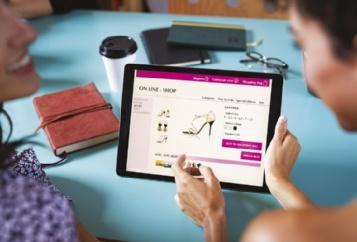
L’ACQUISTO TRAMITE SMARTPHONE E APP
Secondo Netcomm NetRetail, più della metà degli acquisti online sono effettuati tramite un dispositivo mobile (Smartphone o Tablet), il restante da PC. L’incremento dell’utilizzo dello Smartphone negli acquisti eCommerce rispetto al pre-pandemia - passato dal 34% nel 2019 all’attuale 48% - è stato dovuto principalmente all’aumento degli acquisti via App e sembra aver raggiunto un equilibrio
XIII MARKETS >
nel 2023. Sebbene lo Smartphone e le App non sembrino destinate a diventare l’unica modalità di acquisto online, hanno assunto un ruolo fondamentale per la gestione “smart” degli acquisti - basti pensare alle modalità di autenticazione necessarie nella fase di pagamento, spesso gestibili tramite riconoscimento facciale o fingerprinting.
Oltre a questo, lo Smartphone è diventato l’anello di congiunzione tra il retail fisico e il digitale, arricchendo anche l’esperienza di acquisto nel punto di vendita: non solo è il touchpoint digitale più frequentemente attivato prima di concludere un acquisto in negozio, ma consente anche ai consumatori di essere riconosciuti, avere un profilo e vantaggi personalizzati, rendere l’esperienza di acquisto “sociale”, pagare con un “tap” e ricevere assistenza nella fase di post-vendita.
Alcune considerazioni finali per comprendere quanto l’evoluzione digitale e l’eCommerce siano leve di crescita fondamentali, perché rappresentano un fattore abilitante e un’opportunità di modernizzazione imprescindibile. Infatti, il digital retail complessivo vale oggi 71 miliardi di euro ed è il primo driver di crescita dell’economia italiana. Ha contribuito per il 40,6% alla crescita di fatturato totale delle attività economiche nel quinquennio 2016-2020, coinvolgendo oltre 723mila imprese. Oggi, il digital retail è un comparto che occupa circa 378 mila lavoratori nel nostro Paese.

Tra i punti importanti da tenere presente per il futuro si segnalano l’importanza di sostenere: il proximity commerce, che permette l’integrazione tra i grandi player del commercio elettronico e i piccoli negozianti, che possono raggiungere i clienti residenti nelle
zone limitrofe; il Made in Italy, valorizzando digitalmente il patrimonio artistico, culturale, artigianale, paesaggistico, le eccellenze enogastronomiche e produttive nazionali; la creazione dei “piccoli Mall digitali locali”, consorziando le imprese artigianali e del commercio con la nascita di poli locali di offerta, in grado di servire sia la domanda di prossimità che l’export delle eccellenze a livello internazionale; il modello dei distretti industriali, che ha permesso all’Italia di crescere negli ultimi anni, promuovendo la nascita di distretti digitali, che non abbiano più nella sola prossimità il catalizzatore aggregante, ma dove il collante deve essere la complementarità nei prodotti e nei servizi; le iniziative per incanalare l’offerta del Made in Italy delle aziende italiane sui Marketplace internazionali (oltre 400), sostenendo il finanziamento per le nuove figure di Export digitale e promuovendo l’integrazione con i Marketplace internazionali.
Italy, the buying habits of Italians and the new territories in which the retail sector is expanding. B2c eCommerce in Italy will reach €54 billion in 2023 (+13%)
The retail world is taking on a new configuration giving rise to innovative experiential and service models generated by the interaction between digital and human elements. New digital spaces and omnichannel customer behaviors are reshaping customer engagement models and retail dimensions. From physical, to digital, to virtual, to social, to live. Moreover, according to the “Netcomm NetRetail” research, the shopping experience is increasingly omnichannel: four out of ten Italian consumers inquire online before buying in store. The Smartphone is the link between physical and digital retail.
“The Extended Retail: from Metaversi to Space Commerce”,this was the title of the Netcomm Forum 2023 was an opportunity to
XIV MARKETS
Netcomm Forum 2023: presented the numbers of the eCommerce market in
>

discuss the new territories in which retail has expanded in the very last few years and which will represent the opportunities of the near future.
But let’s take a step back and start from some premises that only figures and numbers can provide: in 2023 online purchases by Italians grew by 13% and will reach 54 billion euros. Products mark +8% compared to 2022 and will be worth 35.2 billion at the end of the year, while Services will touch 18.8 billion (+22%). In Products, after the generalized slowdown in growth in 2022, it is Clothing, Beauty and Information Technology that are the most dynamic sectors today (with increases of around +10%), while the progression of Food & Grocery slows down (+1% compared to twelve months ago). Among services, growth continues in Tourism & Transportation (+27% over 2022) and Event Ticketing. Online penetration of total Retail purchases is 12%, stable compared to 2022. These are just some of the updated data on the eCommerce market in Italy, according to the latest survey of the Netcomm B2C eCommerce Observatory - School of Management of the Politecnico di Milano, which was presented at the Netcomm Forum - the reference event for the digital world on the issues of eCommerce evolution.
“Italians’ eCommerce purchases will record a double-digit growth trend in 2023 as well: on the one hand, services are experiencing a

‘second youth,’ while products are going through a phase of more controlled growth, partly due to inflation. In particular, product eCommerce, despite the fact that it is now perceived as central and indispensable for the future development of Retail, is facing several challenges, such as the tensions between innovation and sustainability (economic, social and environmental) and the scarcity of resources and skills, logistical and otherwise,” says Valentina Pontiggia, Director of the Netcomm - Politecnico di Milano B2c eCommerce Observatory. “Certainly, retailers have understood a fundamental point: eCommerce and, more generally, technological innovation (including Metaverse, Augmented/Virtual Reality and Artificial Intelligence) can help extend the concept of ‘space-time’ in the relationship between brand and consumer.”
Comments Roberto Liscia, President of Netcomm: “On the one hand, inflation has generated an increasing focus on price by consumers, while reshoring and redefinition of production have reduced the margins of technology and eCommerce supply chains. Artificial Intelligence, Blockchain, Augmented Reality, Metaverse, and NFT are opening up new horizons and potential in Extended Retail, but they also bring with them new challenges that businesses, especially small and medium-sized ones, cannot face alone. For this reason, it is essential that the government, including through
XVI MARKETS
>

the National Recovery and Resilience Plan, support this 4.0 evolution of the sector, take charge of digital training and support the aggregation of SMEs into consortia to help them become competitive even at the international level. The enhancement of Made in Italy also goes through this.”
THE PROFILE OF ONLINE BUYERS

According to the “Netcomm NetRetail” research, although the number of online shoppers, which has stabilized at around 33 million, is not expected to grow in 2023, the growth trend of the last 10 years leads to interpret this figure more as a reabsorption of the pandemic boom than as a halt in the digitalization path of consumers in Italy.
Moreover, in the last three years, the growth of habitual online shoppers (people who buy on average at least once a month) has been 5.5 times that of sporadic shoppers (people who report fewer than three purchases in the quarter): habituals reached 24.4 million this year, indicating that eCommerce has now entered the shopping habits of Italian consumers. Regulars, making 90 percent of transactions online and with receipts of generally higher than average value, generate most of the total value of online purchases (93 percent).
While in the early stages of the advent of eCommerce, the average age of shoppers was 36 years old, today it has risen significantly (46 years old on average) and the share of shoppers in large urban centers has declined: in short, the profile of online shoppers is gradually approaching that of the entire population.
THE OMNICHANNEL SHOPPING EXPERIENCE
Also according to the Netcomm NetRetail survey, the Italians’ shopping experience is increasingly omnichannel: digital also becomes a resource to guide the purchase decision, even if it then ends up in a physical store. In fact, in 40 percent of cases, Italian consumers inform themselves online before buying in store, mainly by consulting an online retailer’s website or product/service, using a search engine or comparator (of offers or features) and suggestions found via social (comments and ratings).
The average incidence of consulting online services varies widely by category, reaching a frequency of three out of four purchases for Electronics products, followed by 70 percent for Sports Equipment. At the same time, the store also plays a role in helping the consumer finalize the online purchase: in one in four cases, in fact, the online purchase was preceded by a visit to a physical store.
PURCHASING VIA SMARTPHONES AND APPS
According to Netcomm NetRetail, more than half of online purchases are made via a mobile device (Smartphone or Tablet), the remainder from a PC. The increase in Smartphone usage in eCommerce purchases compared to pre-pandemic - from 34 percent in 2019 to the current 48 percent - was mainly due to the increase in App purchases and seems to have reached an equilibrium in 2023. Although the Smartphone and Apps do not seem destined to become the only mode of online shopping, they have taken on a key role in the “smart” management of purchases-just think of the authentication methods required at the payment stage, which can often be managed through facial recognition or fingerprinting.
XVIII MARKETS
>

In addition to this, the Smartphone has become the link between physical and digital retail, also enriching the shopping experience at the point of sale: not only is it the digital touchpoint most frequently activated before concluding a purchase in store, but it also allows consumers to be recognized, have a personalized profile and benefits, make the shopping experience “social,” pay with a “tap,” and receive assistance in the after-sales phase. Some final considerations to understand how digital evolution and eCommerce are key growth levers because they represent an enabling factor and an indispensable modernization opportunity. In fact, total digital retail is now worth 71 billion euros and is the top growth driver of the Italian economy. It contributed 40.6 percent to the total turnover growth of economic activities in the five-year period 2016-2020, involving more than 723 thousand businesses. Today, digital retail is a sector that employs about 378 thousand workers in our country.
Important points to keep in mind for the future include the impor-
tance of supporting: proximity commerce, which allows integration between large e-commerce players and small retailers, who can reach customers residing in neighboring areas; Made in Italy, digitally enhancing the artistic, cultural, artisanal, landscape heritage, and national food and wine and manufacturing excellence; and the creation of “small local digital malls,” consorting artisanal and commerce businesses with the creation of local supply hubs, capable of serving both proximity demand and the export of excellence at the international level; the model of industrial districts, which has enabled Italy to grow in recent years, promoting the birth of digital districts, which no longer have proximity alone as the aggregating catalyst, but where the glue must be complementarity in products and services; initiatives to channel the Made in Italy offerings of Italian companies on international Marketplaces (more than 400), supporting funding for new digital export figures and promoting integration with international Marketplaces.

XX MARKETS

Maemi, when made in Italy stands out
L’azienda italiana da oltre 50 anni produce sandali da donna fatti in Italia avvalendosi dei migliori materiali, accuratamente selezionati. È, inoltre, specializzata nella realizzazione di sandali dal numero 31 al 46.
La forza di Maemi nasce da una cultura calzaturiera capace di convincere e fidelizzare i clienti nei confronti di una linea esclusiva di sandali Donna.
L’attenta selezione dei pellami, la ricerca dei colori di tendenza, la cura e l’amore per i dettagli, sono le caratteristiche tipiche della lavorazione artigianale Made in Italy. Disegnate pensando alla donna d’oggi, assoluta protagonista del suo tempo, la linea Maemi è pensata per un pubblico che sceglie da anni la “Comoda-Moda”. Una calzatura che permette di camminare con più dinamicità.
La donna che dà importanza alla comodità, al design e ai vantaggi salutistici ha bisogno di una calzatura che abbia stile e funzionalità, in cui coesistono naturalezza ed estetica. “Offriamo un controllo accurato durante i vari processi di lavorazione, dalla fase iniziale di disegno del modello, al taglio, orlatura, assemblaggio, fino l’inscatolamento del prodotto”. Grazie a questo livello di cura i sandali Maemi, realizzati in modo artigianale e dalle rifiniture hitech, continuano a conquistare il pubblico.
The italian company has been producing women’s sandals made in Italy for over 50 years using the best materials, carefully selected. It is, in addition, specialized in making sandals from size 31 to 46.


Maemi’s strength stems from a footwear culture capable of convincing and building customer loyalty to an exclusive line of women’s sandals. The careful selection of leathers, the search for trendy colors, the care and love for details, are the typical features of Made in Italy craftsmanship. Designed with today’s woman in mind, the absolute protagonist of her time, the Maemi line is designed for a public that has been choosing “Comfortable-Fashion” for years. A footwear that allows walking with more dynamism.
The woman who values comfort, design and health benefits needs footwear that has style and functionality, in which naturalness and aesthetics coexist. “We offer careful control during the various manufacturing processes, from the initial stage of pattern design, to cutting, hemming, assembling, and boxing the product”. Thanks to this level of care, Maemi’s handcrafted sandals with hi-tech finishes continue to win over the public.
XXII
SOURCING

Ci traccia una breve storia del brand Charlotte?
L’azienda nasce negli anni 90 sul Lago di Garda, direi quasi per caso. Lavorando in zona mi ero accorto che c’era una forte richiesta di prodotti italiani da parte dei turisti, soprattutto tedeschi e austriaci, che affollavano Riva e le cittadine rivane. Tuttavia, nei negozi si trovavano solo borse nere e marroni, che poco rappresentavano la creatività e l’estro del Made in Italy. Così mi sono messo in contatto con un produttore e ho iniziato a proporre un Made in Italy di qualità e pieno di creatività. Il primo negozio l’ho aperto a Malcesine e in breve tempo è diventato un riferimento nella zona: il prodotto che proponevo, realizzato con pellami italiani dagli artigiani locali e con i colori vitali del lago – il giallo limone, l’azzurro del cielo, il verde dell’acqua – faceva la differenza. Al primo punto vendita ne sono seguiti presto altri e a fine anni 90 è nato il brand Charlotte, in omaggio a mia moglie e anche ai tanti turisti stranieri che affollavano ogni anno le coste rivane e che amavano portarsi a casa un souvenir con il nome dei loro cari.
Quanti negozi contate attualmente?
Oggi abbiamo 14 punti vendita Charlotte sul Lago di Garda, cui si aggiugnono diversi negozi in Alto Adige che lavorano quasi esclusivamente con noi, e un negozio a Ortigia, in Sicilia, ma riforniamo oltre 500 negozi nel mondo.
Che cosa caratterizza una borsa Charlotte rispetto alla concorrenza?

Sicuramente il rapporto qualità/prezzo, perché il nostro è un prodotto di altissima qualità, tutto Made in Italy (realizzato tra Marche e Toscana, mentre la sede logistica è a Salò), che però è venduto a prezzi molto inferiori rispetto ai nostri competitors. Noi stessi produciamo anche per private labels e conto terzi, e sappiamo che il prezzo con cui lo stesso prodotto è proposto al mercato è tre volte superiore. Con il brand Charlotte proponiamo pelletteria da donna fashion, mentre con l’altro nostro marchio, Marchetti, offriamo pelletteria business e uomo.
Quali sono i vostri mercati di riferimento?
Lavoriamo per circa l’80% in Italia attraverso i nostri negozi, mentre per il restante 15% in tutto il mondo – dalla Russia alla Cina, dall’Europa al Sud Africa. Circa il 5% è, invece, rappresentato dalle vendite online. La nostra clientela, tuttavia, è internazionale, perché nei nostri negozi vendiamo moltissimo ai turisti, per i quali Charlotte
XXIV SOURCING
Luca Marchetti
Abbiamo incontrato Luca Marchetti, fondatore della pelletteria Charlotte che, dagli anni 90, è un riferimento di qualità e stile italiano sul Lago di Garda e nel mondo.
Charlotte: quality has a thousand colours
è ormai un marchio riconosciuto e apprezzato, un vero esempio di Made in Italy.
Che cosa ricerca oggi la clientela?
Oggi l’orientamento è verso una linea più pulita rispetto al passato, con piccoli accessori ma non troppo vistosi, per un prodotto passe partout, mentre fino a qualche anno fa era ricercata una borsa più estrosa e particolare. Nel periodo estivo vanno molto di moda i colori vivaci e pastello, mentre in inverno la fanno da padrone i neutri. Noi proponiamo soprattutto pelletteria in vera pelle.

Che cos’è per voi la ‘sostenibilità’?
Per noi la sostenibilità si identifica con i prodotti in vera pelle, che ‘chiudono il cerchio’ della catena alimentare e che, diversamente, diventerebbero prodotti di scarto da smaltire, quindi un rifiuto, un costo e un elemento che alimenta l’inquinamento. Inoltre, circa l’80% dei pellami che utilizziamo sono pellami riciclati e conciati al vegetale.
Parliamo di strategia retail: avete di recente aperto un nuovo punto vendita a Riva del Garda, perché questa scelta?
A marzo 2023 abbiamo aperto un nuovo punto vendita Charlotte a Riva del Garda, in piazza Catena 31, rilevando il negozio di un nostro cliente che andava in pensione, e che abbiamo completamente rimodernato. Puntiamo molto sulla presenza sul territorio, dove ormai siamo riconosciuti come un vero e proprio brand, garanzia di qualità, buon gusto e buon prezzo. A breve termine pensiamo di aprire altri punti vendita nei capoluoghi di provincia.
Dove sono previste le prossime aperture? Perché puntate sulle cittadine di provincia rispetto alle grandi città?
Abbiamo in programma di aprire, tra la fine del 2023 e l’inizio del 2024, tre nuovi punti vendita: a Padova, Venezia e Lucca. Puntiamo sulle cittadine di provincia perché qui, più che nelle grandi città, c’è ancora il piacere dello ‘struscio’ del weekend, dello shopping di prossimità e conta ancora il contatto umano e il rapporto con il punto vendita di fiducia.
Avete tuttavia anche un sito di e-commerce… È un aspetto del nostro business che abbiamo sviluppato soprattutto per rispondere a specifiche esigenze nate nel rapporto con i nostri clienti, soprattutto stranieri, che ci conoscono e apprezzano e che desiderano acquistare ancora da noi, ma hanno difficoltà a
raggiungere un nostro punto vendita. Tuttavia, ritengo che il nostro prodotto, per essere apprezzato al meglio, vada visto e toccato. Solo così se ne percepisce appieno la qualità e il valore.
Da anni partecipate a Expo Riva Schuh & Gardabags: qual è il ruolo di questo evento per il vostro business?
Abbiamo preso parte per due stagioni a Expo Riva Schuh e poi siamo stati tra i fautori, insieme agli organizzatori, della nascita di Gardabags, fiera alla quale partecipiamo fin dalla prima edizione. Per noi è l’appuntamento di riferimento per incontrare i grandi e importanti buyer e le catene di negozi internazionali. Partecipiamo anche a Mipel, dove abbiamo contatti soprattutto con le piccole boutique italiane e straniere.
Can you give us a brief history of the Charlotte brand?
The company was founded in the 1990s on Lake Garda, I would say almost by chance. Working in the area, I had realised that there was a strong demand for Italian products from tourists, especially Germans and Austrians, who flocked to Riva and the small towns of Rivano. However, only black and brown bags were to be found in the shops, which scarcely represented the creativity and flair of Made in Italy. So I got in touch with a manufacturer and started to propose quality Made in Italy full of creativity. I opened my first shop in Malcesine and it quickly became a reference point in the
XXV SOURCING >
We met Luca Marchetti, founder of the leather goods company Charlotte, which has been a reference point for quality and Italian style on Lake Garda and around the world since the 1990s.
area: the product I was proposing, made with Italian leather by local artisans and with the vital colours of the lake - lemon yellow, the blue of the sky, the green of the water - made the difference. The first shop was soon followed by others, and at the end of the 1990s the Charlotte brand was born, as a tribute to my wife and also to the many foreign tourists who flocked to the Rivan coast every year and loved to take home a souvenir with the name of their loved ones.
How many shops do you currently count?
Today we have 14 Charlotte shops on Lake Garda, to which we add several shops in South Tyrol that work almost exclusively with us, and a shop in Ortigia, Sicily, but we supply over 500 shops worldwide.
What characterises a Charlotte bag compared to the competition?


Certainly the quality/price ratio, because ours is a very high quality product, all Made in Italy (made between the Marche and Tuscany, while the logistics centre is in Salò), but sold at much lower prices than our competitors. We ourselves also produce for private labels and third parties, and we know that the price at which the same product is proposed to the market is three times higher. With the Charlotte brand, we offer fashionable women’s leather goods, while with our other brand, Marchetti, we offer business and men’s leather goods.
What are your target markets?
We work for about 80 per cent in Italy through our shops, and for the remaining 15 per cent worldwide - from Russia to China, from Europe to South Africa. About 5 per cent is online sales. Our clientele, however, is international, because in our shops we sell a lot to tourists, for whom Charlotte is now a recognised and appreciated brand, a true example of Made in Italy.
What do customers look for today?
Today the orientation is towards a cleaner line than in the past, with small but not too showy accessories, for a passe partout product, whereas until a few years ago a more whimsical and special bag was sought after. In summer, bright and pastel colours are very much in fashion, while in winter, neutrals are in vogue. We mainly offer genuine leather goods.
What is ‘sustainability’ for you?
For us, sustainability means genuine leather products, which ‘close the circle’ of the food chain and which, otherwise, would become waste products to be disposed of, thus a waste, a cost and an element that feeds pollution. Moreover, about 80% of the leathers we use are recycled and vegetable tanned.
Let’s talk about retail strategy: you have recently opened a new shop in Riva del Garda, why this choice?
In March 2023, we opened a new Charlotte shop in Riva del Garda, at Piazza Catena 31, taking over the shop of one of our customers who was retiring, and which we have completely modernised. We bet a lot on our presence in the area, where we are now recognised as a real brand, a guarantee of quality, good taste and good price. In the short term we plan to open more sales outlets in the provincial capitals.
Where are the next openings planned? Why are you focusing on provincial towns as opposed to big cities?
We plan to open three new sales outlets between the end of 2023 and the beginning of 2024: in Padua, Venice and Lucca. We are focusing on provincial towns because here, more than in the big cities, there is still the pleasure of the weekend ‘struscio’, of proximity shopping, and human contact and the relationship with the trusted point of sale still count.
However, you also have an e-commerce site...
It is an aspect of our business that we have developed mainly to respond to specific needs that arose in the relationship with our customers, especially foreign ones, who know and appreciate us and who still want to buy from us, but find it difficult to get to one of our shops. However, I believe that our product, to be best appreciated, must be seen and touched. Only then can one fully perceive its quality and value.
You have been taking part in Expo Riva Schuh & Gardabags for years: what is the role of this event for your business?
We took part in Expo Riva Schuh for two seasons and then we were among the promoters, together with the organisers, of the birth of Gardabags, a fair in which we have participated since the first edition. For us it is the reference appointment for meeting large and important buyers and international chain shops. We also participate in Mipel, where we have contacts mainly with small Italian and foreign boutiques.
XXVI SOURCING

L’apertura dei confini dopo il Covid ha permesso finalmente il ritorno a Expo Riva Schuh & Gardabags di nazioni che negli ultimi anni erano rimaste escluse a causa di vincoli e restrizioni sugli spostamenti. Ne abbiamo parlato con Ying Zhang e Valentina Planchestainer, entrambe Sales & Exhibition Executive di Riva del Garda Fierecongressi.
Durante l’edizione di giugno assistiamo, dunque, al grande ritorno del Far East, di paesi e regioni che mancavano da tempo, in particolare della Cina, con +250 espositori, ma anche Giappone, Nepal, Taiwan, Indonesia e Thailandia, sia per le scarpe che per le borse. Grazie all’Hybrid Service, il servizio per la partecipazione a distanza messo in atto nelle ultime edizioni, è stato possibile mantenere i rapporti commerciali con gli espositori e i buyers cinesi che adesso hanno scelto di tornare in presenza. A dimostrazione dell’importanza di una fiera come questa per intrattenere relazioni di business, fare nuovi incontri e dare vita a sinergie proficue. Tornano anche gli espositori dell’India, in numeri più alti grazie anche alla collaborazione con l’associazione Council for Leather Export, e si nota un’importante presenza del Pakistan, che cresce di edizione in edizione. Inoltre, i produttori asiatici richiamano un consistente numero di buyers, a giugno ci aspettiamo un numero superiore di partecipanti rispetto alla scorsa edizione, provenienti da oltre 100 paesi nel mondo. Le collaborazioni non si esauriscono con gli espositori, ma comprendono anche rapporti con le Istituzioni e le Associazioni di categoria, l’obiettivo è di tenere unito tutto il settore, prima, durante e dopo la fiera, così da portare ad una crescita del mercato continua nel tempo.
Durante l’edizione di giugno saranno presenti tutti i distretti rappresentanti delle principali aree di produzione in Cina, in particolare ci sarà con uno stand istituzionale la Municipalità di Wenzhou, una città-prefettura situata nella parte sud-orientale della provincia cinese dello Zhejiang. Si tratta della provincia di riferimento e seconda per produzione in Cina, che ha visto in Expo Riva Schuh & Gardabags la piattaforma di lancio verso l’internazionalità. Presenterà il distretto produttivo di pelletteria e di calzatura, uno dei più importanti in Cina, insieme ai loro progetti di sviluppo strategico per il futuro. Inoltre, per la prima volta sarà presente CLIA - China Leather Industry Association, con una collettiva di aziende di scarpe, tra cui modelli per bambini, ragazzi e adulti, e borse, casual e da sera. Riguardo a innovazione e sostenibilità, CLIA inoltre dichiara “I nostri espositori hanno preparato con cura i prodotti più recenti e più adatti alle esigenze dei consumatori europei. Alcuni espositori


XXVIII FAIRS
Valentina Planchestaine
I paesi asiatici tornano, più numerosi di prima, a popolare Expo Riva Schuh & Gardabags durante l’edizione di giugno 2023.
Aumenta la superficie espositiva del quartiere fieristico per ospitare le tante novità, tra calzature e borse, presentate dagli espositori.
The big comeback in the presence of the Far East
>
Ying Zhang

hanno utilizzato biomateriali riciclati conformi al Global Renewable Standard (GRS) per produrre borse, dimostrando la responsabilità e l’impegno delle aziende cinesi”.
CLIA, insieme alle figure più importanti delle maggiori Associazioni asiatiche, sarà presente durante il Summit promosso in collaborazione con CIFA - Confederation of International Footwear Association, che si terrà domenica 18 giugno 2023 dalle 11:00 alle 12:30. Il titolo dell’evento è: “La domanda incontra l’offerta: sfide e opportunità sulle tendenze dei consumatori e sulla catena di approvvigionamento nel mondo post-pandemia. I leader dell’industria calzaturiera, sia per la domanda che per l’offerta, discutono del futuro del sourcing di calzature”.

Expo Riva Schuh & Gardabags è una manifestazione in continua crescita, che promuove attraverso azioni concrete incontri di business a raggio internazionale e temi attuali come quello della sostenibilità, avendo sempre uno sguardo attento alle tendenze del
During the June edition we therefore witnessed the great return of the Far East, of countries and regions that had been missing for some time, in particular China, with +250 exhibitors, but also Japan, Nepal, Taiwan, Indonesia and Thailand, both for shoes and bags. Thanks to the Hybrid Service, the remote participation service implemented at the last editions, it was possible to maintain business relations with Chinese exhibitors and buyers who have now chosen to return in attendance. This demonstrates the importance of a trade fair like this for maintaining business relations, making new meetings and creating profitable synergies.
Exhibitors from India are also returning, in higher numbers thanks also to the collaboration with the Council for Leather Export association, and an important presence is noted from Pakistan, which is growing from edition to edition. In addition, Asian manufacturers attract a significant number of buyers, in June we expect a higher number of participants than last edition, from over 100 countries worldwide. Collaborations do not end with exhibitors, but also include relationships with institutions and trade associations. The aim is to keep the entire sector united, before, during and after the fair, so as to bring about continuous market growth over time. During the June edition all the districts representing the main production areas in China will be present. In particular, the Municipality of Wenzhou, a city-prefecture located in the south-eastern part of the Chinese province of Zhejiang, will be there with an institutional stand. This is the reference province and the second largest in terms of production in China, which has seen Expo Riva Schuh & Gardabags as the launch pad towards internationality. It will present the leather goods and footwear production district, one of the most important in China, together with their strategic development projects for the future. In addition, CLIA - China Leather Industry Association - will be present for the first time, with a collective of shoe companies, including models for children, teenagers and adults, and bags, casual and evening wear. Concerning innovation and sustainability, CLIA also states “Our exhibitors have carefully prepared the latest and most suitable products for the needs of European consumers. Some exhibitors used recycled biomaterials compliant with the Global Renewable Standard (GRS) to produce bags, demonstrating the responsibility and commitment of Chinese companies”.
The opening of the borders after Covid has finally allowed the return to Expo Riva Schuh & Gardabags of nations that had been excluded in recent years due to travel constraints and restrictions. We spoke about this with Ying Zhang and Valentina Planchestainer, both Sales & Exhibition Executives of Riva del Garda Fierecongressi.
CLIA, together with leading figures from the major Asian Associations, will be present during the Summit promoted in cooperation with CIFA - Confederation of International Footwear Association, which will be held on Sunday 18 June 2023 from 11:00 am to 12:30 pm. The title of the event is: ‘Demand Meets Supply: Challenges and Opportunities on Consumer Trends and Supply Chain in the Post-Pandemic World. Leaders from both the demand and supply side of the footwear industry discuss the future of footwear sourcing”. Expo Riva Schuh & Gardabags is an ever-growing event that promotes business meetings on an international scale and current topics such as sustainability through concrete actions, always keeping a close eye on industry trends brought by small and large exhibitors and manufacturers.
XXX FAIRS
Asian countries will return, more numerous than before, to populate Expo Riva Schuh & Gardabags during the June 2023 edition. The exhibition area of the fairgrounds will increase to host the many new products, including shoes and bags, presented by the exhibitors.
Fonte: National Bureau of Statistics, studio Ice in esclusiva per Expo Riva Schuh & Gardabags





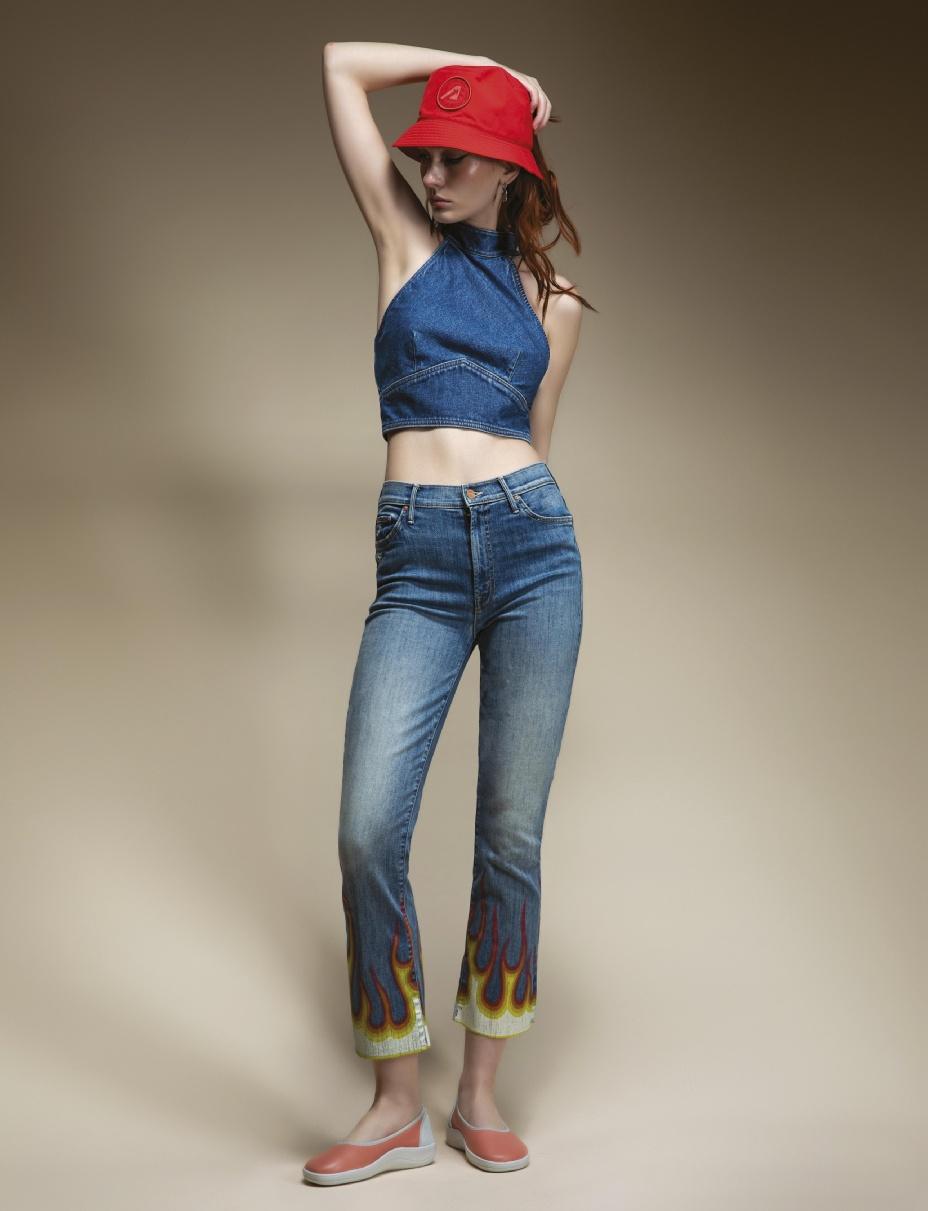





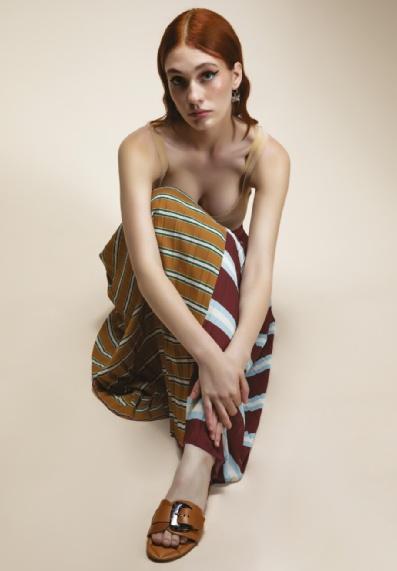
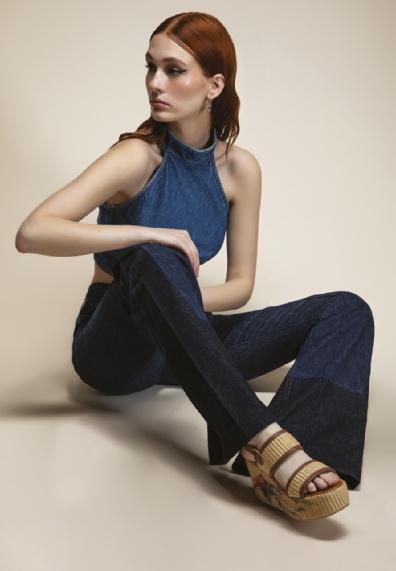








www.lyfitshoes.com | info@lyfitshoes.com EXPO RIVA SCHUH - Pav. B4 Stand B23

Quiet luxury
by Ursula Beretta
Si chiama quiet luxury ma, di fatto, non è altro se non quel minimalismo di ritorno che, dalle serie tv ai tribunali losangelini (vedere alla voce Gwyneth Paltrow) fino alle ultime passerelle, passando per la riscoperta di griffe come Helmut Lang, riflette quella sempiterna idea di lusso discreto che piacerebbe a Carolyn Bessette Kennedy. Che, guarda caso, a oltre 20 anni dalla sua scomparsa, rimane un’icona di riferimento transgenerazionale e protagonista di innumerevoli profili social che celebrano e ripercorrono i fondamenti dei suoi look intramontabili. Ieri, oggi, domani. Nessun logo, tinte unite e bando ai decori; e ancora fit impeccabili e tailoring senza tempo: il suo guardaroba di capi dalle linee pulite ed essenziali è una lezione di stile che torna prepotentemente alla ribalta. Anche se, forse, non se n’è mai andata. Uno stile, peraltro, tranquillo, silenzioso, ma firmato dalle più importanti maison in chiave smaccatamente low profile e intimamente lussuosa. Del resto, quello che l’America ha individuato come un vero e proprio lifestyle che trascende il mero abbigliamento per farsi estetica di vita, ha un potere di attrazione inversamente proporzionale alla possibilità di fruirne perché, a fare la differenza, è sempre e solo una cosa sola, l’esclusività. Che dipende, ça va sans dire, dalla disponibilità economica di pochi privilegiati. Gira che ti rigira, la chimera della progressiva democratizzazione della moda trova qui l’ennesimo ostacolo che, di base, appartiene alla sua stessa essenza. Un fuoco amico, insomma, che pur non avendo nulla di
emozionante - preferite un essenziale maglione di cachemire o un pirotecnico abito da gran soirée? – ha oramai raggiunto un coefficiente ispirazionale immenso. Niente, però, nasce per caso e la moda, forte della sua ciclicità, ancora una volta porta alla ribalta una tendenza che affonda le radici direttamente nelle nuove classi sociali che, nel XIXmo secolo, si stavano rapidamente affermando e, al posto di scimmiottare lo stile obsoleto dell’aristocrazia, imposero i loro costumi prendendo così decisamente – e visivamente – le distanze da loro.
Ma spostando la lancetta del tempo più vicino ai giorni nostri, la mente corre, insieme alla Bessette, alla deriva minimalista degli anni ‘90 del secolo scorso quando stilisti come Donna Karan, Miuccia Prada prima e Max Mara poi, Jil Sander, Phoebe Philo, Ralph Lauren e molti altri elevarono a regola, perfetta per fuggire al chiassoso e scintillante edonismo del decennio precedente, quella discrezione riduzionista dal privilegiato registro espressivo. Un modo di vestire che rifletteva l’understatement reale di quegli anni e delle sue figure di riferimento (basti pensare a Steve Jobs e al suo celebre dolcevita nero firmato Issey Miyake) che non avevano bisogno di urlare il loro status ma semplicemente di farlo intuire con eleganza. Perché il vero lusso non è mai gridato, si percepisce. Le ragioni del recente ritorno sotto i riflettori di questo approccio discreto e poco plateale dell’abbigliamento - anche per chi ricco non è - sono molteplici, a partire dagli effetti della pandemia, assidua frequentatrice del banco degli imputati.


11 SLIDING DOORS
11
>
Non solo l’isolamento forzato ha mostrato l’eccedenza del guardaroba e ha limitato le necessità vestimentiarie a pochi capi, ma la crisi economica globale ha portato a puntare su capi di abbigliamento che, al pari di investimenti, resistessero al passare del tempo e fossero, di conseguenza, più durevoli e versatili. E non è tutto. La questione economica e quella estetica sono andate di pari passo con le logiche ambientaliste, sempre più pressanti e finalmente ascoltate, che impongono di comprare meno, meglio e di qualità privilegiando quel contenuto di artigianalità, di tradizione, di robustezza che, poi, di fatto, altro non è che la quintessenza del lusso. Ops, del quiet luxury! Via libera a una probitas che si priva, coscientemente, del superfluo e che rifugge i loghi; che cerca materiali nobili e di pregio ma sta alla larga da ogni tipo di eccesso, decori in primis, ed esalta una manifattura slow e di qualità. Semplicità è la parola d’ordine delle nuove divise contemporanee che indugiano su linee definite, un tailoring perfetto e una palette di colori basica e rigorosa, in cui è il prodotto che vince sul trend e dove la purezza – di ispirazione, di tinte, di immaginario – è un valore aggiunto.
Noioso? Anche no. Si pensi solo alle borse intrecciate di Bottega Veneta; alle ballerine elastiche di The Row o agli anfibi di Celine senza dimenticare il cachemire di Loro Piana o le creazioni di Gabriela Hearst in una silenziosa sequela di completi e maglioni, t-shirt e cappotti assolutamente anonimi se non fosse per le loro etichette capaci di fugare ogni ragionevole dubbio. E se dovessero sussistere ancora delle perplessità, sarebbe sufficiente dare un occhio ai portavoce di questo status quo al di fuori delle passerelle. Se già lo scorso anno Sienna Miller, nella serie “Anatomy of a Scandal”, aveva incantato il pubblico non solo per la sua bravura ma anche per i capi che indossava (e che sono una replica quasi esatta del suo guardaroba quotidiano) epitome di un design minimale ed esclusivo, di recente la quarta stagione dei “Succession” targata HBO si è rivelata un abecedario perfetto di uno stile dall’apparente normalità che sottende materiali di pregio per farsi cifra stilistica silenziosa ma immediatamente riconoscibile. E che dire di Gwyneth Paltrow, già adepta dell’essenzialità degli anni ‘90 – rivedere il suo “Sliding Doors” per averne conferma - e paladina di un minimalismo a stelle e strisce riveduto e corretto dalla sua etichetta Goop che ha visto schizzare alle stelle il numero di adepte dopo il suo passaggio in tribunale trasformato in un defilé al grido di less is more?
La star americana, accusata di aver provocato un incidente sulle piste da sci dello Utah, ha scelto di trasformare la sua difesa in un reality fashion che ha tenuto incollate ai social migliaia di persone nel mondo, intente a ricostruire l’esatta provenienza dei suoi outfit sobri ma griffatissimi.
La lezione è una sola, come del resto non si stancava di ripetere chi, nel secolo scorso, fu la prima a creare capi understated capaci di far risaltare soprattutto il carattere di chi li indossava. Era fermamente convinta che il lusso non dimorasse nelle ricchezze e negli ornamenti, ma nell’assenza di volgarità. Coco Chanel, naturalmente, per la quale la personalità contava più di ogni cosa e soprattutto, ora come allora, era convinta ci fosse bisogno di una moda capace di superare i rivolgimenti e le tendenze passeggere, andando oltre il tempo, per rappresentare il vero lusso, quello di essere sé stessi con quello che si indossa. Ma questa è un’altra storia.
It’s called quiet luxury but, in fact, it’s nothing more than that throwback minimalism that, from TV series to Los Angeles courts (see under Gwyneth Paltrow) to the latest catwalks, via the rediscovery of designer labels such as Helmut Lang, reflects that everlasting idea of understated luxury that Carolyn Bessette Kennedy would love. Who, coincidentally, more than 30 years after her passing, remains a transgenerational reference icon and the star of countless social profiles celebrating and retracing the fundamentals of her timeless looks. Yesterday, Today, Tomorrow. No logos, solid colors, and banishment of embellishments; and still impeccable fits and timeless tailoring: her wardrobe of garments with clean, essential lines is a lesson in style that is making a powerful comeback. Although, perhaps, it never left. A style, moreover, quiet, but signed by the most important maisons in a blatantly low profile and intimately luxurious key. After all, what America has identified as a true lifestyle that transcends mere clothing to become an aesthetic of life, has a power of attraction inversely proportional to the possibility of enjoying it because, what makes the difference, is always and only one thing, exclusivity. Which depends, ça va sans dire, on the economic availability of the privileged few. Round and round, the chimera of the progressive democratization of fashion finds here yet another obstacle that, basically, belongs to its very essence. A friendly fire, in short, that while having nothing exci-
12 SLIDING DOORS
“Yesterday, Today, Tomorrow. No logos, solid colors, and banishment of embellishments; and still impeccable fits and timeless tailoring...”
ting about it - would you prefer an essential cashmere sweater or a pyrotechnic grand soiree gown? - has by now reached an immense inspirational coefficient. Nothing, however, comes about by chance, and fashion, on the strength of its cyclical nature, once again brings to the fore a trend that has its roots directly in the new social classes that, in the 19th century, were rapidly establishing themselves and, instead of aping the obsolete style of the aristocracy, imposed their own costumes, thus decisively - and visually - distancing themselves from them.
But moving the hand of time closer to the present day, the mind races, along with the Bessette, to the minimalist drift of the 1990s of the last century when designers such as Donna Karan, Miuccia Prada first and Max Mara later, Jil Sander, Phoebe Philo, Ralph Lauren and many others elevated to a rule, perfect for escaping the boisterous and glittering hedonism of the previous decade, that reductionist discretion with a privileged expressive register. A way of dressing that reflected the real understatement of those years and its leading figures (just think of Steve Jobs and his famous black turtleneck by Issey Miyake) who did not need to shout their status but simply to make it elegantly intuited. Because true luxury is never shouted, it is perceived. The reasons for the recent return to the spotlight of this discreet and unspectacular approach to clothing-even for those who are not rich-are many, starting with the effects of the pandemic, a frequent visitor to the dock. Not only did enforced isolation show wardrobe surplus and limit clothing needs to a few items, but the global economic crisis led to a focus on clothing that, like investments, would stand the test of time and be, as a result, more durable and versatile. And that is not all. The economic and aesthetic issues have gone hand in hand with the environmentalist logics, which are increasingly pressing and finally being listened to, and which impose to buy less, better and of quality by privileging that content of craftsmanship, of tradition, of sturdiness that, then, in fact, is nothing but the quintessence of luxury. Oops, of quiet luxury! Green light to a probitas that deprives itself, consciously, of the superfluous and eschews logos; that seeks noble and valuable materials but stays away from any kind of excess, decorations in primis, and exalts slow and quality manufacturing. Simplicity is the watchword of the new contemporary uniforms that linger on defined lines, perfect tailoring, and a basic and rigorous
color palette, where it is the product that wins out over the trend and where purity - of inspiration, of hues, of imagery - is an added value.
Boring? Also not. Just think of Bottega Veneta’s woven bags; The Row’s stretch ballerinas or Celine’s amphibians, without forgetting Loro Piana’s cashmere or Gabriela Hearst’s creations in a silent succession of suits and sweaters, t-shirts and coats that would be absolutely anonymous were it not for their labels capable of dispelling all reasonable doubt. And should there still be any perplexity, it would be enough to take a look at the spokespersons of this status quo outside the catwalks. If already last year Sienna Miller, in the series “Anatomy of a Scandal,” had enchanted the audience not only for her bravura but also for the garments she wore (and which are an almost exact replica of her daily wardrobe) epitome of a minimal and exclusive design, recently the fourth season of the HBO-targeted “Succession” proved to be a perfect abecedary of a style of apparent normality that subtends fine materials to become a silent but immediately recognizable stylistic cipher. And what about Gwyneth Paltrow, already an adept of the essentiality of the 1990s - review her “Sliding Doors” for confirmation - and a champion of a stars-and-stripes minimalism revised and corrected by her Goop label that has seen the number of followers skyrocket after its passage in court turned into a defile to the cry of less is more? The American star, accused of causing an accident on the ski slopes of Utah, chose to turn her defense into a reality fashion show that kept thousands of people around the world glued to social media, intent on reconstructing the exact provenance of her understated but designer outfits.
There is only one lesson, as after all, she never tired of repeating who, in the last century, was the first to create understated garments capable of bringing out, above all, the character of the wearer. She was firmly convinced that luxury did not dwell in riches and ornaments, but in the absence of vulgarity. Coco Chanel, of course, for whom personality mattered more than anything, and above all, now as then, she was convinced there was a need for a fashion capable of transcending revolutions and passing trends, going beyond time, to represent true luxury, that of being oneself with what one wears. But that is another story.
13 SLIDING DOORS

14
OPINION LEADER
15
White Lady
The purest form of communication
Abbiamo incontrato la fondatrice dell’agenzia di comunicazione milanese, Laura Calevo, per farci raccontare un progetto di vita che attinge alla forma più antica e pura di comunicazione, lontana dai luoghi comuni e aperta alle collaborazioni
White lady nasce a Milano nel 2020, unendo le professionalità di persone che hanno già lavorato insieme in passato e che portano in dote l’eredità di importanti esperienze con brand italiani e internazionali. La scelta del nome viene da lontano e ci dice molto dello stile con il quale si propone: al contrario di quello che potrebbe sembrare, l’ispirazione viene dall’Africa, un continente che Laura Calevo, fondatrice di White Lady, ama molto e ha molto frequentato. La White Lady è, infatti, una misteriosa incisione rupestre, realizzata dai boscimani 3000 anni fa. Si trova tra i monti Brandberg, nella zona del Damaraland, nel nord della Namibia e le sue origini hanno incuriosito generazioni di archeologi e studiosi: una donna bianca preistorica, protagonista di una scena religiosa, di caccia o di battaglia, nel cuore dell’Africa sub-sahariana. La white lady è una figura che non si può definire, una donna ma anche un guerriero e uno sciamano e viene dal continente dove è nata l’umanità. La White Lady simboleggia quindi le origini della comunicazione umana, la forma più antica e primordiale, la più pura e non corrotta. E questi sono gli ingredienti che Laura Calevo cerca di mettere nel suo lavoro: un po’ di femminile, un po’ di maschile e un pizzico di magia, lontano dai luoghi comuni.
Quali sono le caratteristiche che vi contraddistinguono?
Sicuramente la professionalità, affiancata ad uno “stile famigliare” che dà grande importanza alle relazioni umane, sia tra colleghi che con i clienti. Sono convinta che questo non sia un tipo di mestiere che si possa fare bene senza un buon feeling tra le persone coinvolte. Si basa sulle relazioni, sulla fiducia e sull’affidabilità. Stare vicino al cliente nel quotidiano, in maniera propositiva e partecipata, in modo che si senta “pensato” e supportato, credo sia l’elemento che fa la differenza.
Inoltre, siamo convinti che questa sia un’epoca di reti e non di isole. Crediamo nelle connessioni, nella collaborazione, nel “mettere a fattor comune le risorse”. Da anni portiamo avanti proficue partnership con professionisti e altre agenzie, anche nostre competitor dirette. Se ci guardiamo intorno, ci rendiamo facilmente conto che oggi le imprese di maggior successo sono quelle aperte verso l’esterno, che mettono insieme i talenti migliori e che non hanno paura di esporsi, confrontarsi e mettersi in gioco.

15 OPINION LEADER
>
Come selezionate i brand da seguire?
Non li selezioniamo. Credo che ci si scelga sempre a vicenda. Anche in questo caso, penso che il feeling sia fondamentale per lavorare bene insieme e raggiungere grandi obiettivi. Nessun pregiudizio: dalla start up, alla piccola azienda, alla multinazionale, tutti i clienti possono portare grande valore, stimoli, insegnamenti. E la varietà è meravigliosa, è il bello del nostro lavoro: spaziamo tra settori e culture aziendali differenti e non ci annoiamo mai.
Quali sono i mercati a cui vi rivolgete?
Abbiamo scelto di non specializzarci in uno o più settori, vogliamo spaziare perché ci piace fare cose sempre diverse e crediamo nelle contaminazioni. Naturalmente, nel tempo ci siamo trovati più presenti in alcuni mercati, come quelli del food, fashion, design, beauty, travel, innovazione e recentemente anche il terzo settore. Trovo molto interessante lavorare sul versante corporate perché ci offre l’opportunità di imparare molto dal management delle imprese sulle dinamiche alla base di alcuni contesti aziendali e di alcuni mercati. Grazie a questo approccio non omogeneo, spesso riusciamo a costruire progetti che coinvolgono clienti di settori diversi che si avvantaggiano reciprocamente, raggiungendo un target più ampio in modo originale e con una potenza comunicativa sicuramente maggiore. Secondo la nostra esperienza, oggi attraversiamo un momento contraddittorio segnato soprattutto dall’incertezza. Lo definirei complesso, ma non negativo.
Boom digitale e sostenibilità sono sulla bocca di tutti... come vi confrontate con queste tematiche?
Ormai in tutti i progetti di comunicazione consideriamo digitale e sostenibilità. Andando per ordine, oggi non si può prescindere da una comunicazione digitale efficace, direi in tutti i settori, anche se per alcuni è più essenziale che per altri. Il mondo dei media online, sia testate giornalistiche che influencer e talent, è una parte importante del nostro lavoro in affiancamento ai media tradizionali che continuano comunque ad avere un loro ruolo, tenendo conto dei loro target e obiettivi. Quello della sostenibilità è un tema complesso: portare avanti azioni CSR, cha siano ambientali o sociali, è praticamente obbligatorio per le aziende che intendano investire sulla propria buona reputazione. Il problema è che non tutti sono pronti a mettere in campo progetti concreti e interessanti, sia per motivi di cultura aziendale, che per i budget che sarebbe necessario investire. La sfida è creare contenuti “veri” e coerenti, perché la comunicazione è solo lo step successivo. Noi, attraverso consulenti specializzati, proviamo a fare proposte anche in questo senso.
Quali caratteristiche hanno i prodotti più richiesti in questo momento?
Parlando di moda, c’è un grande ritorno della tendenza Y2K, la corrente fashion a cavallo tra il 1999 e il 2001, che fu profondamente influenzata dalla tecnologia per il suo approccio futuristico. Torna l’uso del bianco e nero e pattern scuri monocromi, intensi neri lucidi e metallizzati, e tanti accessori che danno risalto a cinturini e fibbie. Per l’abbigliamento, i pantaloni cargo, per esempio, sono comodi e cool allo stesso tempo e si possono trovare sul mercato in diverse fasce di prezzo. Questa tendenza è oggi ampiamente accolta dalla Gen-Z.
C’è un brand (anche non vostro) che vi ha particolarmente stu-
pito di recente e perché?
Potremmo fare tanti esempi. Oggi il mercato è molto volubile e la ricetta della collezione ideale si sposta su tanti fronti che si compenetrano, come per il film vincitore ai recenti Oscar “Everything everywhere all at once”. Tutto ovunque, tutto all’improvviso: la moda si fa spazio e cerca i suoi adepti. Stiamo seguendo la comunicazione per la piattaforma Emerging Talents Milan che, dal 2016, intercetta e porta a sfilare a Milano nuovi talenti che necessitano di una vetrina adeguata per incontrare stampa, buyers italiani e internazionali. Si tratta di brand provenienti da tutto il mondo, che portano nelle loro collezioni molto delle proprie culture. Alcuni esempi sono Laveau, Samir Kerzabi o The Rizkianto. In una visione più ampia, ci piacciono le nuove storie del belga Ludovic de Saint Sernin o del bolognese Marco Rambaldi. Quest’ultimo fa parte di una nuova corrente della moda, quella che è capace di sovvertire le regole del sistema come è già successo in passato, ma che mancava da un po’ di tempo. Le sue collezioni arrivano dirette come un nuovo messaggio, una dichiarazione del suo modo di fare moda, nelle sue più svariate rappresentazioni, con grande attenzione all’artigianalità, come dimostra il recupero di capi fatti all’uncinetto, assemblati con nuovi materiali.
Quali direzioni dovrà seguire la comunicazione e la vendita di moda nel prossimo futuro, secondo voi?
Se parliamo dei colossi della grande distribuzione e dei brand del fashion in generale, sicuramente la direzione è meno produzione e più qualità, con prezzi più accessibili, con attenzione alla long life del capo. Contemporaneamente, riteniamo ci debba essere più comunicazione sui servizi disponibili di care&repair. Nel settore lusso, molto curiosa e particolare è l’iniziativa da poco annunciata dalla Maison Valentino di portare nelle case dei clienti il proprio servizio personalizzato, tramite Valentino Chez Vous, un van elettrico on the road che gira tra le principali città italiane, dove la Maison non è presente con i propri negozi.
We met with the founder of the Milan-based communication agency, Laura Calevo, to hear about a life project that draws on the oldest and purest form of communication, far from clichés, and open to collaborations.
White lady was founded in Milan in 2020, uniting the professional skills of people who had already worked together in the past and who carry the legacy of important experiences with Italian and international brands. The choice of the name comes from afar and tells us a lot about the style with which it is proposed: contrary to what it might seem, the inspiration comes from Africa, a continent that Laura Calevo, White Lady’s founder, loves very much and has frequented a lot. The White Lady is, in fact, a mysterious rock carving, created by the Bushmen 3000 years ago. It is found in the Brandberg Mountains, in the Damaraland area of northern Namibia, and its origins have intrigued generations of archaeologists and scholars: a prehistoric white woman, protagonist of a religious, hunting or battle scene, in the heart of sub-Saharan Africa. The White Lady is a figure that cannot be defined, a woman but also a warrior and a shaman, and she comes from the continent where humanity was born. The White Lady thus symbolises the origins of human communication, the oldest and most primordial form, the purest and uncorrupted. And these are the ingredients that Laura
16 OPINION LEADER
Calevo tries to put in: a bit of the feminine, a bit of the masculine and a pinch of magic, far from the clichés....
What are the characteristics that set you apart?
Definitely professionalism, coupled with a ‘family style’ that gives great importance to human relations, both between colleagues and with clients, but also with journalists. I am convinced that this is not a type of job that can be done well without a good feeling between the people involved. It is based on relationships, trust and reliability. Being close to the customer on a daily basis, in a proactive and participative way, so that he feels ‘thought of’ and supported, I believe is what makes the difference.
Furthermore, we are convinced that this is an era of networks and not of islands. We believe in connections, in collaboration, in ‘pooling resources’. For years we have been pursuing fruitful partnerships with professionals and other agencies, even our direct competitors. If we look around, we easily realise that the most successful companies today are those that are open to the outside world, that bring together the best talents and are not afraid to expose themselves, confront themselves and get involved.
How do you select the brands to follow?
We don’t select them. I think we always choose each other. Again, I think the feeling is fundamental to working well together and achieving great goals. No prejudices: from the start-up, to the small company, to the multinational, all clients can bring great value, stimuli, teachings. And variety is wonderful, that’s the beauty of our work: we range across different sectors and business cultures and we never get bored.
Which markets do you target? What is the situation in these markets at the moment?
We have chosen not to specialise in one or more sectors, we want to range because we always like to do different things and we believe in contamination. Of course, some of our references have led us over time to be more present in certain markets, such as food, fashion, design, beauty, travel, innovation and recently also the third sector. I find very interesting to work in the corporate field because it gives us the opportunity to learn a lot from corporate management about the dynamics behind certain business contexts and markets. Thanks to this non-homogenous approach, we are often able to build projects involving clients from different sectors that mutually benefit each other, reaching a broader target in an original way and with certainly greater communicative power. From our experience, today we are going through a contradictory moment marked above all by the uncertainty. I would call it complex but not negative.
Digital boom and sustainability are on everyone’s lips... how do you deal with these issues?
We hardly do any more communication projects that do not take digital and sustainability into account. Going in order, today you cannot ignore effective digital communication, I would say in all sectors, even if for some it is more essential than for others. The world of online media, both newspapers and influencers and talent, is an important part of our work alongside traditional media, which still continue to play a role, taking into account targets and objectives. Sustainability is a complex issue: carrying out CSR actions,
be they environmental or social, is practically mandatory for companies that want to invest in their good reputation.The problem is that not everyone is ready to put in place concrete and interesting projects, both for reasons of corporate culture and for the budget that would need to be invested. Certainly we are all aware that in the coming years the trends in corporate and consumer communication will essentially focus on these issues. The challenge is above all to create ‘real’ and consistent content, because communication is only the next step. We, through specialised consultants, try to make proposals in this sense as well. It is a long road, not a trivial one, but it will get there.
What characteristics do the most popular products have at the moment?
Speaking of fashion, there is a big comeback of the Y2K trend, the fashion current between 1999 and 2001, which was deeply influenced by technology for its futuristic approach. Back is the use of black and white and dark monochrome patterns, intense shiny blacks and metallics, and lots of accessories emphasising straps and buckles. For clothing, cargo trousers, for example, are comfortable and cool at the same time and can be found on the market in different price ranges. This trend is now widely embraced by Gen-Z.
Is there a brand (even not yours) that has particularly surprised you recently and why?
We could give many examples. Today, the market is very fickle and the recipe for the ideal collection moves on so many fronts at once, like the recent Oscar-winning film ‘Everything everywhere all at once’. Everything everywhere all at once: fashion is making space and looking for its followers. We are following the communication for the Emerging Talents Milan platform which, since 2016, intercepts and brings to Milan new talents who need a suitable showcase to meet the press, Italian and international buyers. These are brands from all over the world, who bring much of their own cultures into their collections. Some examples are brands like Laveau, Samir Kerzabi or The Rizkianto. In a broader view, we like the new stories of Belgian Ludovic de Saint Sernin or Marco Rambaldi from Bologna. The latter is part of a new current in fashion, one that is able to subvert the rules of the system as has already happened in history, but which has not been seen for some time. His collections come straight as a new message, a declaration of his way of making fashion, in its most varied representations, with great attention to craftsmanship, as demonstrated by the recovery of crocheted garments, assembled with new materials.
What directions should fashion communication and sales take in the near future, in your opinion?
If we are talking about the giants of large-scale distribution and fashion brands in general, surely the direction is less production and more quality, with more affordable prices and attention to the long life of the garment. At the same time, we think there should be more communication on the care&repair services available. In the luxury sector, very curious and particular is the initiative recently announced by the Maison Valentino to bring its personalised service into customers’ homes, through Valentino Chez Vous, an electric van on the road that travels around the main Italian cities, where the Maison is not present with its own shops.
17 OPINION LEADER
18
Tariel Bisharyan
Emerging Talents Milan
“Ho fondato Emerging Talents Milan nel 2016, quando ho deciso di creare un’agenzia specializzata in consulenza aziendale nel settore della moda – ricorda Tariel Bisharyan. Avevo molti amici stilisti e ho notato che avevano difficoltà a creare un marchio. Erano molto talentuosi, creavano collezioni grandiose, ma avevano bisogno di un supporto imprenditoriale per sviluppare il loro business”.
Così nasce Emerging Talents Milan, realtà che ha lavorato con oltre di 100 designer provenienti da più di 50 Paesi, tra cui Gianluca Alibrando, Vitor Zerbinato, Hian Tjen, Samir Kerzabi, Faina. Ogni stagione, insieme ai marchi di abbigliamento, vengono presentati anche accessori di lusso, selezionati secondo scrupolosi criteri di qualità e artigianalità, perlopiù prodotti in edizione limitata e dall’appeal senza tempo, all’insegna dei concetti di sostenibilità puntando a zero sprechi. Ecco una piccola ma preziosa selezione di talenti emergenti.
‘I founded Emerging Talents Milan in 2016, when I decided to create an agency specialising in business consultancy in the fashion industry,’ recalls Tariel Bisharyan. ‘I had many designer friends and I noticed that they were struggling to create a brand. They were very talented, they created great collections, but they needed entrepreneurial support to develop their business’. Thus Emerging Talents Milan was born, a company that has worked with over 100 designers from more than 50 countries, including Gianluca Alibrando, Vitor Zerbinato, Hian Tjen, Samir Kerzabi, and Faina.
Every season, along with the clothing brands, luxury accessories are also presented, selected according to scrupulous criteria of quality and craftsmanship, mostly limited-edition products with timeless appeal, under the banner of zero-waste sustainability concepts. Here is a small but valuable selection of emerging talents.
18 DESIGNERS
>
“Every season, along with the clothing brands, luxury accessories are also presented, selected according to scrupulous criteria of quality and craftsmanship...”
DESIGNERS

19
Artuyt
La missione di Artuyt è condividere la bellezza e la ricchezza dell’arte armena con il mondo attraverso la realizzazione di sciarpe, cravatte e fazzoletti da taschino in materiali pregiati come seta, lana e cashmere di squisita fattura. In questo modo Artuyt dà vita alle opere degli artisti armeni, dal Medioevo all’astrattismo moderno. Ogni pezzo è un capolavoro, che richiede mesi per essere completato e presenta dettagli unici che mettono in mostra il talento e la creatività degli artisti e artigiani di Como, dove è realizzata la produzione. Non sorprende che il brand abbia collaborato con musei come il Museo d’Arte Moderna di Yerevan, il Museo Sergei Parajanov, i Musei della Santa Sede di Echmiadzin, il Museo Ervand Kochar e Matenadaran. Nel corso degli anni, Artuyt ha anche lavorato insieme ad artisti di spicco, come Christine Mkrtchyan (che collabora con Hermes), Laure Selignac, la Fabbrica di Porcellane di San Pietroburgo, Henderson, Michael Aram, Taline Gallery Portret, ecc. Il mercato di riferimento è quello statunitense, ma il brand è presente anche in Italia e punta ad espandersi negli Emirati Arabi Uniti, in Asia (in particolare in Kazakistan e Giappone), Regno Unito, Paesi Bassi e Georgia. Così come punta ad ampliare la gamma di prodotti introducendo accessori di gioielleria e set di porcellana per bambini.


Artuyt’s mission is to share the beauty and richness of Armenian art with the world by making scarves, ties and pocket handkerchiefs from exquisitely crafted fine materials such as silk, wool and cashmere. In this way, Artuyt brings to life the works of Armenian artists, from the Middle Ages to modern abstractism. Each piece is a masterpiece, taking months to complete and featuring unique details that showcase the talent and creativity of the artists and craftsmen in Como, where the production is made. Not surprisingly, the brand has collaborated with museums such as the Yerevan Museum of Modern Art, the Sergei Parajanov Museum, the Museums of the Holy See in Echmiadzin, the Ervand Kochar Museum and Matenadaran. Over the years, Artuyt has also worked with leading artists such as Christine Mkrtchyan (who collaborates with Hermes), Laure Selignac, the Porcelain Factory in St. Petersburg, Henderson, Michael Aram, Taline Gallery Portret, etc. The target market is the United States, but the brand is also present in Italy and aims to expand into the United Arab Emirates, Asia (particularly Kazakhstan and Japan), the United Kingdom, the Netherlands and Georgia. It also aims to expand its product range by introducing jewellery accessories and porcelain sets for children.
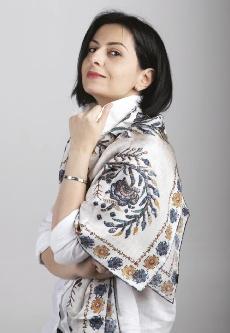
20 DESIGNERS
Olesya Sakhro

Ucraina, si ispira alla sua terra e ai suoi colori per realizzare le sue creazioni, ma anche ai dipinti che si trovavano nelle collezioni private di molti personaggi famosi nel mondo, tra cui lo stilista Kenzo Tokada e il principe ereditario austriaco Carl von Habsburg. Le sue borse utilizzano una tecnica unica e brevettata per realizzare ricami complessi e di grande valore artistico, capaci di trasmettere emozioni, dipingere un personaggio, raccontare una storia. Pezzi unici che richiedono molta dedizione e una lunga lavorazione, dove le sfumature di colore dei ricami appaiono come dipinti. Sorprende in particolare la presenza dello stesso ricamo su entrambi i lati della borsa, che fa diventare l’accessorio il vero protagonista di ogni outfit.
Ukrainian, is inspired by her homeland and its colours to make her creations, but also by the paintings in the private collections of many famous people in the world, including fashion designer Kenzo Tokada and Austrian Crown Prince Carl von Habsburg. His bags use a unique and patented technique to create complex embroideries of great artistic value, able to convey emotions, paint a character, tell a story. Unique pieces that require a lot of dedication and long workmanship, where the colour nuances of the embroidery appear as paintings. Particularly surprising is the presence of the same embroidery on both sides of the bag, making the accessory the true protagonist of each outfit.

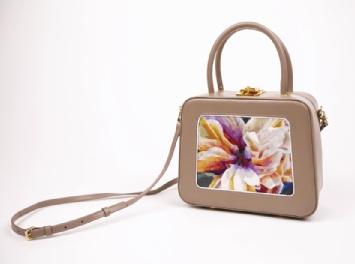
21 DESIGNERS
A. Kar
Il marchio, con sede a Los Angeles, propone borse e gioielli di lusso squisitamente artigianali e unici, disegnati e creati da Adrine Karapetyan.
Ogni borsa FELTED WOOL, unica nel suo genere, è un oggetto d’arte creato dal magico processo di stratificazione di pura lana grezza e seta, che mescolate insieme danno vita a infinite possibilità di texture, forme e colori.
Le GORG BAGS prendono il nome dalla parola armena “gorg” che significa “tappeto”, poiché il tessuto che le compone è creato con le medesime tecniche di produzione dei tappeti.
I colori vivaci e i motivi minuziosamente intagliati riflettono l’approccio alla moda e l’occhio per i dettagli del designer. La combinazione di tecniche diverse permette a ogni borsa di essere sempre diversa e impossibile da replicare.
The Los Angeles-based brand offers exquisitely handcrafted and unique luxury handbags and jewellery designed and created by Adrine Karapetyan.

Each unique FELTED WOOL bag is a one-of-a-kind piece of art created by the magical process of layering pure raw wool and silk, which mixed together create endless possibilities of textures, shapes and colours.


GORG BAGS take their name from the Armenian word ‘gorg’ meaning ‘carpet’, as the fabric that makes them up is created using the same production techniques as carpets. The bright colours and meticulously carved patterns reflect the designer’s fashionable approach and eye for detail. The combination of different techniques allows each bag to always be different and impossible to replicate.

22 DESIGNERS

Is Victoria’s Secret really evolving?
by Giulia Simonotti Artwork by RickDick
Darwin, ne “L’origine della specie” del 1859, sosteneva che l’unico modo per sopravvivere quando l’ambiente circostante cambia è adattarsi. Chi non lo fa si estingue! Una teoria che sembra applicarsi molto bene anche al business e il caso di Victoria’s Secret può esserne l’emblema: il noto brand sta cercando di rilanciare il suo famosissimo fashion show che è stato cancellato nel 2018, dopo 23 anni, poiché non più in linea con il sentiment dei consumatori e, di conseguenza, più criticato che apprezzato. La nuova versione implicherà un vero cambiamento dei valori proposti dal brand o sarà un’altra campagna di marketing malfunzionante studiata per targettizzare la nuova generazione di consumatori?
Per capire cosa sta effettivamente accadendo in casa Victoria’s Secret bisogna partire dalla nascita del brand fondato nel 1977 da Roy Raymond il quale, trovandosi in imbarazzo ad acquistare lingerie per la moglie in un comune grande magazzino, pensò di vendere questi capi in un ambiente più riservato e accogliente. Scoprì un potenziale mercato inesplorato. Fin qui sembra una storia come tante, ma a un certo punto il brand decise di cominciare a promuovere sexy lingerie disegnata chiaramente per l’occhio maschile e con l’idea di far sentire le donne più sicure di sé. La strategia di marketing ebbe un enorme successo e venne amplificata dopo l’acquisto della società da parte del proprietario di L-brands, Les Wexner: l’imprenditore che rese VS un brand senza rivali e un emblema culturale degli ultimi anni ’90 e della prima decade del 2000. Il simbolo del quasi monopolio del mercato da parte di Victoria’s Secret e della sua influenza sulla società americana fu proprio il particolarissimo Fashion Show lanciato nel 1995 e poi mandato in onda in tv a partire dal ‘99. Lo show era caratterizzato da un intimo carnevalesco indossato da modelle particolarmente magre (alle quali, prima dello show, era imposta una dieta di solo liquidi e almeno due ore di work out al giorno), chiamate “Angeli” perché
spesso indossavano enormi ali mentre lanciavano baci al pubblico sui ritmi della musica delle varie Star presenti. Lo show, quindi, promuoveva uno tipo bellezza irraggiungibile e irrealistica che più di una volta si dice abbia favorito lo sviluppo di disturbi alimentari (anche tra le stesse modelle). Una propaganda di valori che con l’andar del tempo non venne ben vista. Lo dimostrano gli ascolti televisivi crollati, dopo il picco di 10 milioni nel 2011, a solo 3 nel 2018 (come riporta il Wall Street Journal).
Ma fu il diffondersi del movimento del “body positivity” nella società americana a condurre alla caduta di Victoria’s Secret? Sicuramente la nuova concezione del corpo femminile influì sul calo delle vendite. Ma vi contribuirono anche i dirigenti stessi di VS. In primis, Razek, il direttore marketing, che dichiarò in un’intervista a Vogue del 2018 che “lo show era una fantasia” e quindi non avrebbe mai incluso modelle transgender o plus size. E questo fu il minore degli scandali, visto che successivamente emersero gli stretti rapporti tra Wexner e l’imprenditore Jeffrey Epstein, al tempo indagato e ora condannato per abusi sessuali e traffico di minorenni, che spesso partecipava ai casting per lo show e non solo. Alcune modelle cominciarono a raccontare di molestie subite o di avance che dovevano sopportare per non essere licenziate, di cui ha parlato il New York Times nonché la serie-documentario “Victoria’s Secret: Angels and Demons” che indaga il lati oscuri dell’azienda. Ma come è possibile che, dopo tutto ciò, Victoria’s Secret esista ancora? È qui che entra in gioco la teoria evoluzionista che citavo all’inizio! L’azienda, da qualche anno, cerca di trasformarsi in qualcosa che possa piacere di più ai consumatori di oggi, imitando anche i nuovi leader del settore come Savage x Fenty, la linea di lingerie inclusiva lanciata da Rihanna proprio nel 2018. La metamorfosi di VS è iniziata durante il lockdown durante cui ha chiuso sia i negozi che il sito web e ha cambiato dirigenza. Nel 2021 ha sostituito nelle campagne pubblicitarie gli Angeli con sette donne di successo, denominate VS Collective: Priyanka Chopra Jonas, >

24 TRENDS
24

25 TRENDS rickdick_
Paloma Elsesser, Eileen Gu, Megan Rapinoe, Adut Akech, Amanda de Cadenet e Valentina Sampaio. Victoria’s Secret voleva e vuole dimostrare che essere “sexy” non implica più rendere la donna un oggetto. È sensuale una donna forte e intraprendente di qualunque taglia, nazionalità, orientamento e identità sessuale. Un altro passo in questa direzione lo ha fatto la campagna pubblicitaria dello stesso anno che rappresentava una modella incinta in occasione della Festa della Mamma combinata con l’annuncio del lancio di una linea di reggiseni per allattamento. Campagne di riposizionamento del brand che hanno sicuramente aiutato a risollevare le vendite, nonostante rischino di suonare come “inclusivity-washing”. La speranza che effettivamente non lo sia è data dal ruolo affidato alle donne del VS Collective, divenute consulenti del marchio oltre che ambasciatrici.
In conclusione, cosa dobbiamo aspettarci dal ritorno del fashion show? Per ora di informazioni ne abbiamo poche: sarà un film che uscirà in autunno, sarà trasmesso in streaming in tutto il mondo e mostrerà le collezioni moda di 20 artisti provenienti da Bogotà, Lagos, Londra e Tokyo (oltre a quella del team VS) per celebrare “l’individualità delle storie e delle prospettive delle donne”. Inoltre, il film documenterà il processo di realizzazione delle collezioni e presenterà i modelli che potrebbero non essere solo di lingerie. A questo punto non resta che aspettare e stare a vedere se Victoria’s Secret sia davvero cambiato o abbia solo optato per un buon maquillage!
imposed), called “Angels” because they often wore huge wings while throwing kisses to the audience to the rhythms of the music of the various Stars in attendance. The show, then, promoted a type of unattainable and unrealistic beauty that more than once is said to have encouraged the development of eating disorders (even among the models themselves). A propaganda of values that with the passage of time was not well seen. This is evidenced by TV ratings that plummeted, after peaking at 10 million in 2011, to only 3 in 2018 (as reported by the Wall Street Journal).
But was it the spread of the “body positivity” movement in American society that led to the downfall of Victoria’s Secret? Certainly, the new conception of the female body influenced the decline in sales. But VS executives themselves also contributed to it. First and foremost, Razek, the marketing director, who stated in a 2018 Vogue interview that “the show was a fantasy” and therefore would never include transgender or plus-size models. And this was the least of the scandals, as it later emerged Wexner’s close relationship with businessman Jeffrey Epstein, at the time investigated and now convicted for sexual abuse and trafficking of minors, who often attended castings for the show and beyond. Some models began to tell of harassment they suffered or advances they had to endure in order not to be fired, which was covered in the New York Times as well as the documentary series “Victoria’s Secret: Angels and Demons,” which investigates the dark side of the company. But how is it possible that, after all this, Victoria’s Secret still exists?
Darwin, in “The Origin of Species” in 1859, argued that the only way to survive when one’s environment changes is to adapt. Those who do not do so become extinct! A theory that seems to apply perfectly to business as well, and the case of Victoria’s Secret may be its emblem: the well-known brand is trying to relaunch its very famous fashion show that was canceled in 2018, after 23 years, because it was no longer in line with consumer sentiment and, as a result, more criticized than appreciated. Will the new version imply a real change in the brand’s proposed values or will it be another malfunctioning marketing campaign designed to target the new generation of consumers?
To understand what is actually happening in Victoria’s Secret, we must start with the birth of the brand founded in 1977 by Roy Raymond who, finding himself embarrassed to buy lingerie for his wife in a common department store, thought of selling these garments in a more private and welcoming environment. He discovered a potential untapped market. So far it seems like just the usual success story, but at some point the brand decided to start promoting sexy lingerie clearly designed for the male eye and with the idea of making women feel more confident. The marketing strategy was hugely successful and was amplified after L-brands owner Les Wexner bought the company: the entrepreneur who made VS an unrivaled brand and a cultural emblem of the late 1990s and early 2000s. The symbol of Victoria’s Secret’s nearmonopoly of the market and its influence on American society was the very special Fashion Show launched in 1995 and then aired on TV starting in ‘99. The show featured carnivalesque underwear worn by particularly skinny models (on whom, prior to the show, a diet of liquids only and at least two hours of work out per day was
This is where the evolutionary theory I mentioned at the beginning comes in! The company, for the past few years, has been trying to transform itself into something that can appeal more to today’s consumers, even mimicking new industry leaders like Savage x Fenty, the inclusive lingerie line launched by Rihanna just in 2018. VS’s metamorphosis began during the lockdown when it closed both its stores and website and changed management. In 2021, it replaced the Angels in its ad campaigns with seven successful women named VS Collective: Priyanka Chopra Jonas, Paloma Elsesser, Eileen Gu, Megan Rapinoe, Adut Akech, Amanda de Cadenet, and Valentina Sampaio. Victoria’s Secret wanted and wants to show that being “sexy” no longer implies making a woman an object. A strong and resourceful woman of any size, nationality, orientation and sexual identity is sexy. Another step in this direction was taken by the advertising campaign of the same year depicting a pregnant model on Mother’s Day combined with the announcement of the launch of a line of nursing bras. Brand repositioning campaigns that certainly helped boost sales, despite the fact that they risk sounding like “inclusivity-washing”. The hope that indeed it is not is given by the role assigned to the women of VS Collective, who have become brand consultants as well as ambassadors.
In conclusion, what should we expect from the return of the fashion show? For now, we have little information: it will be a film that should be released in the fall, will be streamed worldwide, and will show the fashion collections of 20 artists from Bogota, Lagos, London, and Tokyo (in addition to that of the VS team) to celebrate “the individuality of women’s stories and perspectives”.
In addition, the film will document the process of making the collections and feature models who may not just be in lingerie. At this point all we can do is wait and watch to see if Victoria’s Secret has really changed or just opted for good makeup!
26 TRENDS


FASHION
F/W 2024



Breakfast club
Flashing lights
Candy
Gold and chic!
Blurry fluid
Casual as usual
Softcore
Breakfast club



 Photos by Angelo Lanza
Fashion by Luca Termine
Turtleneck PAOLONI Hat BONFILIO HATS
Suit and shoes MANUEL RITZ
Photos by Angelo Lanza
Fashion by Luca Termine
Turtleneck PAOLONI Hat BONFILIO HATS
Suit and shoes MANUEL RITZ


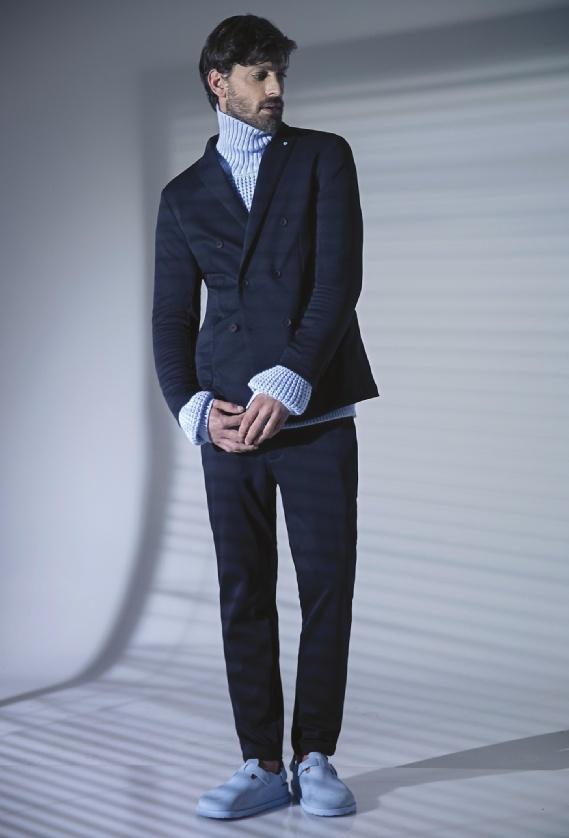
Total look PEOPLE OF SHIBUYA Shoes BIRKENSTOCK



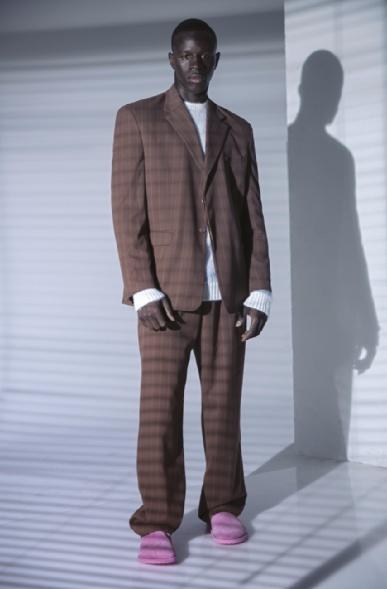 Suit and sweater FAMILY FIRST Socks RED Shoes BIRKENSTOCK
Coat OUT FIT Pants and shirt KAPPA Sunglasses MOSCOT Shoes VEJA
Suit and sweater FAMILY FIRST Socks RED Shoes BIRKENSTOCK
Coat OUT FIT Pants and shirt KAPPA Sunglasses MOSCOT Shoes VEJA

AUTRY
BERWICH
PREMIATA
Jacket CRUNA Sweatshirt
Pants
Shoes
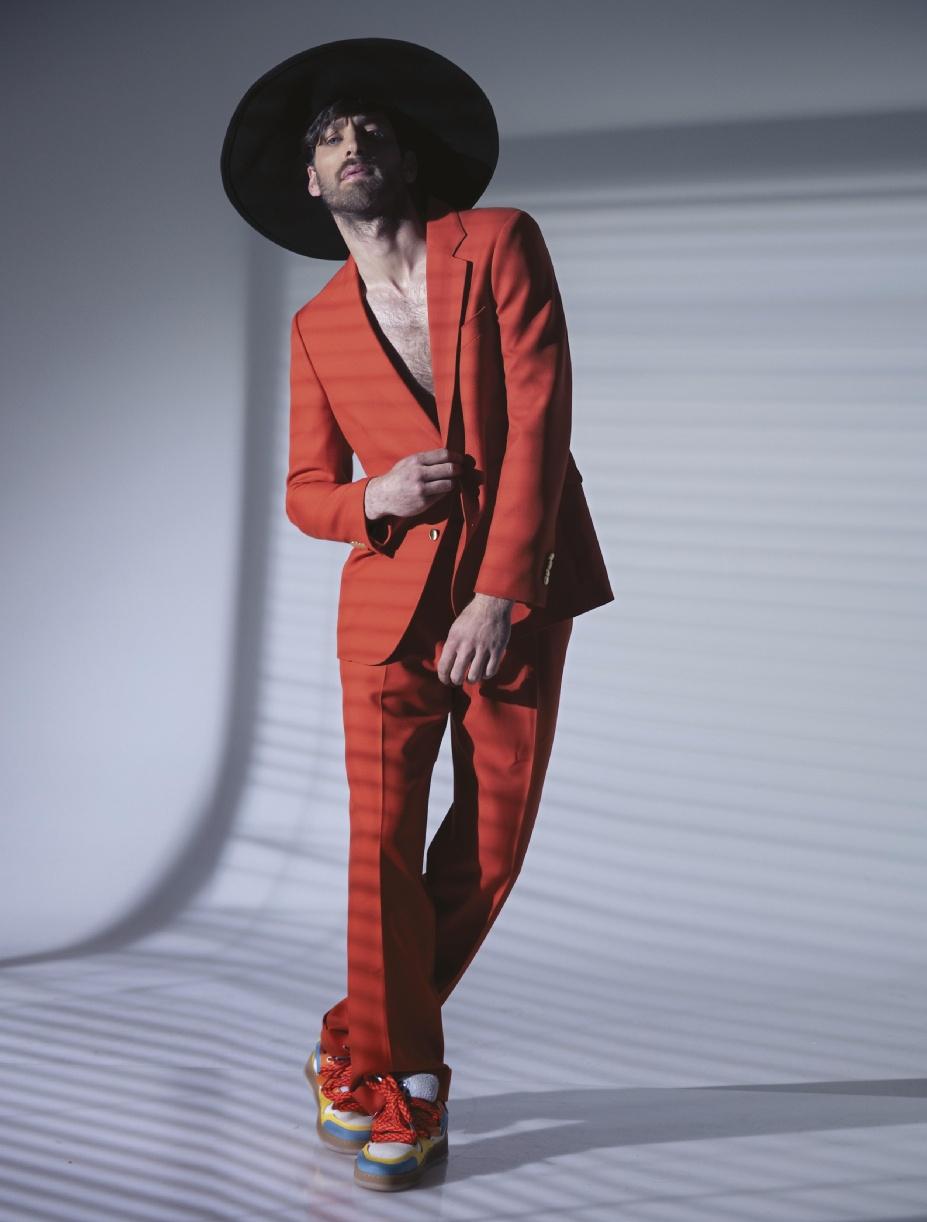
Suit PT TORINO Hat BONFILIO HATS Shoes LAVA



 Suit PT TORINO Hat SUN 68 Shoes SICKING
Jacket and sweater AVANT TOI Pants RE-HASH Shoes SANTONI
Suit PT TORINO Hat SUN 68 Shoes SICKING
Jacket and sweater AVANT TOI Pants RE-HASH Shoes SANTONI
Suit ALESSANDRO GILLES

Hat MANUEL RITZ
Sunglasses MOSCOT


Socks RED
Shoes KAPE KAROO PROJECT @ARSUTORIA SCHOOL
Jacket, trousers and bag HANDPICKED
 Hat MANUEL RITZ
Shoes GREEN GEORGE
Hat MANUEL RITZ
Shoes GREEN GEORGE

Total look PAL ZILERI Hat BONFILIO HATS Shoes PREMIATA

Coat and gilet GALEAMDRO Trousers OUTFIT Backpack GIMENALE Hat REGENESI Shoes PAL ZILERI



 Pants ZARA
Shoes KAPE KAROO PROJECT @ARSUTORIA SCHOOL
Cardigan and sweater FILIPPO DE LAURENTIIS
Trousers BERWICH
Socks RED
Shoes CLARKS
Pants ZARA
Shoes KAPE KAROO PROJECT @ARSUTORIA SCHOOL
Cardigan and sweater FILIPPO DE LAURENTIIS
Trousers BERWICH
Socks RED
Shoes CLARKS



 Backpack SALVADOR MOLINA @ARSUTORIA SCHOOL
Shoes PANCHIC
Jacket CRUNA Pants PIACENZA CASHMERE Hat BONFILIO HATS
Socks RED
Shoes EASYWALK by IGF
Backpack SALVADOR MOLINA @ARSUTORIA SCHOOL
Shoes PANCHIC
Jacket CRUNA Pants PIACENZA CASHMERE Hat BONFILIO HATS
Socks RED
Shoes EASYWALK by IGF

Total look PIACENZA CASHMERE Shoes PANCHIC

Total look MANUEL RITZ Shoes MANUEL RITZ



 Suit MANUEL RITZ
Sweater PIACENZA CASHMERE
Shoes HODSON JAHANIAN @ARSUTORIA SCHOOL
Jacket and turtleneck BROOKSFIELD TORINO
Pants MANUEL RITZ
Shoes HODSON JAHANIAN @ARSUTORIA SCHOOL
Suit MANUEL RITZ
Sweater PIACENZA CASHMERE
Shoes HODSON JAHANIAN @ARSUTORIA SCHOOL
Jacket and turtleneck BROOKSFIELD TORINO
Pants MANUEL RITZ
Shoes HODSON JAHANIAN @ARSUTORIA SCHOOL

Suit ALESSANDRO GILLES

Hat MANUEL RITZ
Sunglasses OLIVER PEOPLE Shoes SANTONI
Photos by Angelo Lanza Fashion by Luca Termine
Photo assistant: Yadier Castro Piedra
Make-up: Alessia Damiata
Hair: Francesca Giancotti Stylist assistant: Vittoria Macrì and Emanuele Scanu
Models: Laye Diaby and Vincent Banic @ILoveModelsManagement
Flashing lights
 Photos by Angelo Lanza Fashion by Luca Termine
Photos by Angelo Lanza Fashion by Luca Termine

Top and skirt BALESTRA Corset WINDOWSEN
 Dress BYBLOS
Necklace LARIULÀ MILANO
Shoes JEFFREY CAMPBELL
Dress BYBLOS
Necklace LARIULÀ MILANO
Shoes JEFFREY CAMPBELL



Dress ANNAKIKI
LORIBLU
Necklace and bracelet LARIULÀ MILANO Shoes
 Dress FLAVIA MARDI
Bra LARIULÀ MILANO
Shoes LORIBLU
Dress FLAVIA MARDI
Bra LARIULÀ MILANO
Shoes LORIBLU


Top ANNAKIKI Short MNG Shoes LORIBLU

Dress BALESTRA Shoes CASADEI


Dress LARIULÀ MILANO Shoes MALONE SOULIERS
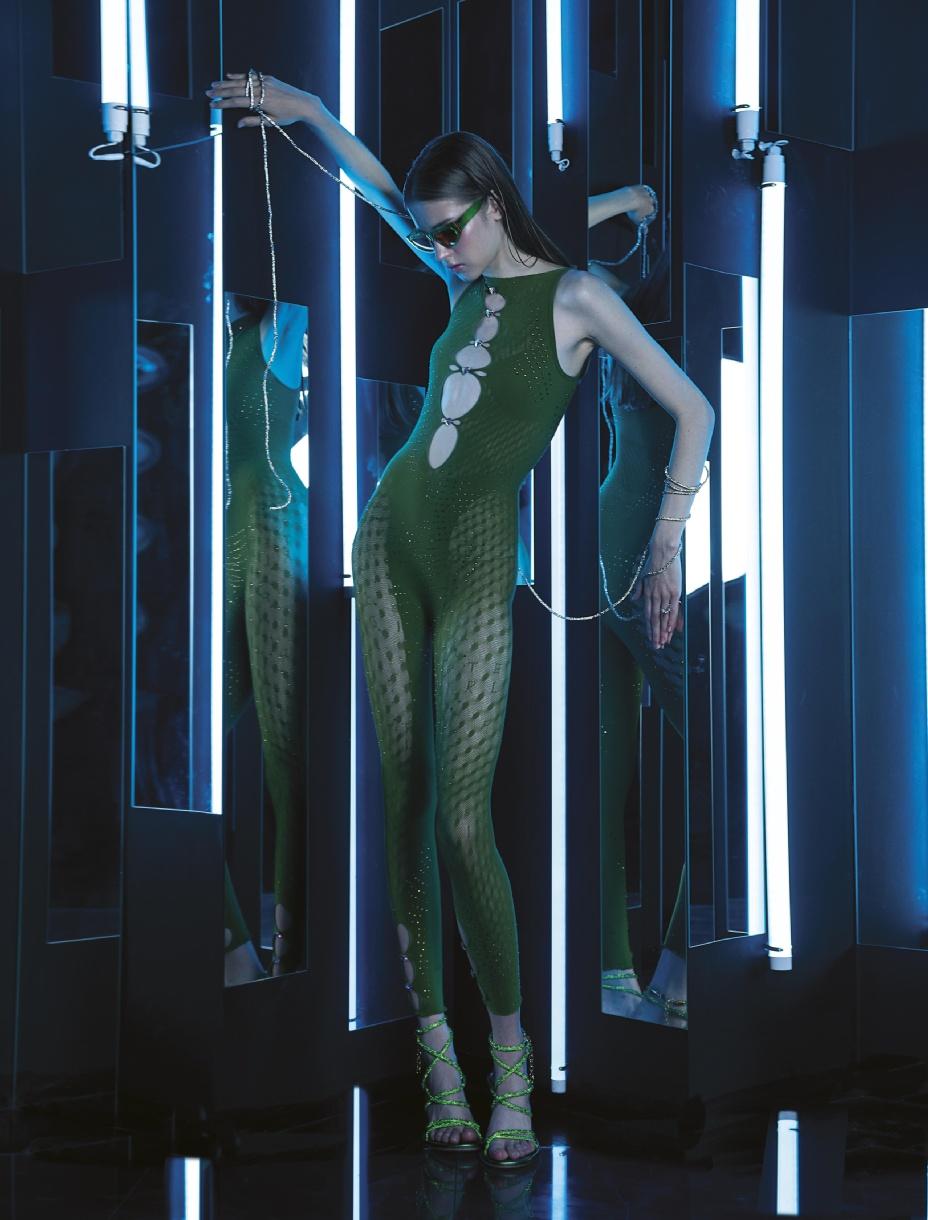 Catsuit POSTER GIRL
Sunglasses CALVIN KLEIN
Shoes LORIBLU
Catsuit POSTER GIRL
Sunglasses CALVIN KLEIN
Shoes LORIBLU
 Dress ANNAKIKI
Necklace and bracelet LARIULÀ MILANO
Dress ANNAKIKI
Necklace and bracelet LARIULÀ MILANO
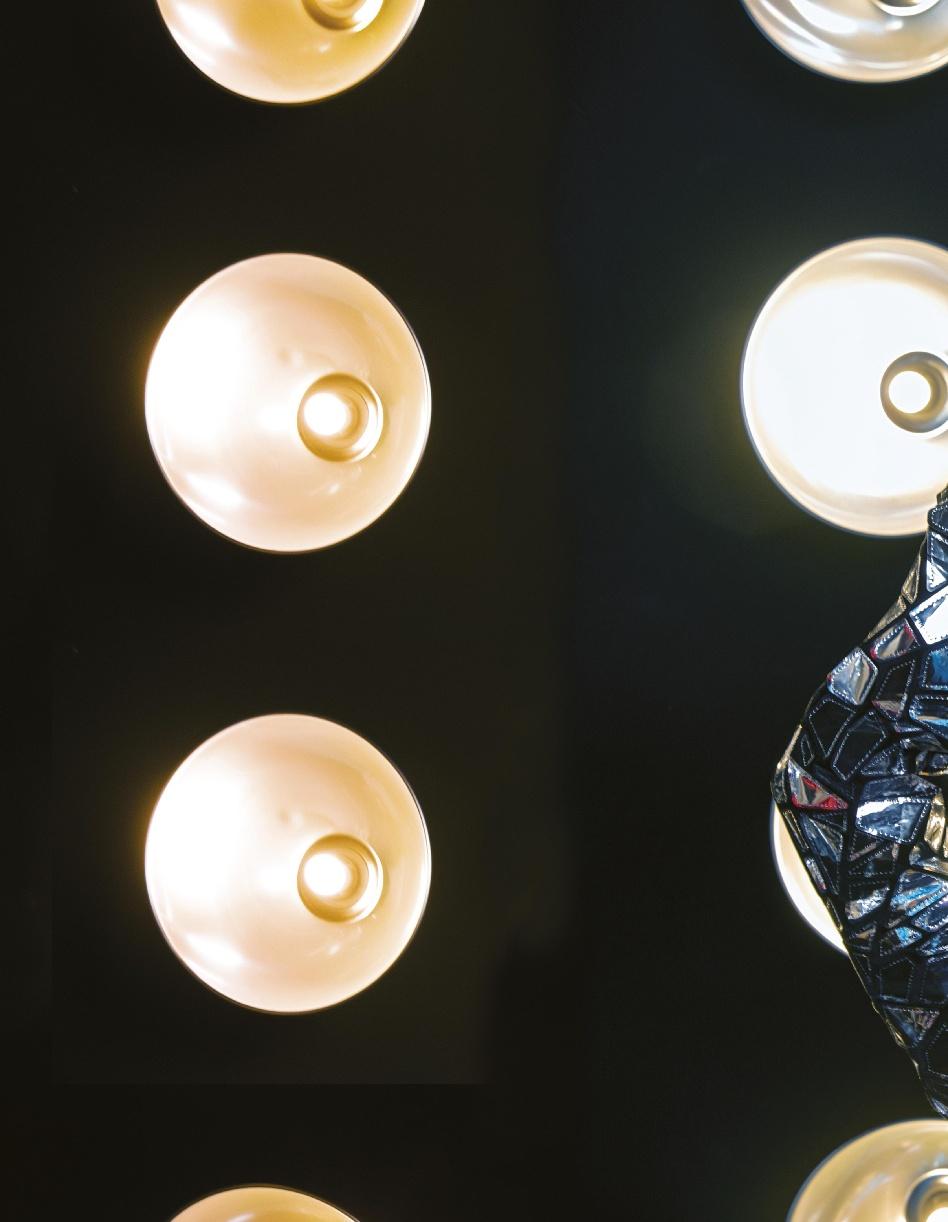 Dress LARIULÀ MILANO
Photos by Angelo Lanza
Fashion by Luca Termine
Photo assistant: Yadier Castro Piedra
Make-up and Hair: Imma Mennuti and Andrea Lacavalla
Stylist assistant: Emanuele Scanu Model: Daria Savytska @BraveModelManagement
Dress LARIULÀ MILANO
Photos by Angelo Lanza
Fashion by Luca Termine
Photo assistant: Yadier Castro Piedra
Make-up and Hair: Imma Mennuti and Andrea Lacavalla
Stylist assistant: Emanuele Scanu Model: Daria Savytska @BraveModelManagement

Candy
Hoddie SARAWONG
Pants JOHN RICHMOND

Slip ABSIDEM
Earrings SIMPLE RITUALS
Necklace BABYLON
Shoes MARIO VALENTINO
Photos by Giorgia Spina Fashion by Antonio Musto
 Jacket DAVII Shirt JOHN RICHMOND Bralette ABSIDEM Skirt BABYLON Earrings and necklace MYRIL
Jacket DAVII Shirt JOHN RICHMOND Bralette ABSIDEM Skirt BABYLON Earrings and necklace MYRIL

Trench SILVIAN HEACH Neck MARCO BOLOGNA Top ABSIDEM Earrings RADÀ
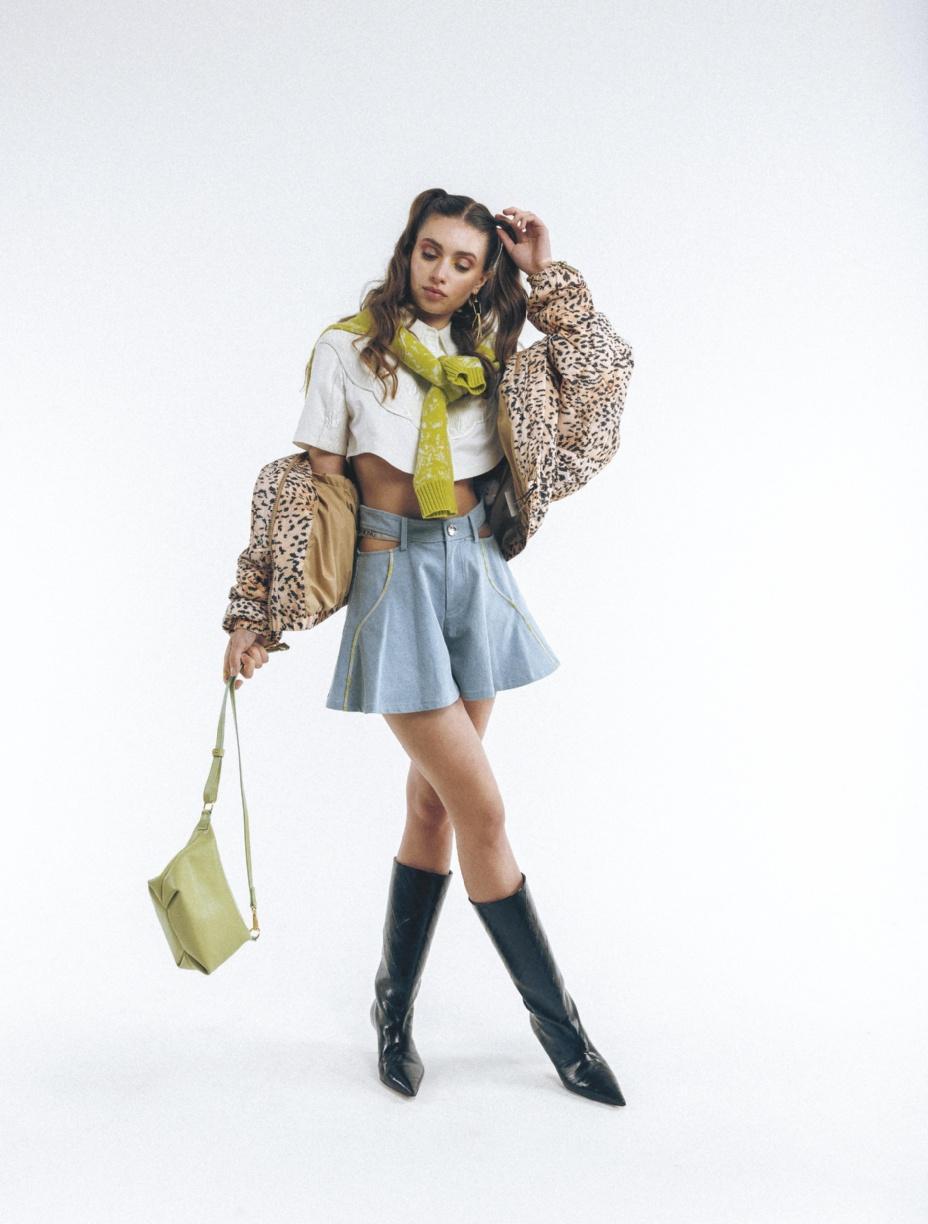
Jacket PYRENEX Shirt and skirt SARA WONG Sweater LAMBERTO LOSANI Bag COTE Ring and earrings 12 PM JEWELRY Boots MARIO VALENTINO

Fur MARIO DICE
GOI
KHOSROV
MYRIL Ring SIMPLE RITUALS Boots PARIS TEXAS
Jumpsuit
Sunglasses
Choker

DICE
Mini dress and top MARIO
Bracelet SIMPLE RITUAL Necklace RADÀ Sunglasses JPLUS

 Playsuit MUUNICE Clocks HOOPS Earrings and necklace: SIMPLE RITUALS
Right ring: 12 PM JEWELRY
Left ring RADÀ Boots PARIS TEXAS
Photos by Giorgia Spina Styling by Antonio Musto Make-up and hair: Giulia Cannizzaro
Model: Kornelia Kukowska @WomenDirect - Milano
Playsuit MUUNICE Clocks HOOPS Earrings and necklace: SIMPLE RITUALS
Right ring: 12 PM JEWELRY
Left ring RADÀ Boots PARIS TEXAS
Photos by Giorgia Spina Styling by Antonio Musto Make-up and hair: Giulia Cannizzaro
Model: Kornelia Kukowska @WomenDirect - Milano
Gold and chic!
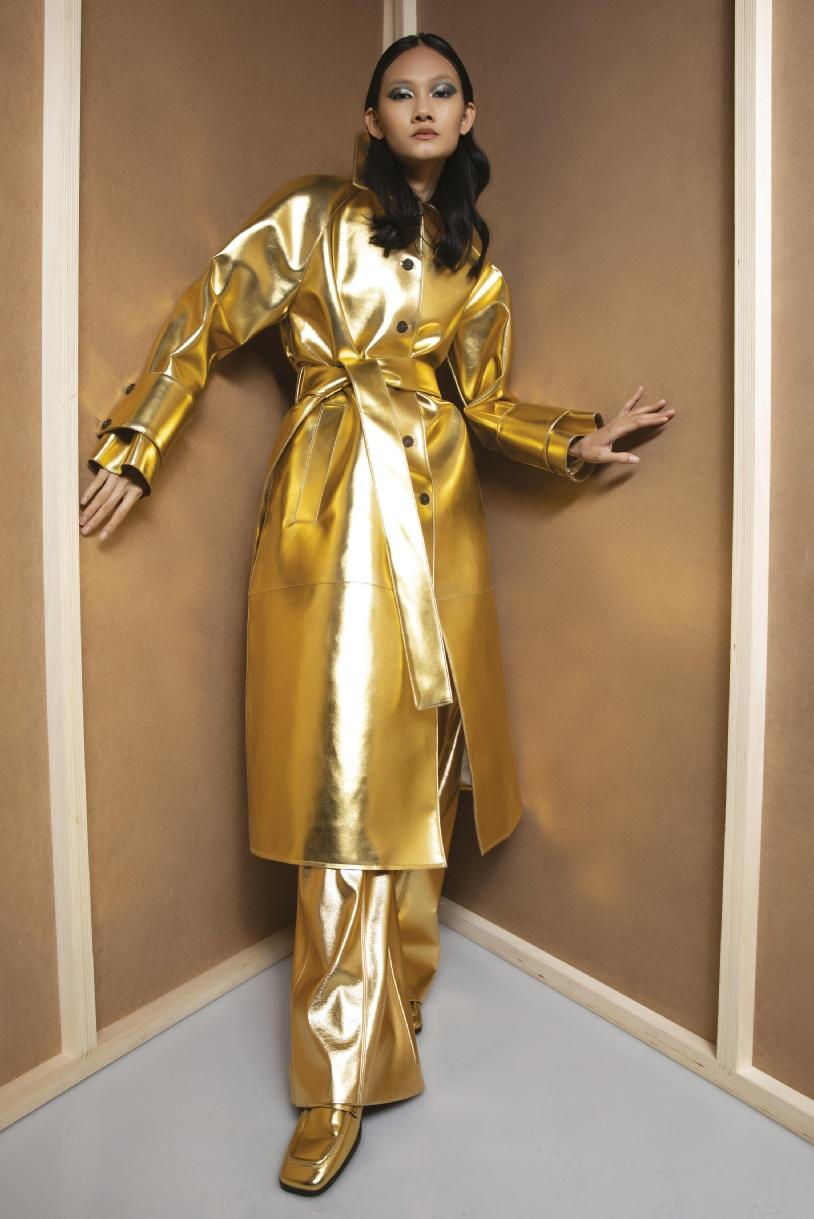
look BEATRICE
Photos by Angelo Lanza Fashion by Luca Termine Total
 Skirt and corset APNOEA Necklace and bag ROSANTICA Shoes PREMIATA
Skirt and corset APNOEA Necklace and bag ROSANTICA Shoes PREMIATA
 Trench BALESTRA
Sunglasses OSCAR MAMOOI
Boots GIANLUCA CAPANNOLO
Trench BALESTRA
Sunglasses OSCAR MAMOOI
Boots GIANLUCA CAPANNOLO

Total look MANUEL RITZ Bag GAVA Shoes PREMIATA
 Blazer MANUEL RITZ
Pants PT TORINO
T-shirt MULZIN Boots PRIMARK
Blazer MANUEL RITZ
Pants PT TORINO
T-shirt MULZIN Boots PRIMARK
 Blazer and dress NERVI
Shoes LUISA SPAGNOLI
Blazer and dress NERVI
Shoes LUISA SPAGNOLI
 Top MUUNICE Corset BABYLON Skirt GIANLUCA CAPANNOLO Bag VIC MATIE Boots ATIIMU
Top MUUNICE Corset BABYLON Skirt GIANLUCA CAPANNOLO Bag VIC MATIE Boots ATIIMU
 Suit TAGLIATORE Turtleneck WOLFORD Necklace and bag ROSANTICA Shoes BEATRICE
Suit TAGLIATORE Turtleneck WOLFORD Necklace and bag ROSANTICA Shoes BEATRICE
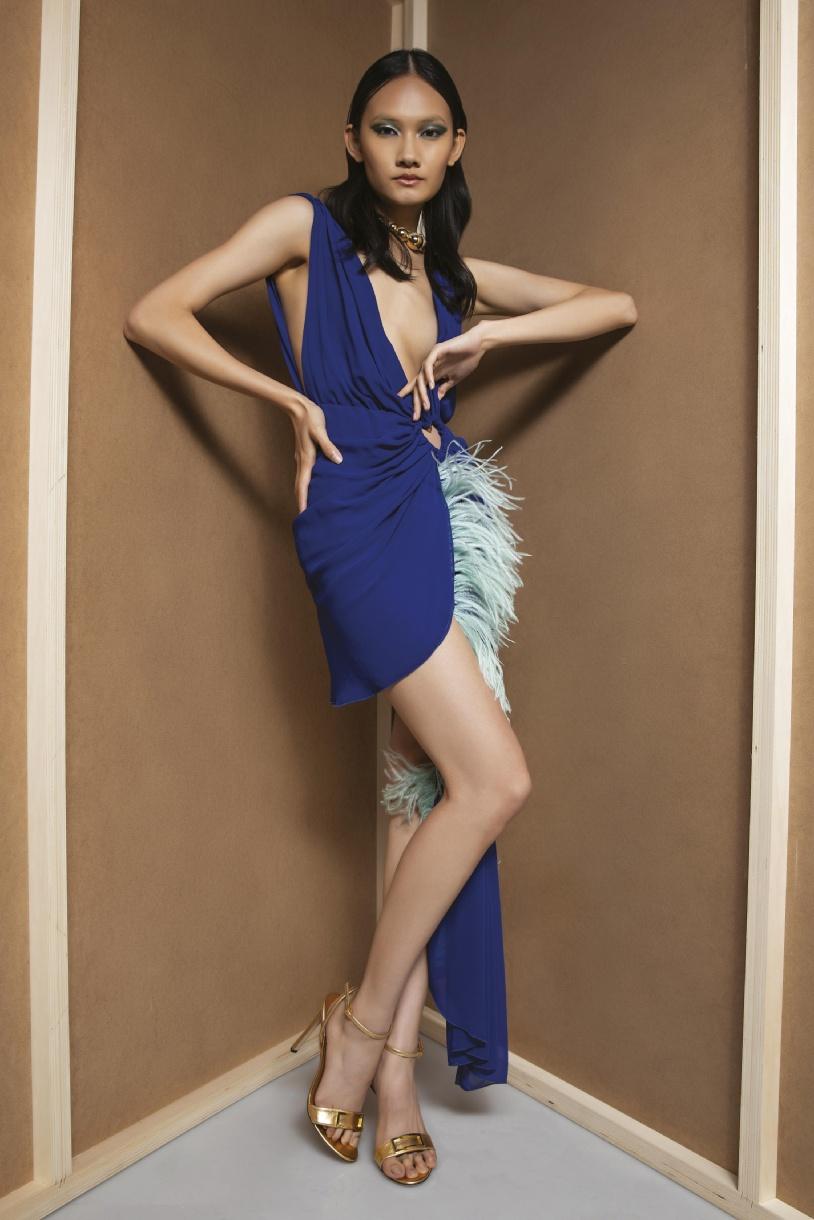 Dress NERVI
Necklace ROSANTICA
Shoes LUISA SPAGNOLI
Dress NERVI
Necklace ROSANTICA
Shoes LUISA SPAGNOLI
 Top GIANLUCA CAPANNOLO
Turtleneck BALESTRA Skirt MUKZIN Boots ATIIMU
Photos by Angelo Lanza Fashion by Luca Termine
Photo assistant: Yadier Castro Piedra MUA: Francesca Giancotti Stylist assistants: Emanuele Scanu and Vittoria Macrì Model: Anh @BraveModels
Top GIANLUCA CAPANNOLO
Turtleneck BALESTRA Skirt MUKZIN Boots ATIIMU
Photos by Angelo Lanza Fashion by Luca Termine
Photo assistant: Yadier Castro Piedra MUA: Francesca Giancotti Stylist assistants: Emanuele Scanu and Vittoria Macrì Model: Anh @BraveModels
Blurry fluid
 Photos by Stratis Kas Fashion by Dinalva Barros
Dress CRISTIANO BURANI Necklaces SHARRA PAGANO Shoes GIUSEPPE ZANOTTI
Photos by Stratis Kas Fashion by Dinalva Barros
Dress CRISTIANO BURANI Necklaces SHARRA PAGANO Shoes GIUSEPPE ZANOTTI
 Dress ROMEO GIGLI
Bag MONTE SHARP
Dress ROMEO GIGLI
Bag MONTE SHARP
 Dress VERONICA IORIO Bag L’ATELIER DU SAC
Dress VERONICA IORIO Bag L’ATELIER DU SAC

Dress MARIO DICE Bag HIVA ATELIER

Sunglasses COTAZUR

Shirt and skirt SARA WONG Bag MOMONI
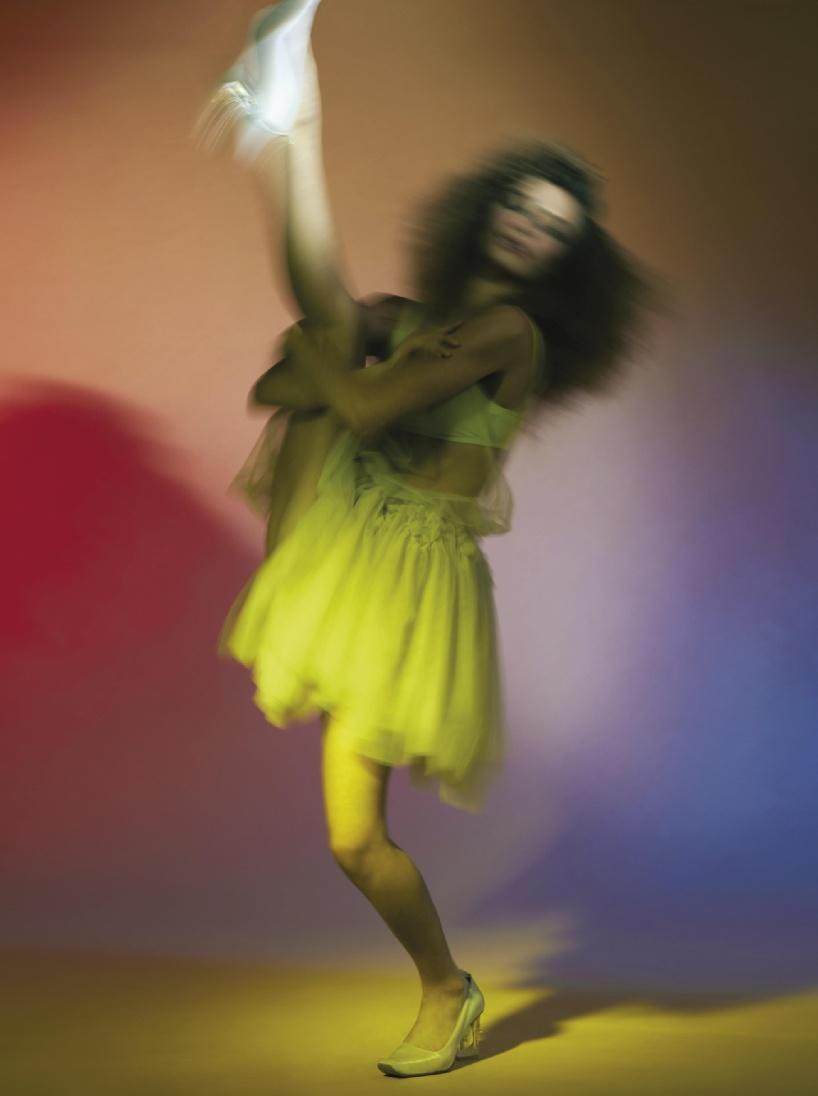 Dress CETTINA BUCCA
Top POMANDÈRE
Shoes SARA WONG
Dress CETTINA BUCCA
Top POMANDÈRE
Shoes SARA WONG
 Top and coulotte HUI
Photos by Stratis Kas @MKS-MILANO
Styling by Dinalva Barros @MKS-MILANO
Make-up: Giovanni Zummo @MKS-MILANO
Hair: Elizabeth Fogel @Hairdresserlf using Kevin Murphy Fashion assistants: Ilaria Gelormini and Sofia Ruzzon
Top and coulotte HUI
Photos by Stratis Kas @MKS-MILANO
Styling by Dinalva Barros @MKS-MILANO
Make-up: Giovanni Zummo @MKS-MILANO
Hair: Elizabeth Fogel @Hairdresserlf using Kevin Murphy Fashion assistants: Ilaria Gelormini and Sofia Ruzzon
Casual as usual
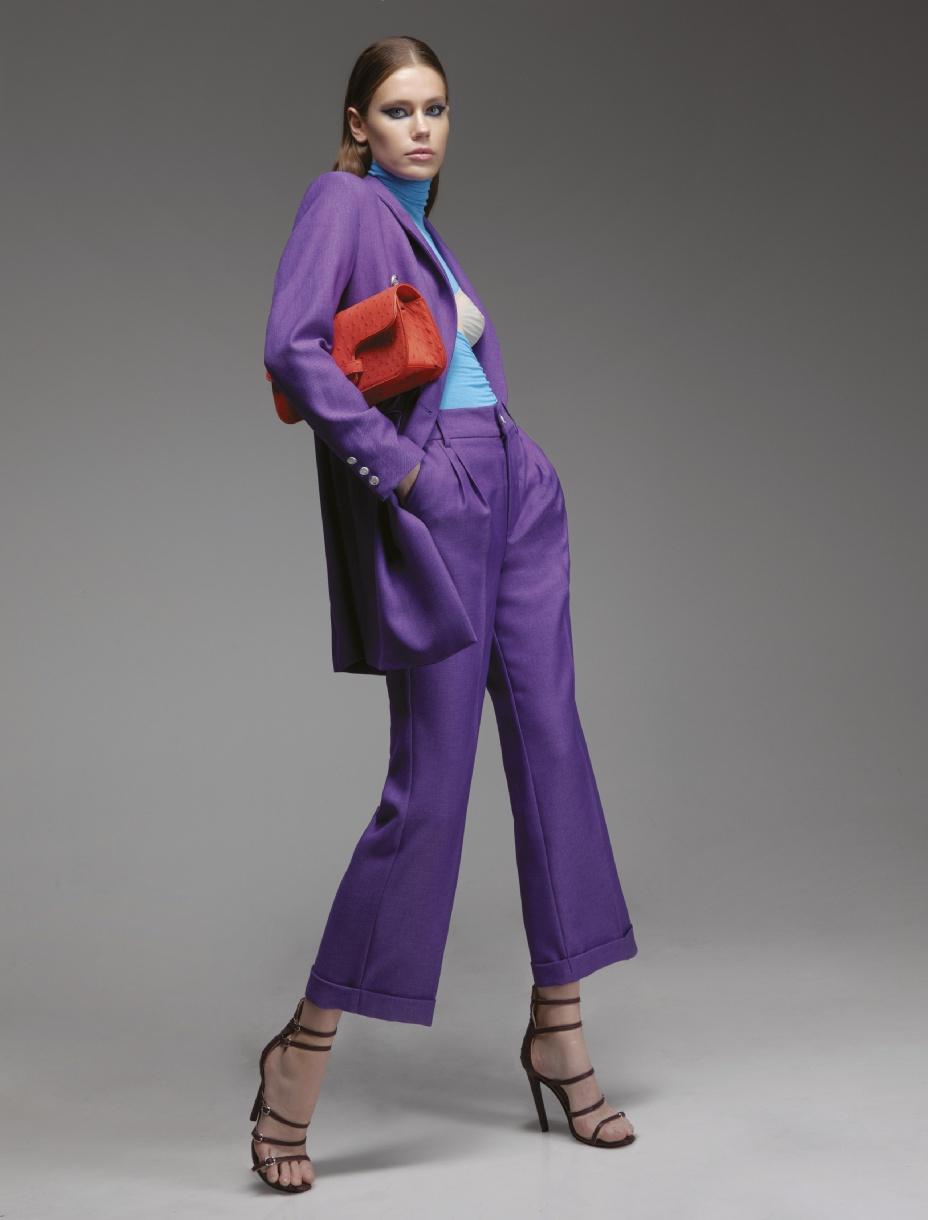 Suit NARA CAMICIE Turtleneck PIERRE MANTOUX Bra WOLFORD Bag and shoes KAPE KAROO PROJECT @ARSUTORIA School
Photos by Angelo Lanza Fashion by Luca Termine
Suit NARA CAMICIE Turtleneck PIERRE MANTOUX Bra WOLFORD Bag and shoes KAPE KAROO PROJECT @ARSUTORIA School
Photos by Angelo Lanza Fashion by Luca Termine

Turtleneck and skirt SFIZIO COLLECTION Necklace and earrings VALENTINA FERRAGNI Hat BONFILIO HATS Socks RED Bag YESE STUDIO Shoes SANTONI

Sweater LAST POETS Pants TAGLIATORE Hat BONFILIO HATS Bag ALESSANDRA COLOMBO @ARSUTORIA SCHOOL Shoes SANTONI

Jacket and pants LEVI’S Top APNOEA Small bag LA FESTIN Hand bag JENNIFER MAINS @ARSUTORIA SCHOOL Shoes MALONE SOULIERS
 Bag RICCARDO CAVALIERE @ARSUTORIA SCHOOL
Bag RICCARDO CAVALIERE @ARSUTORIA SCHOOL
Shoes NIV MOSHE @ARSUTORIA SCHOOL
Shoes KAPE KAROO PROJECT @ARSUTORIA SCHOOL




Shoes NIV MOSHE @ARSUTORIA SCHOOL
Shoes NIV MOSHE @ARSUTORIA SCHOOL
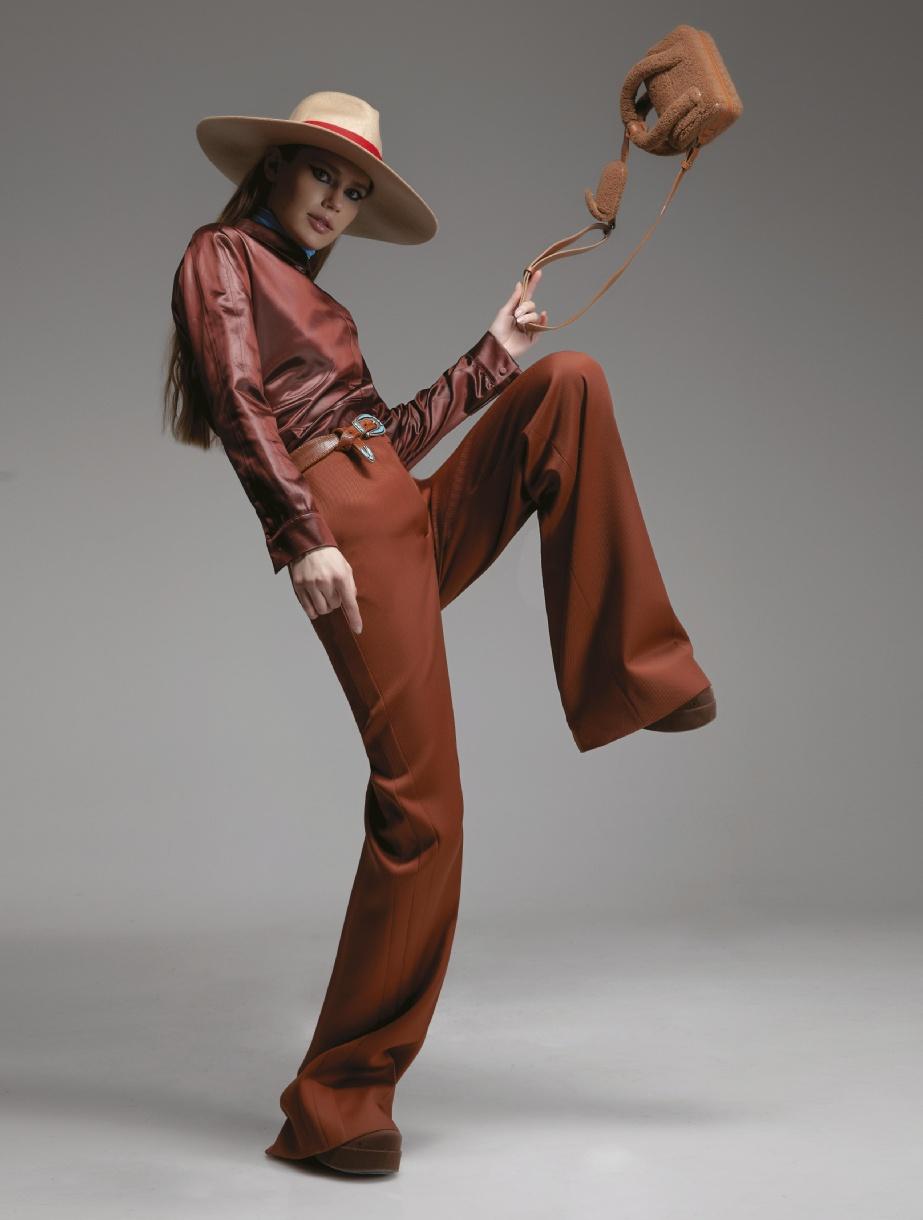
Shirt and pants BALESTRA Turtleneck PIERRE MANTOUX Hat REGENESI Bag YESE STUDIO Belt GAVAZZENI Shoes XOCO

Gilet and skirt ILEWUOY Shirt MUKZIN Shoes LAVA
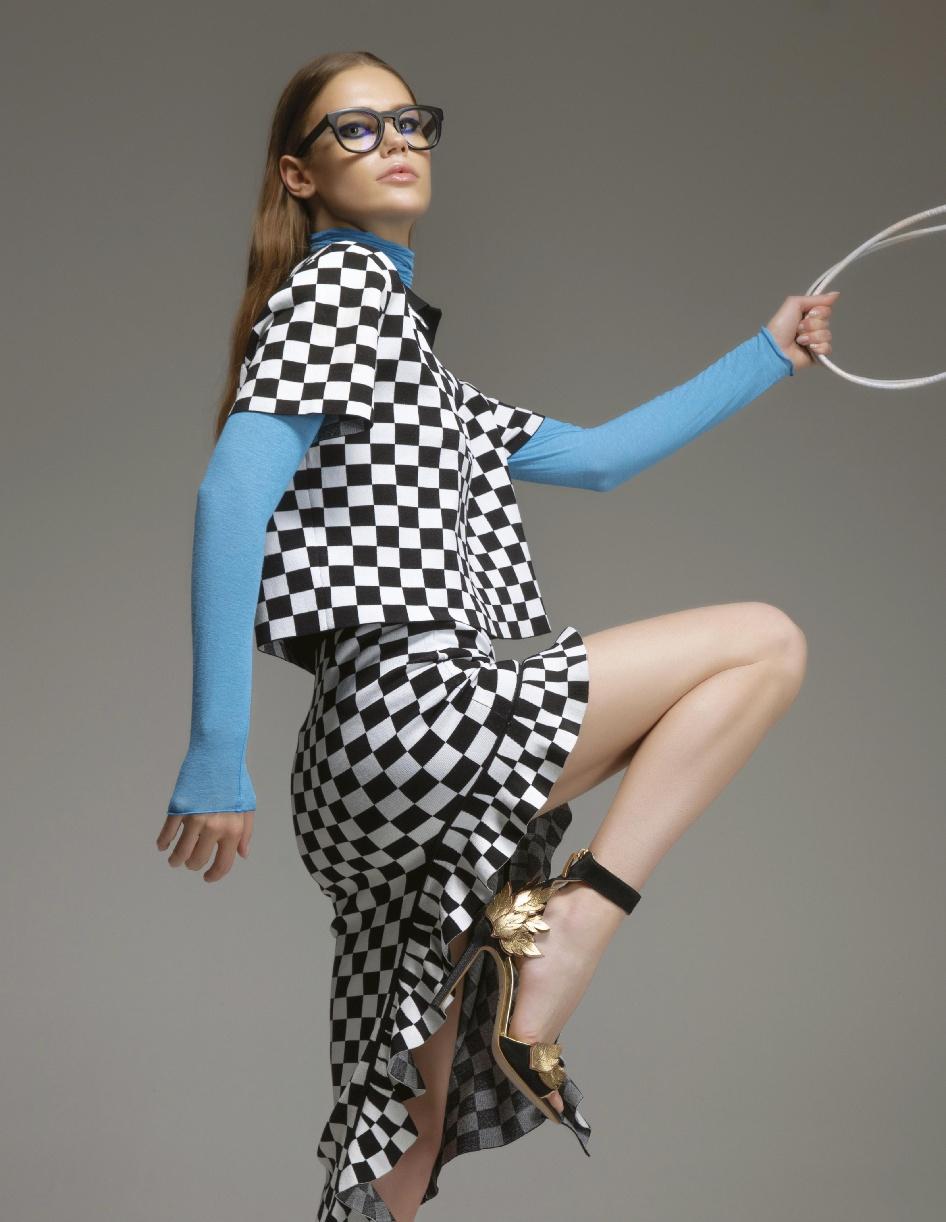
ILEWUOY
MANTOUX
MILANO
YESE STUDIO
LARRAIN GELSAM @ARSUTORIA SCHOOL
Skirt and t-shirt
Turtleneck PIERRE
Sunglasses POPS
Bag
Shoes PAULA

 Photos by Angelo Lanza Fashion by Luca Termine
Photo assistant: Yadier Castro Piedra
Make-up: Alessia Damiata Hair: Francesca Giancotti Stylist assistant: Emanuele Scanu Model: Aleksandra Korotkaia @BraveModels
Total look TAGLIATORE 0205
Small bag LA FESTIN
Big bag KAPE KAROO PROJECT @ARSUTORIA SCHOOL
Shoes CHIE MIHARA
Photos by Angelo Lanza Fashion by Luca Termine
Photo assistant: Yadier Castro Piedra
Make-up: Alessia Damiata Hair: Francesca Giancotti Stylist assistant: Emanuele Scanu Model: Aleksandra Korotkaia @BraveModels
Total look TAGLIATORE 0205
Small bag LA FESTIN
Big bag KAPE KAROO PROJECT @ARSUTORIA SCHOOL
Shoes CHIE MIHARA
Softcore

OBEY
STANCE
Pants and shirt
Socks
Necktie MGC
Photos by Giorgia Spina
Fashion by Antonio Musto



and
Necklace RADÀ
Jacket
skirt SIMON CRACKER
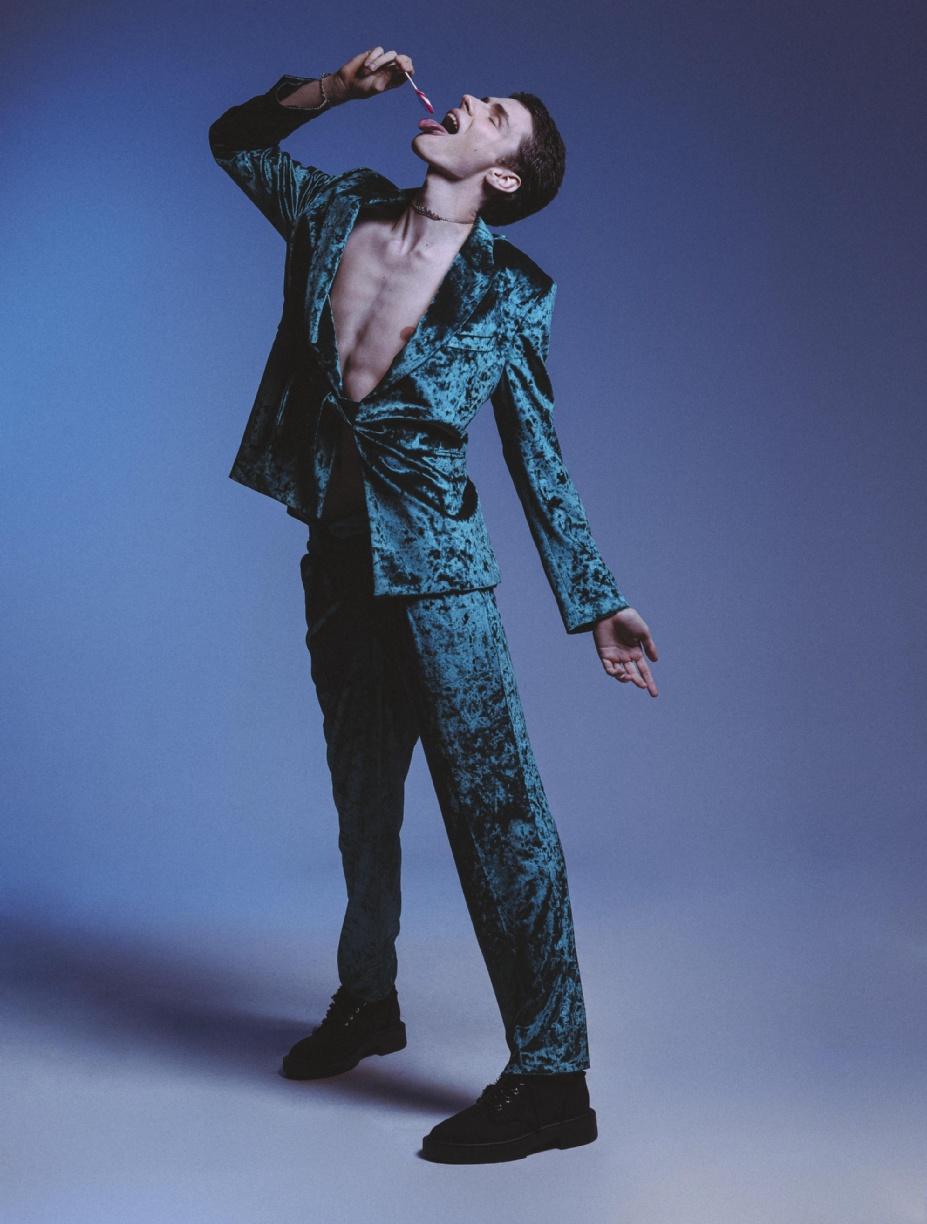 Suit FRANCESCA COTTONE Choker, hand chain bracelet MYRIL Shoes GIUSEPPE ZANOTTI
Suit FRANCESCA COTTONE Choker, hand chain bracelet MYRIL Shoes GIUSEPPE ZANOTTI

 Jacket and pants JOHN RICHMOND
Tank top POLO RALPH LAUREN
Earring RADÀ
Shoes MOSHIONS
Jacket and pants JOHN RICHMOND
Tank top POLO RALPH LAUREN
Earring RADÀ
Shoes MOSHIONS

 Sweatshirt EDWIN Hat HUF
Sweatshirt EDWIN Hat HUF
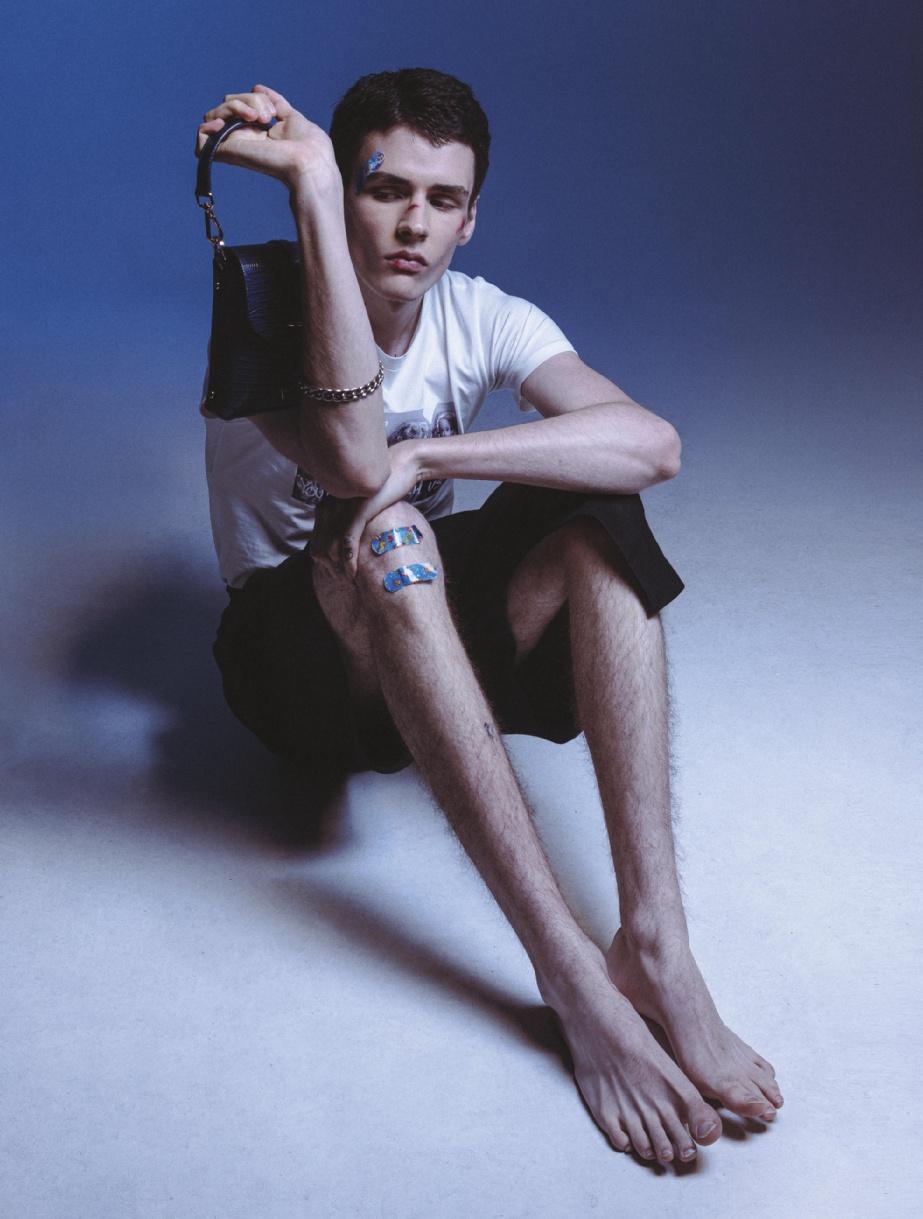 T-shirt THROWBACK Pants MOSHIONS Bag HIVA ATELIER Bracelet RADÀ
T-shirt THROWBACK Pants MOSHIONS Bag HIVA ATELIER Bracelet RADÀ

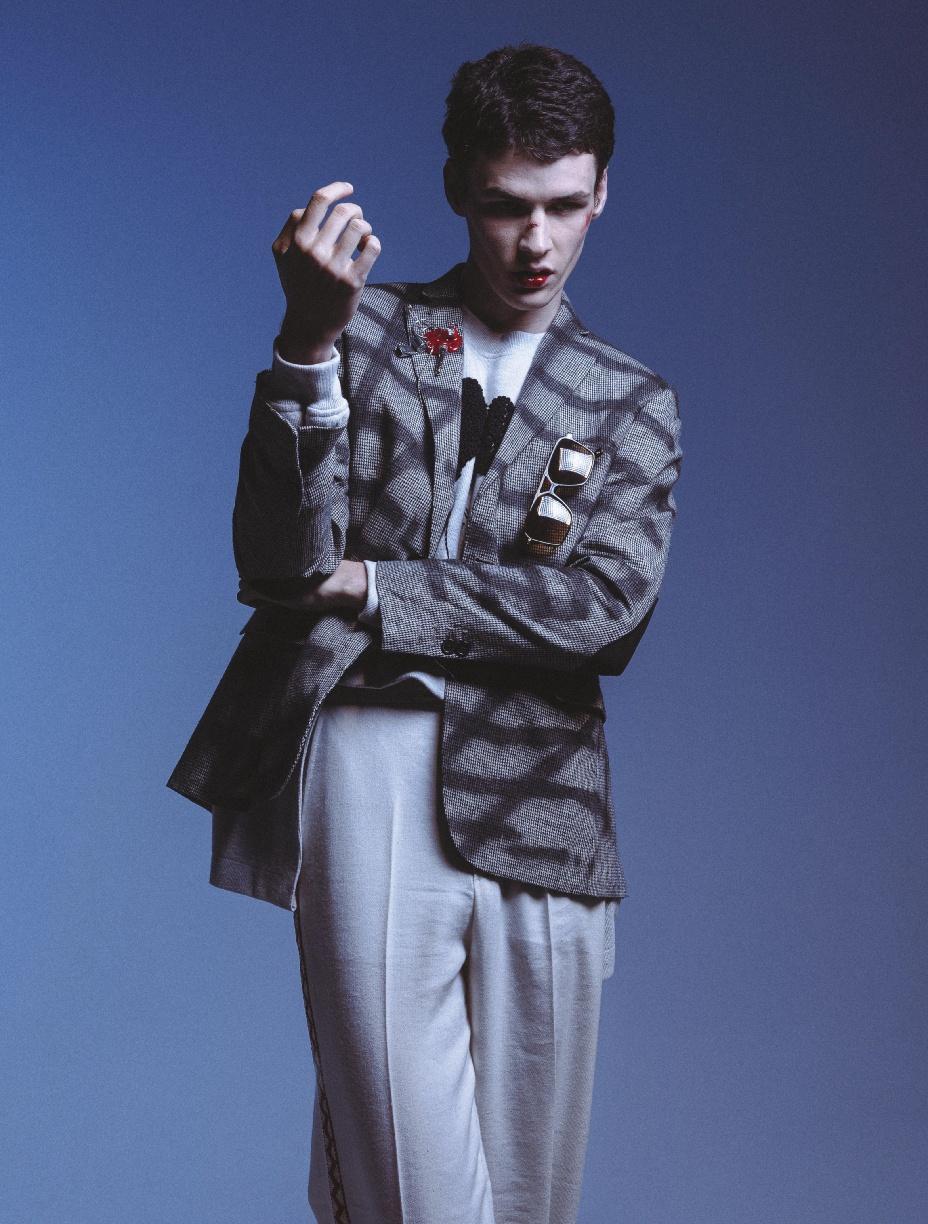 Jacket SIMON CRACKER Sweatshirt and pants MOSHIONS
Sunglasses KYME
Photos by Giorgia Spina Styling by Antonio Musto Make-up: Eleonora Saraceni
Model: Paolo Grebic @BraveModels - Milano
Jacket SIMON CRACKER Sweatshirt and pants MOSHIONS
Sunglasses KYME
Photos by Giorgia Spina Styling by Antonio Musto Make-up: Eleonora Saraceni
Model: Paolo Grebic @BraveModels - Milano

RUNWAY

 Mariacarla Boscono for MUGLER
Photos by Armando Grillo
Mariacarla Boscono for MUGLER
Photos by Armando Grillo
Mugler
 Shalom Harlow
Shalom Harlow

 Irina Shayk
Irina Shayk

 Eva Herzigova
Eva Herzigova
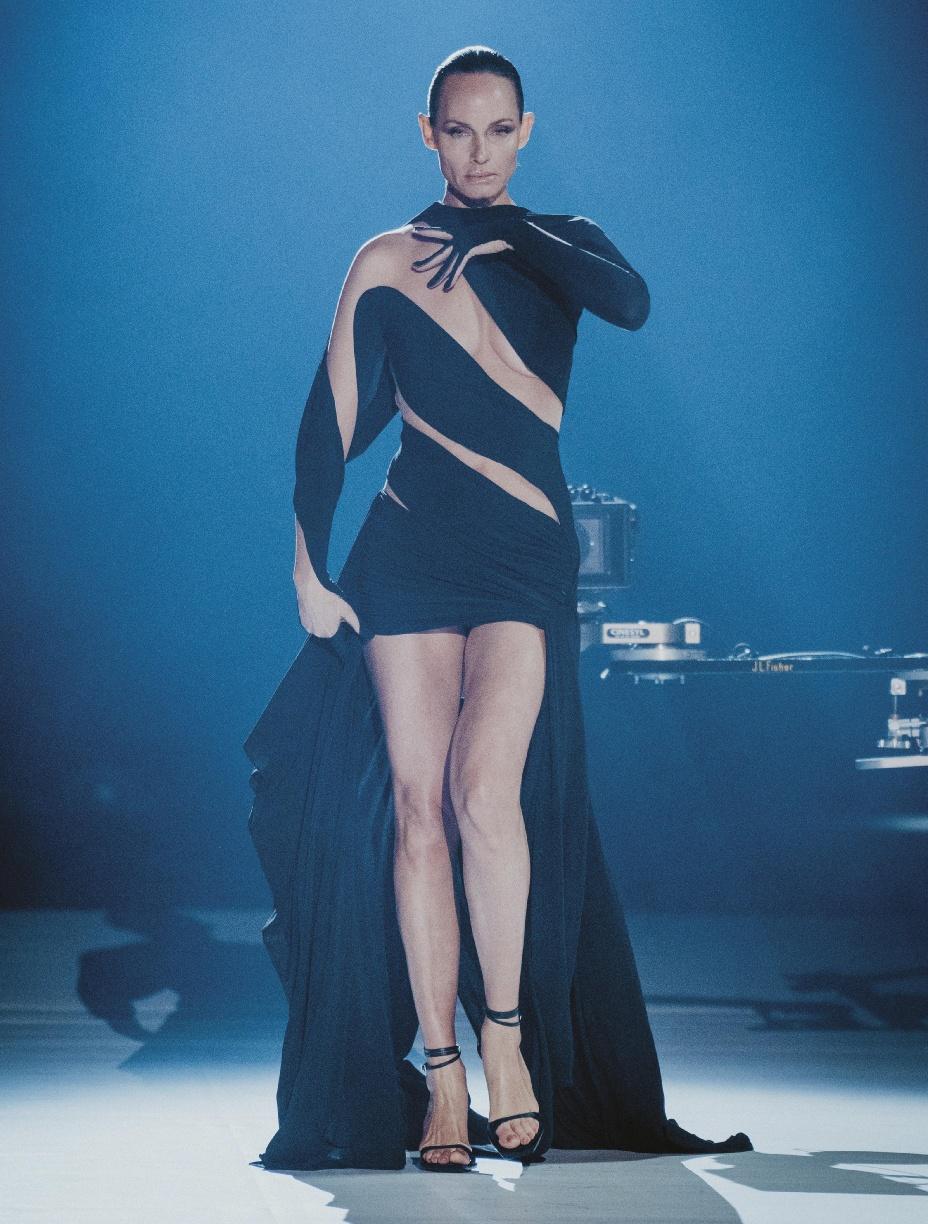 Amber Valletta
Amber Valletta
Valentino


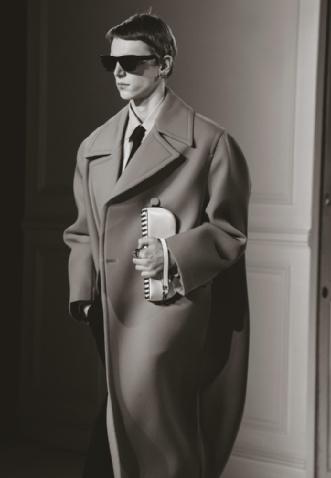



 Ann Demeulmester
Ann Demeulmester

Fendi
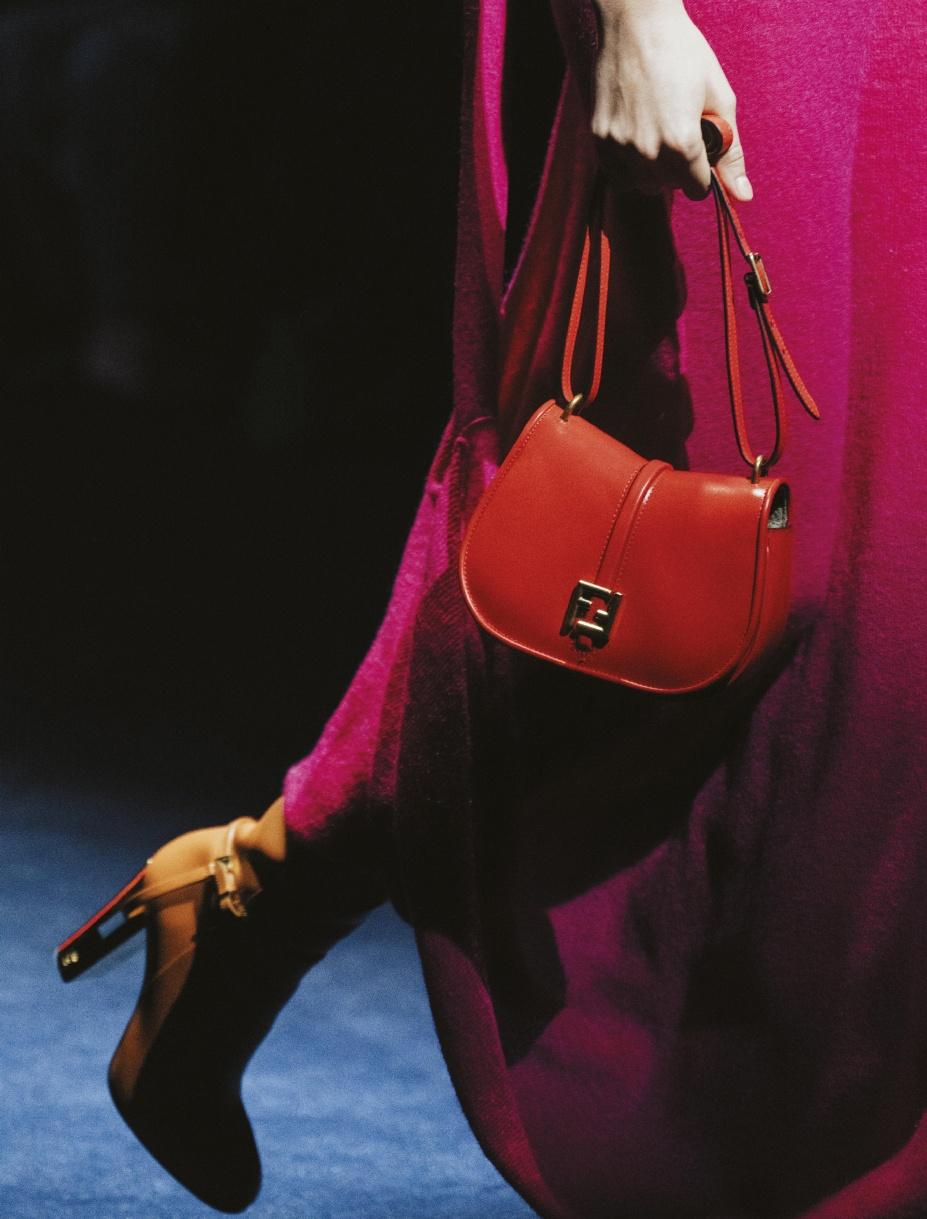






Gucci Man


Junya Watanabe
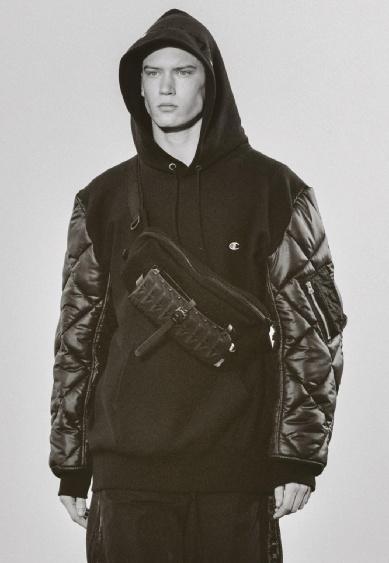

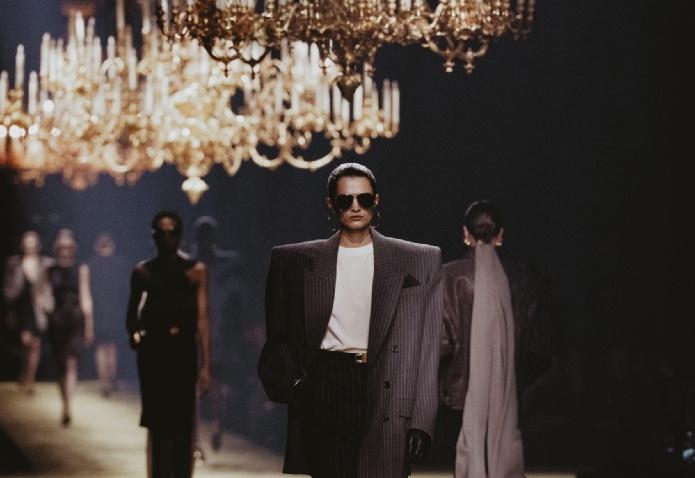


 Saint Laurent
Saint Laurent
Super innovative cluster dedicated to Chinese textiles and apparel
China Chamber of Commerce for Import and Export of Textiles (CCCT), fondata nel 1988 e con più di 10.000 imprese associate distribuite su tutto il territorio cinese, è la più grande organizzazione nazionale di intermediazione per l’importazione e l’esportazione del settore tessile e dell’abbigliamento in Cina e a livello mondiale.
In collaborazione con Jiangsu Kunshan Huaqiao Economic Development Zone Management Committee, CCCT ha dato vita a un cluster di livello internazionale per l’innovazione della catena di approvvigionamento e una piattaforma di servizi pubblici per il tessile e l’abbigliamento.
Situata nel parco industriale della moda di Huaqiao Chenfeng, vicino a Shanghai, una delle capitali mondiali del design, la Huaqiao Chenfeng Fashion Innovation Co Building Base copre una superficie di quasi 140.000 metri quadrati ed è stata realizzata con un investimento totale di 600 milioni di yuan.

Il polo dell’innovazione della moda ha come mission quella di portare innovazione nel settore. Opera come piattaforma finalizzata a potenziare l’industria creativa della moda sfruttando a pieno le risorse già esistenti e incoraggiando la ricerca e sviluppo di soluzioni innovative. Il sito ospita importanti istituzioni universitarie, ha attirato 40 eccellenti team di designer indipendenti, ha aperto 18
spazi destinati all’e-commerce e realizzato una piattaforma di promozione per i marchi basata sul “collegamento creativo e l’innovazione dei contenuti”. Affidandosi a più di 80 fabbriche di alta qualità ha realizzato un centro di approvvigionamento spot per prodotti di abbigliamento innovativi a cui possono accedere catene di supermercati, e-commerce e influencer.
E grazie a 50 produttori di materiali e accessori è divenuto anche un hub per l’approvvigionamento delle materie prime. Un luogo dove la moda ha a disposizione tutti gli strumenti per innovare il prodotto, la comunicazione e la vendita delle sue creazioni.
China Chamber of Commerce for Import and Export of Textiles (CCCT), founded in 1988 and with more than 10,000 member enterprises spread throughout China, is the largest national import and export brokerage organization for the textile and apparel industry in China and globally.
In cooperation with Jiangsu Kunshan Huaqiao Economic Development Zone Management Committee, CCCT has established a world-class cluster for supply chain innovation and a public service platform for textile and apparel. Located in the Huaqiao Chenfeng Fashion Industrial Park near Shanghai, one of the design capitals of the world, the Huaqiao Chenfeng Fashion Innovation Co Building Base covers an area of nearly 140,000 square meters and was built with a total investment of 600 million yuan. The fashion innovation hub has as its mission to bring innovation to the industry. It operates as a platform aimed at enhancing the creative fashion industry by making full use of existing resources and encouraging research and development of innovative solutions. It is home to leading academic institutions, has attracted 40 excellent independent design teams, opened 18 e-commerce rooms and built a promotion platform for brands based on “creative connection and content innovation”. Relying on more than 80 high-quality factories, it has built a spot supply center for innovative clothing products that can be accessed by supermarket chains, e-commerce and influencers. And thanks to 50 manufacturers of materials and accessories, it has also become a hub for sourcing raw materials. A place where fashion has all the tools at its disposal to innovate the product, communication and sale of its creations.
128 CHINA
128

129 CHINA
Saint Angelo
Sartorial quality and technological innovation
Saint Angelo veste in modo impeccabile gli uomini d’affari cinesi e ha sviluppato una fabbrica intelligente ed efficiente che permette la personalizzazione di una produzione consumer di estrema qualità.
Ma chi è Saint Angelo? La linea nasce nel 1996 con l’intento di vestire gli uomini d’affari cinesi: “Volevamo uno stile elegante da gentiluomo per gli uomini dell’élite nazionale, abiti che si adattassero perfettamente alla corporatura di un uomo cinese. Il tutto valorizzato da tessuti di alta qualità, da un design unico e dal contenuto tecnologico innovativo. Abiti di sartoria meticolosi, dalle eccellenti lavorazioni curate in ogni dettaglio”, raccontano dall’azienda. Il brand è di proprietà della cinese Baoxiniao Holding Co, Ltd, azienda quotata alla borsa di Shenzhen, che vanta più di 1700 punti vendita fra online e offline, tre sedi produttive (a Wenzhou, Shanghai e Hefei), e un fatturato annuo al dettaglio di oltre 5 miliardi di yuan. Figura tra le prime 100 società dell’industria dell’abbigliamento cinese. Una società che non si distingue solo per la qualità della sua offerta, ma anche per una forte propensione alla ricerca e sviluppo di soluzioni innovative. Come la fabbrica intelligente Saint Angelo “Yunyi”. Un progetto per la personalizzazione dei capi su larga scala divenuto realtà nel 2015 grazie a un investimento di 100 milioni di yuan. L’azienda cinese ha trovato il modo di sviluppare un sistema di personalizzazione di massa C2B per i marchi di abbigliamento al dettaglio.
Saint Angelo impeccably dresses Chinese businessmen and has developed an intelligent and efficient factory that enables the customization of extremely high-quality consumer production.
But who is Saint Angelo? The line was born in 1996 with the intention of dressing Chinese businessmen: “We wanted an elegant gentleman’s style for the men of the national elite, clothes that perfectly fit the build of a Chinese man. All enhanced by high-quality fabrics, unique design and innovative technological content. Meticulous tailoring clothes with excellent workmanship taken care of in every detail”, they tell from the company.
The brand is owned by China’s Baoxiniao Holding Co, Ltd, a Shenzhen Stock Exchange-listed company that boasts more than 1,700 outlets between online and offline, three production sites (in Wenzhou, Shanghai and Hefei), and annual retail sales of more than 5 billion yuan. It figures among the top 100 companies in China’s apparel industry.
It is a company distinguished not only by the quality of its offerings, but also by a strong propensity for research and development of innovative solutions. Such as the Saint Angelo “Yunyi” smart factory. A large-scale garment customization project that became a reality in 2015 thanks to a 100 million yuan investment. The Chinese company found a way to develop a C2B mass customization system for retail apparel brands.
130 BRANDS
130




131
BRANDS
The fashion world draws inspiration from design to create new forms of visual identity
by Mariacristina Ferraioli
Manifestazioni come il Salone del Mobile e il Fuorisalone sono diventati un appuntamento di rilievo anche per il settore della moda e del fashion. Sono un esempio Louis Vuitton, Dior, casa Hèrmes, Etro e Versace.
Milano si conferma capitale mondiale del design con un’edizione straordinaria del Salone del Mobile che ha superato la cifra monstre di 300.000 visitatori in una sola settimana. Un evento enorme con un’agenda fittissima di appuntamenti e turisti provenienti da ogni parte del mondo che hanno reso l’edizione 2023 la più ricca di sempre. E se fino a qualche anno fa la manifestazione era incentrata esclusivamente sull’arredamento nel senso più stretto del termine, da qualche anno, il Salone del Mobile e il Fuorisalone sono diventati un appuntamento fisso anche per il mondo della moda che guarda con sempre maggiore attenzione all’ambiente domestico sia per espandere il proprio business sia per creare nuove forme di identità visiva.
Partito come settore di nicchia per un numero ristretto di case di moda, l’home design ha acquisito negli anni un’importanza sempre maggiore coinvolgendo una quantità di maison sempre crescente. E se negli anni precedenti l’obiettivo era quello di brandizzare il più possibile l’arredamento, oggi la tendenza è quella di convogliare l’attenzione su un numero limitato di oggetti, meglio se in edizione limitata e super lussuosi. È il caso, ad esempio, di Louis Vuitton che ha presentato a Milano i suoi Objets Nomades, una collezione di elementi d’arredo e di oggetti ispirati al viaggio, progettati in collaborazione con alcuni dei più importanti designer internazionali. Dalle amache agli sgabelli pieghevoli, dalle poltrone ai paraventi, ogni oggetto, rigorosamente in edizione limitata, nasce dall’incontro della visione artistica di un designer con le capacità creative degli artigiani Louis Vuitton. Pezzo forte della collezione 2023 è Cabinet de Curiosité, un baule realizzato dal designer australiano Marc Newson in soli quaranta pezzi che rivisita l’iconico baule da viaggio della maison in chiave contemporanea dando vita ad un autentico scrigno delle meraviglie con al suo interno diciannove contenitori in pelle da combinare tra loro in mille modi differenti.

132 TRENDS
132
>


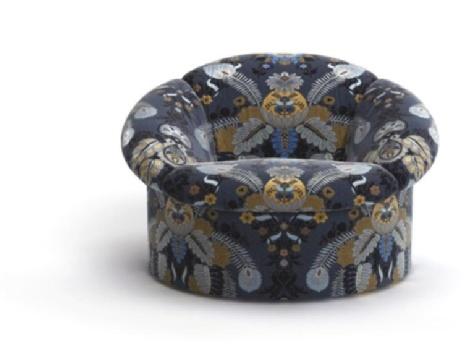
133 TRENDS
LOUIS VUITTON - Cabinet de Curiosité by Marc Newson
HERMÈS
Rrmchair blue by ETRO
Si affida alla superstar del design Philippe Starck, Dior che a Milano ha presentato una rivisitazione in alluminio dell’esclusiva sedia Médaillon, oggetto-feticcio del marchio. La collezione casa di Hèrmes è da sempre simbolo del lusso più ricercato. In occasione del Salone del Mobile, la casa di moda francese ha presentato mobili e arredi dalle linee semplici, senza fronzoli, nel segno di un’eleganza senza tempo. Il legame tra moda e design diventa evidentissimo nell’ultima collezione di Etro Home Interiors, la prima disegnata dal nuovo direttore creativo del brand Marco De Vincenzo. Per sua stessa ammissione, De Vincenzo ha iniziato a elaborare la collezione casa partendo dai tessuti proprio come se fossero degli abiti. Con un richiamo alle atmosfere vintage degli anni Settanta, decennio in cui sono nati sia Etro che il Made in Italy, De Vincenzo si diverte a seminare elementi che collegano le collezioni uomo-donna con la linea home. Così una borsa si trasforma in un porta-riviste, il velluto ad onde visto nella sfilata uomo di gennaio diventa il rivestimento per sedie e divani, il pattern optical e le fantasie botaniche tanto care alla maison danno vita a tappeti ed oggetti d’arredo. Non può mancare, poi, una menzione per Discovery Couch, nuovo divano iper-brandizzato di Versace, progettato in collaborazione con il duo di architetti e designer Ludovica + Roberto Palomba. La lavorazione a spina di pesce del rivestimento, in tessuto o in pelle, richiama una V capovolta, lettera-simbolo della casa di moda.

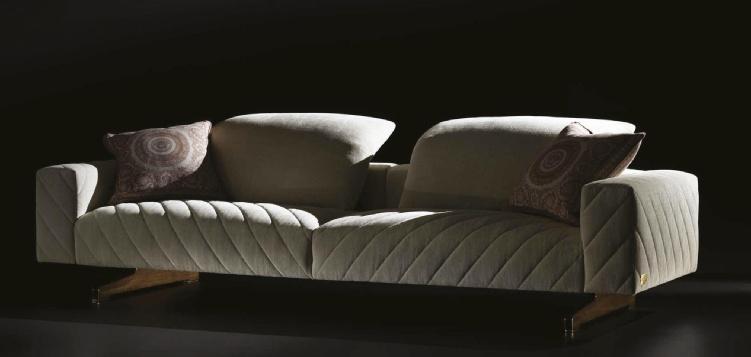
134 TRENDS
> VERSACE HOME
DIOR - Médaillon chair by Philippe Starck

135 TRENDS Home discovery couch by VERSACE
Events such as the Salone del Mobile and Fuorisalone have also become an important event for the fashion and fashion industry. Examples are Louis Vuitton, Dior, Casa Hèrmes, Etro and Versace.
Milan confirmed its position as the world capital of design with an extraordinary edition of the Salone del Mobile that exceeded the monstrous figure of 300,000 visitors in a single week. A huge event with a packed agenda of appointments and tourists from all over the world that made the 2023 edition the richest ever. And if until a few years ago the event was focused exclusively on furniture in the strictest sense of the term, for the past few years, the Salone del Mobile and Fuorisalone have also become a fixture for the world of fashion, which is increasingly looking to the home environment both to expand its business and to create new forms of visual identity. Starting out as a niche sector for a small number of fashion houses, home design has become increasingly important over the years, involving a growing number of maisons. And if in previous years the aim was to brand as much furniture as possible, today the trend is to focus attention on a limited number of objects, preferably limited edition and super-luxurious. This is the case, for example, of Louis Vuitton, which presented in Milan its Objets Nomades, a collection of furniture and objects inspired by travel, designed in collaboration with some of the most important international designers. From hammocks to folding stools, from armchairs to
screens, each object, strictly limited editions, is the result of the encounter between the artistic vision of a designer and the creative skills of Louis Vuitton artisans. The highlight of the 2023 collection is Cabinet de Curiosité, a trunk created by Australian designer Marc Newson in just forty pieces that revisits the House’s iconic travel trunk in a contemporary key, creating an authentic treasure chest of wonders with nineteen leather containers inside that can be combined in a thousand different ways.
Relying on design superstar Philippe Starck, Dior presented in Milan an aluminium reinterpretation of the exclusive Médaillon chair, the brand’s fetish object. The Hèrmes home collection has always been a symbol of the most refined luxury. At the Salone del Mobile, the French fashion house presented furniture and furnishings with simple lines, without frills, in the sign of timeless elegance. The link between fashion and design becomes very evident in the latest Etro Home Interiors collection, the first designed by the brand’s new creative director Marco De Vincenzo. By his own admission, De Vincenzo began to develop the home collection starting with fabrics just as if they were clothes. With a reference to the vintage atmospheres of the Seventies, the decade in which both Etro and Made in Italy were born, De Vincenzo has fun sowing elements that link the men’s-women’s collections with the home line. Thus, a bag is transformed into a magazine holder, the wave velvet seen in the men’s fashion show in January becomes the upholstery for chairs and sofas, the optical pattern and botanical fantasies so dear to the maison give life to carpets and furnishing objects. A mention must also go to Discovery Couch, Versace’s new hyperbranded sofa, designed in collaboration with architect and designer duo Ludovica + Roberto Palomba. The herringbone pattern of the upholstery, in fabric or leather, recalls an upside-down V, the letter-symbol of the fashion house.

136 TRENDS
ETRO HOME

DUECCI GUANTI
Brunello Cucinelli, Gianni Versace, Alberta Ferretti, Moschino, Dsquared2, ma anche Lady Gaga e Chiara Ferragni, sono solo alcune delle più prestigiose collaborazioni di cui può vantarsi DUECCI GUANTI (@dueccigloves) eccellenza del Made in Italy da quasi un secolo.

L’elevatissima qualità e la varietà delle materie prime utilizzate, insieme all’originalità dello studio creativo e alla precisione dei ricami e delle lavorazioni, generano una vera e propria “arte guantaia” che dai primi anni ‘30 è passata di generazione in generazione fino a Simona Colonna che oggi considera il guanto “non un ‘semplice’ accessorio, ma la storia della nostra famiglia”. Una manifattura talmente perfetta da “calzare come un guanto”.

Craving for Peanuts
by Claudio Leone
Brunello Cucinelli, Gianni Versace, Alberta Ferretti, Moschino, Dsquared2, but also Lady Gaga and Chiara Ferragni, are just some of the most prestigious collaborations that DUECCI GUANTI (@ dueccigloves) excellence of Made in Italy can boast of for almost a century.
The extremely high quality and variety of raw materials used together with the originality of the creative study and the precision of the embroidery and workmanship, give life to a true “glove-making art” that since the early 1930s has been passed from generation to generation up to Simona Colonna, who today considers the glove “not a ‘simple’ accessory, but the history of our family”. A so perfect manufacture that it ‘fits like a glove’.
138 PEANUTS
138
CHIHUAHUA DRAGON
Abbracciare contemporaneamente lo stile glamour e l’irriverenza per ispirare le persone ad essere la versione migliore di sé. È questa la mission di Chihuahua Dragon (@chiuauadragon), brand denim artistico e raffinato nato dall’idea di Ivo Barraza Castaneda, designer nato in un’umile cittadina di El Salvador trasferitosi a Parigi nel 2017 a caccia di un sogno: “Fare cose belle che nessuno ha mai visto prima per dimostrare ai futuri ragazzi, nati nelle stesse condizioni, che si può fare la differenza”.
Grazie all’uso esclusivo di tessuti riciclati e una produzione estremamente limitata, costantemente impegnato a migliorare i processi per far parte della rivoluzione eco-sociale, il sogno è divenuto realtà nel 2022 con la nascita dell’e-shop del brand e a breve con la prima collezione completa di Chihuahua Dragon che verrà presentata in occasione della Paris Fashion Week PE2024.
MAM GIOIELLI
L’acronimo ispirato al termine “mamma” - M come movimento, A come arte ed M come mission - identifica MAM, brand in grado di coniugare la moda ai valori etici per uno stile eco-friendly, genderless e rivoluzionario.
Nato nel Born di Barcellona dall’idea di Jordi Enrique Albert ed Anthya Tirado e partito con la creazione di orologi in legno, la storia di MAM si sviluppa, fino all’estensione del marchio ai gioielli e accessori senza regole né stereotipi. Capace di mixare vita urbana, cultura pop, consapevolezza e funzionalità con uno stile ora estremo ora sensazionale, come alcuni pezzi di “I AM LOVE”, ultima novità del brand dedicata all’amore per se stessi, oltre che per il pianeta, visto che i gioielli sono tutti sostenibili.

Simultaneously embracing glamorous style and irreverence to inspire people to be the best version of themselves. This is the mission of Chihuahua Dragon (@chiuauadragon), an artistic and refined denim brand that is the brainchild of Ivo Barraza Castaneda, a designer born in a humble town in El Salvador who moved to Paris in 2017 in pursuit of a dream: “To make beautiful things that no one has ever seen before to show future kids, born in the same conditions, that you can make a difference”.
With exclusive use of recycled fabrics and extremely limited production, constantly striving to improve practices to be part of the eco-social revolution, the dream became a reality in 2022 with the birth of the brand’s e-shop and soon with the first full collection of Chihuahua Dragon to be presented at Paris Fashion Week SS2024.

The acronym inspired by “mother” - M for movement, A for art and M for mission - identifies MAM, a brand able to combine fashion with ethical values for an ecofriendly, genderless and revolutionary style.
Born in Barcelona’s Born from the idea of Jordi Enrique Albert and Anthya Tirado and started with the creation of wooden watches, MAM’s story has grown to extend the brand to jewelry and accessories without rules or stereotypes,. It is able to mix all together urban life, pop culture, awareness and functionality with a style now extreme now sensational, such as some pieces of “I AM LOVE,” the brand’s latest innovation dedicated to loving oneself as well as the planet, since the jewelry is all sustainable.
139
PEANUTS
>
PEANUTS NICCOLÒ PASQUALETTI
Giovanissimo e già pluripremiato, il designer toscano Niccolò Pasqualetti (@niccolopasqualetti), dal lancio del suo brand eponimo nel 2021, è stato tra i vincitori dell’edizione 2021 di ‘Who is on Next?’, ha ricevuto il Premio Franca Sozzani, oltre ad essere uno dei tre vincitori dell’edizione 2023 di CNMI Fashion Trust Grant.
Un talento formatosi tra Venezia e Londra - passando per il Belgio e gli States - sfociato in un nuovo concetto di pezzo unico, rigorosamente Made in Italy: le reinterpretazioni dei capi del guardaroba tradizionale disturbano deliberatamente la distinzione tra abbigliamento maschile e femminile in un paesaggio sartoriale fatto di androginia ambivalente.
PASQUALE BONFILIO
A volte il perfetto mix tra creatività, artigianalità e cura maniacale dei dettagli può trasformare quello che dovrebbe essere un semplice accessorio in una vera e propria scultura dal gusto sofisticato.
È il caso delle creazioni del mastro cappellaio Pasquale Bonifilio (@ bonfilio____hats_), artigiano di origini pugliesi inseritosi nel mondo della moda per sbaglio (o per fortuna) dopo i trascorsi in quello dell’arte, della pittura, del disegno e della scultura.

Ispirato dalle forme della tradizione storica, Bonfilio arricchisce il feltro con materiali e dettagli inaspettati e riferimenti derivanti dal suo “primo amore” artistico per trasformarli in quelle opere uniche che hanno conquistato ambienti teatrali, set cinematografici, stampa e jet set internazionale.
Very young and already an award-winning designer, Tuscan designer Niccolò Pasqualetti (@niccolopasqualetti) has been among the winners of the 2021 edition of “Who is on Next?” since the launch of his eponymous brand in 2021, received the Franca Sozzani Award, as well as being one of the three winners of the 2023 edition of CNMI Fashion Trust Grant.
A talent trained between Venice and London - passing through Belgium and the States - to result in a new concept of unique pieces, strictly Made in Italy, where reinterpretations of traditional wardrobe items deliberately disturb the distinction between menswear and womenswear in a sartorial landscape made of ambivalent androgyny.

Sometimes the perfect mix of creativity, craftsmanship and maniacal attention to detail can turn what should be a simple accessory into a true sculpture with sophisticated taste.
Such is the case with the creations of master hatter Pasquale Bonifilio (@bonfilio____hats_), an artisan of Apulian origins who entered the world of fashion by accident (or luckily) after stints in art, painting, drawing and sculpture.
Inspired by the forms of historical tradition, Bonfilio enriches felt with unexpected materials and details and references derived from his artistic “first love” to transform them into those unique works that have conquered theatrical settings, movie sets, press and international jet set.
140
SUKEINA
“L’abbigliamento è un linguaggio in sé”, sostiene il designer di origine senegalese Omar Salam, fondatore e direttore creativo del brand SUKEINA (@s.u.k.e.i.n.a) fondato nel 2012 il cui nome deriva da quello della defunta madre e che significa “luce brillante”. L’infanzia passata viaggiando e vivendo in diversi Paesi europei ha forgiato la sua passione e l’approccio alla moda a favore di una visione progressiva, innovativa e potente, pur rimanendo elegante. Una moda senza tempo, quella di SUKEINA, che sceglie di osservare il mondo in continua evoluzione. Curiosità sconfinata e cuore aperto si traducono in pezzi senza tempo, dove il capo più sofisticato può trovare spazio anche nella vita di tutti i giorni.
PESCEPAZZO
Shantung di seta, moiré, velluto, ma anche piume di marabù e rami di corallo declinati in un arcobaleno infinito di colori, ecco come si “veste” il PESCEPAZZO (@pescepazzo) di Laura Mendolia. La sua non vuole essere solo una bag, ma un accessorio originale, colorato e versatile. Che “parla” siciliano come la coffa (tipica borsa in paglia realizzata intrecciando foglie di palma nana) da cui trae ispirazione il brand, ma a cui fornisce un respiro internazionale grazie alle molteplici rivisitazioni dal gusto eccentrico.

“Clothing is a language in itself,” argues Senegalese-born designer Omar Salam, founder and creative director of the brand SUKEINA (@s.u.k.e.i.n.a) founded in 2012 whose name derives from that of his late mother and means “bright light.” Her childhood spent traveling and living in different European countries forged her passion and approach to fashion toward a progressive, innovative and powerful vision while remaining elegant.
SUKEINA’s fashion is timeless, choosing to observe the ever-changing world with boundless curiosity and an open heart, translating it into timeless pieces where the most sophisticated garment can also find a place in everyday life.

Dalla filastrocca di nonna Cettina, il “Pescepazzo” ha nuotato nel mare della moda partendo da Taormina e attraversando poi varie località turistiche come Capri e Porto Cervo, fino ad approdare, nel Maggio 2023, ai “Bagni Pescepazzo”, primo pop up store milanese del brand. Silk shantung, moiré, velvet, but also marabou feathers and coral branches declined in an infinite rainbow of colors, this is how Laura Mendolia’s PESCEPAZZO (@pescepazzo) is “dressed.” Hers is not meant to be just a bag, but an original, colorful and versatile accessory. Which “speaks” Sicilian as the coffa (typical straw bag made by weaving dwarf palm leaves) from which the brand draws inspiration, but to which it provides an international breath thanks to the multiple reinterpretations with eccentric taste.
Since Grandma Cettina’s nursery rhyme, “Pescepazzo” has swum in the sea of fashion starting from Taormina and then crossing various tourist resorts such as Capri and Porto Cervo, until landing, in May 2023, at “Bagni Pescepazzo,” the brand’s first Milanese pop-up store.

141 PEANUTS
Le previsioni parlano di un mercato globale delle calzature che passerà da 385,1 miliardi di dollari, registrati nel 2021, a 575,7 miliardi di dollari entro il 2030, con un tasso di crescita annuale del 5,5%. Ma a cosa è dovuto e da cosa è trainato questo andamento positivo? Si registra un aumento della domanda di calzature di alta qualità, prodotte con sistemi sostenibili, nonché caratterizzate da importanti innovazioni, tutto questo senza dimenticare l’estetica e la moda. Tra i cambiamenti più apprezzati emerge il passaggio degli operatori di settore dalla pelle tradizionale alle materie prime naturali, ecologiche, riciclate e riciclabili. Inoltre, i produttori si concentrano sempre di più sullo sviluppo di design unici continuando anche a valorizzare l’importanza del comfort. Questa tendenza incontra il crescente interesse per le attività sportive, sia in palestra sia all’aperto, come la corsa e il ciclismo, che necessitano di calzature apposite. Si prevede, infatti, che il segmento delle scarpe sportive crescerà rapidamente e sarà uno dei fattori trainanti dello sviluppo esponenziale di tutto il mercato calzaturiero. Certo, il panorama è molto competitivo - visto che i principali attori sono marchi del calibro di Nike, Adidas, Mizuno, Puma, Under Armour, Skechers, Fila, Diadora, Asics - ma le piccole e medie imprese possono competere allineando la produzione alle richieste dei consumatori. La domanda di calzature è guidata dalla propensione alla ricerca di calzature specifiche per ogni tipo di attività. È probabile che i nuovi lanci destinati a categorie sportive specifiche contribuiranno ad accelerare la crescita del segmento.
Portiamo l’esempio di Navigator, la scarpa intelligente made in India di Ajanta Shoes: si tratta di uno dei prodotti maggiormente rivoluzionari nel settore calzature. Questa scarpa conteggia i passi, monitora la forma fisica, rileva le cadute, rende possibile la composizione rapida delle chiamate, ha accesso alle applicazioni musicali e altre caratteristiche personalizzabili. I comandi avvengono con determinati e precisi movimenti del piede, forse ci vuole un po’ di allenamento per utilizzarle al meglio, ma questa case history ci fornisce un’indicazione su dove potrebbe dirigersi il settore grazie all’innovazione. Le aziende di questo mercato stanno progressivamente incorporando tecnologie 4.0 nei processi produttivi e nella gestione generale d’impresa. Si prevedono integrazioni che miglioreranno la conduzione della catena di approvvigionamento consentendo a tutti gli attori dell’indotto di scegliere i partner a loro affini, prendere decisioni mirate in tema di sostenibilità e soddisfare con successo la domanda della propria clientela. Grazie alla crescente enfasi sulla conservazione dell’ambiente, i consumatori chiedono

142 SUSTAINABILITY
Previsione di un trend positivo per il mondo delle calzature, soprattutto grazie ai processi di produzione sostenibili e alla crescita del settore fitness che guadagnano l’interesse dei consumatori.
Footwear market prepares for exponential growth
sempre più scarpe sostenibili e anche i governi dei diversi paesi si stanno dirigendo sempre più verso la valorizzazione di coloro che dimostrano di avere una produzione che rispetta i lavoratori e l’ambiente. I principali attori del mercato si stanno concentrando sulla produzione di calzature realizzate con materiali riciclabili e di origine vegetale. Come Veja che vende sneaker realizzate con materie prime ecologiche e provenienti da agricoltura biologica. La controindicazione che potrebbe emergere è il limitato potere d’acquisto di alcuni consumatori per prodotti sostenibili dal costo maggiore. D’altro canto, le persone con un reddito medio-alto sono sempre più disposte a spendere per prodotti che rispettino requisiti green, ottima qualità e prestazioni di alto livello.
Forecasts speak of a global footwear market that will grow from USD 385.1 billion in 2021 to USD 575.7 billion by 2030, with an annual growth rate of 5.5%. But what is this positive trend due to and driven by? There is an increase in demand for high quality footwear, produced with sustainable systems and characterised by important innovations, all this without forgetting aesthetics and fashion. Among the most popular changes is the shift by industry players from traditional leather to natural, environmentally friendly, recycled and recyclable raw materials. In addition, manufacturers increasingly focus on developing unique designs while also continuing to emphasise the importance of comfort. This trend meets the growing interest in sports activities, both in the gym and outdoors, such as running and cycling, which require specialised footwear. In fact, the sports shoe segment is expected to grow rapidly and will be one of the driving factors behind the exponential development of the entire footwear market. Certainly, the landscape is very competitive - as the main players are brands of the calibre of Nike, Adidas, Mizuno, Puma, Under Armour, Skechers, Fila, Diadora, Asics - but small and medium-sized companies can compete
by aligning production to consumer demands. The demand for footwear is driven by the propensity to search for specific footwear for each type of activity. New launches targeting specific sports categories are likely to help accelerate the segment’s growth. Let us take the example of Navigator, the smart shoe made in India by Ajanta Shoes: it is one of the most revolutionary products in the footwear industry. This shoe counts steps, monitors fitness, detects falls, enables fast dialling, has access to music apps and other customisable features. The commands are made with specific and precise foot movements, it may take some training to use them to their full potential, but this case history gives us an indication of where the industry might be heading with innovation. Companies in this market are progressively incorporating 4.0 technologies into production processes and general business management. Integrations are expected to improve supply chain management, enabling all players in the supply chain to choose like-minded partners, make targeted sustainability decisions and successfully meet customer demand. With the growing emphasis on environmental conservation, consumers are increasingly demanding sustainable shoes, and governments in different countries are also increasingly moving towards valuing those who demonstrate worker- and environmentally-friendly production. Major market players are focusing on producing footwear made from recyclable and plant-based materials. Such as Veja, which sells trainers made from environmentally friendly and organically grown raw materials. The downside that might emerge is the limited purchasing power of some consumers for more expensive sustainable products. On the other hand, people with an upper-middle income are increasingly willing to spend on products that meet green requirements, excellent quality and high performance.
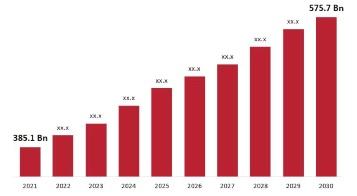
SUSTAINABILITY 143
Fonte: extrapolate.com - Retail footwear market
A positive trend is predicted for the footwear world, mainly due to sustainable production processes and the growth of the fitness sector gaining consumer interest.
Figus Designer
MeLa Mangio, MeLa Compro, MeLa Metto, MeLa Godo e MeLa Prendo (cartella, mini bag, borsetta da polso o a mano, baguette, postina): sono questi i 5 modelli della nuova capsule AppleBag by Figus, creata con materiale in pelle totalmente vegetale, ottenuto dagli scarti delle mele utilizzate nell’industria alimentare. Leggere e impermeabili, le AppleBag sono disponibili in diversi colori che si ispirano al frutto e sono dotate di catena dorata regolabile (in alcuni modelli) e tasca interna, per adattarsi a qualsiasi outfit. Le linee sono rotonde, armoniche e pulite; il materiale è leggero, impermeabile, resistente e morbido e rappresenta una valida alternativa al pellame animale, in versione vegan.
MeLa Mangio, MeLa Compro, MeLa Metto, MeLa Godo and MeLa Prendo (satchel, mini bag, wrist or hand bag, baguette, postina): these are the 5 models of the new AppleBag capsule by Figus, created with totally vegetable leather material, obtained from the waste of apples used in the food industry. Lightweight and waterproof, the AppleBags come in different colours inspired by the apple fruit and are equipped with an adjustable golden chain (in some models) and lining pocket, to fit any outfit. The lines are round, harmonic and clean; the material is light, waterproof, resistant and soft and represents a valid alternative to animal leather, in a vegan version.

144 It’s happen
PRESS ROOM
Press Room:
144
D.A.T.E.
By the sea è la nuova collezione che D.A.T.E. porta a Pitti Immagine Uomo, dove design, innovazione e ricerca si uniscono alla passione per il mare, con una palette cromatica intensa e tipicamente marittima. Modello chiave della collezione è la K2, una sneaker la cui suola dentellata bicolor si accompagna a una tomaia caratterizzata da un mix materico dove il tessuto è in dialogo con la pelle e il suede. La calzata è resa più confortevole dal soletto in gel rialzato di 2 cm nella parte posteriore e l’attenzione per i dettagli regala all’insieme un gusto sport-chic: impunture a vista, occhielli in metallo con lacci coordinati, loghi impressi sulla suola e lateralmente.
Ellesse
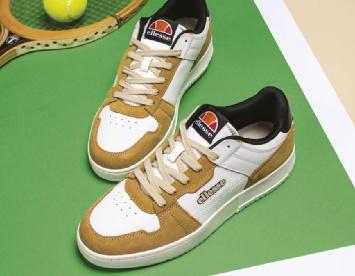
Il brand perugino, noto per aver rivoluzionato il mondo ed il concetto stesso dello sport influenzando la moda anche al di fuori dei campi da gioco, per l’estate ’24 porta a Pitti Uomo una nuova collezione giocosa, colorata, dinamica, perfetta per il tema ludico Pitti Games che caratterizza questa stagione moda dei Saloni fiorentini. Troviamo quindi modelli retro-running e a cassetta, ispirazioni al mondo dello sport anni ’70, personalizzazioni “extra-size”, ma anche nuance anni ’80, trend “Mix&Match”, nonché look tecnici e performanti uniti al gusto vintage tipico del brand. Una collezione che si preannuncia fra le più interessanti di sempre.
By the sea is the new collection that D.A.T.E. brings to Pitti Immagine Uomo, where design, innovation and research combine with a passion for the sea, with an intense and typically maritime colour palette. The key model in the collection is the K2, a trainer whose two-tone notched sole is accompanied by an upper characterised by a material mix where fabric dialogues with leather and suede. The fit is made more comfortable by the gel insole raised by 2 cm at the back and the attention to detail gives the whole a sport-chic feel: visible stitching, metal eyelets with matching laces, logos embossed on the sole and on the sides.
The Perugian brand, known for revolutionising the world and the very concept of sport by influencing fashion even outside the playing fields, brings to Pitti Uomo for summer ‘24 a new playful, colourful, dynamic collection, perfect for the playful Pitti Games theme that characterises this fashion season of the Florentine Saloni. So we find retro-running and box models, inspirations from the world of 1970s sport, “extra-size” customisations, but also 80s nuances, “Mix&Match” trends, as well as technical and high-performance looks combined with the brand’s typical vintage taste. A collection that promises to be one of the most interesting ever.

145 PRESS ROOM >
LF Luís Figo
Luís Figo, leggenda del calcio mondiale, insignito del Pallone d’Oro nel 2000, lancia il suo personale brand di moda: LF. La sigla gioca con le cifre del suo nome - LF Luís Figo - ma anche con il posizionamento stesso del marchio LF - Luxury Fashion: una collezione high-end dedicata all’uomo contemporaneo, sobria, elegante e raffinata, che spazia dal travelwear allo sportswear, a quello che il brand definisce “new chicwear”, termine che ne inquadra perfettamente l’ispirazione. Capi realizzati dalle esperte mani dei sarti italiani, che raccontano tutta la storia che ha reso famoso il Made in Italy nel mondo, ma anche guanti e calzature in pellami pregiati, la cui suola, nelle sneakers, è in caucciù, naturalmente morbida e confortevole.
Piquadro
A Pitti Uomo, il marchio italiano di prodotti tech-design propone un’importante novità: l’estensione della linea eco-responsabile Corner 2.0 (successo dei primi anni 2000) con l’inserimento dei trolley e delle sneaker da donna. Destrutturati e morbidi, i trolley sono protetti, come le sneaker e gli zaini, dagli angolari, iconico dettaglio della linea Corner, con un sistema modulare di aggancio che permette di fissarne due o più tra loro per un utilizzo del tutto nuovo. Le sneaker, invece, hanno tomaia in tessuto e PU riciclati, soletta interna in sughero, mentre la suola e il battistrada contengono plastiche recuperate da scarti di produzione. Coerentemente con la strategia green di Piquadro, i trolley e il nuovo modello di sneaker sono carbon neutral.
Luís Figo, world football legend and winner of the Golden Ball in 2000, launches his own fashion brand: LF. The acronym plays with the digits of his name - LF Luís Figo - but also with the very positioning of the LF brand - Luxury Fashion: a high-end collection dedicated to the contemporary man, sober, elegant and refined, ranging from travelwear to sportswear, to what the brand defines as ‘new chicwear’, a term that perfectly frames its inspiration. Garments made by the expert hands of Italian tailors, which tell the story that has made Made in Italy famous throughout the world, as well as gloves and shoes in fine leathers, the sole of which, in the trainers, is made of rubber, naturally soft and comfortable.

At Pitti Uomo, the Italian tech-design brand proposes an important novelty: the extension of the eco-responsible Corner 2.0 line (a success in the early 2000s) with the inclusion of women’s trolleys and trainers. De-structured and soft, the trolleys are protected, like the trainers and backpacks, by the corner pieces, an iconic detail of the Corner line, with a modular attachment system that allows two or more to be attached to each other for a whole new use. The trainers, on the other hand, have recycled fabric and PU uppers, a cork lining, while the sole and tread contain plastics recovered from production waste. Consistent with Piquadro’s green strategy, the trolleys and the new trainer model are carbon neutral.

146 PRESS ROOM
L’arabesque Milano
Nato nel 2010 in Largo Augusto dallo slancio emozionale di Chichi Meroni, L’Arabesque Cult Store è un luogo dove passioni e ricordi si rincorrono senza fermarsi mai, dedicato a design, moda, libri introvabili, bijoux d’epoca, profumi e, successivamente, la prima design gallery e café con la libreria (Corso di Porta Vittoria), il vintage archive (Via Francesco Sforza) e la palestra (Corso di Porta Vittoria). Tra gli oggetti curiosi e originali che propone segnaliamo: Rucksack, lo zaino rigido in plexi con stampa volto intercambiabile, spallacci e retro in nylon, e le Old School Sneakers in tessuto bianco con logo stampato a contrasto nero e blu, e suola in gomma.
Panchic

Il brand giovane e ricercato propone in collezione le nuove Flat slide, leggere e confortevoli, ideali da indossare a piede nudo o con una calza, e pronte ad accompagnarci nelle miti giornate primaverili e nelle afose giornate estive. Una calzatura che racconta il mondo Panchic, un mondo in continua mutazione ed evoluzione. Le troviamo in versione pelle iridescente craquelé oppure in pelle multicolor effetto razza, dove i colori rimandano ai mondi marini e alla forza e alla vitalità dell’acqua. Per rispecchiare l’animo del brand non si abbandonano, tuttavia, i colori pop, che ritroviamo nella versione Candy pink in microfbra effetto suede.

Born in 2010 in Largo Augusto from the emotional impulse of Chichi Meroni, L’Arabesque Cult Store is a place where passions and memories chase each other without ever stopping, dedicated to design, fashion, unobtainable books, vintage bijoux, perfumes and, later, the first design gallery and café with a bookshop (Corso di Porta Vittoria), vintage archive (Via Francesco Sforza) and gym (Corso di Porta Vittoria). Among the curious and original objects on offer are: Rucksack, the rigid plexi backpack with interchangeable face print, shoulder straps and nylon back, and the Old School Sneakers in white fabric with contrasting black and blue logo print and rubber sole.
The young and sophisticated brand proposes in its collection the new Flat slides, light and comfortable, ideal to wear barefoot or with a sock, and ready to accompany us on mild spring days and sultry summer days. A shoe that narrates the Panchic world, a world in continuous mutation and evolution. We find them in an iridescent craquelé leather version or in multicoloured ray-effect leather, where the colours recall marine worlds and the strength and vitality of water. To reflect the soul of the brand, however, pop colours are not abandoned, which we find in the Candy pink version in suede-effect microfbra.
147 PRESS ROOM
The balance point
by Giulio Alberoni Artwork by Joe Colosimo
Era la seconda metà degli anni ‘90. Avevo grosso modo vent’anni, quando fui incaricato dal patrigno della mia fidanzata di allora, di comprare dei limoni di Sorrento per fare il limoncello. Lui era di Sorrento. I limoni li aveva nel sangue. Metaforicamente. Credo che nel sangue avesse al massimo del colesterolo. Il compito non era certo dei più gravosi, ma era di sicuro un affare da cerchio della fiducia. Sapevo in che ipermercato andare, sapevo cosa comprare e quanto comprarne. Era impossibile sbagliare.
Prendo la Turbinosa, la mia scoppiettante auto dell’epoca, e vado all’Ipermercato Montebello. Faccio incetta dei limoni che mi sono stati richiesti, me li faccio pesare, e vado in cassa. Pago e torno alla Turbinosa per andare a consegnare i limoni di Sorrento al suddetto patrigno, nella ridente San Sebastiano Curone. Esiste veramente, non è un posto inventato come Vigata o l’isola che non c’è. Del resto, se esiste Montebello, può esistere anche San Sebastiano Curone.
Sono faceto e allegro, baciato da un sole appenninico screziato di verde, quando durante il tragitto mi cade l’occhio sul sacchetto di limoni. O meglio, sull’etichetta apposta sul sacchetto di limoni. C’era scritto “limoni biologici origine Argentina”. Oh my God! Non erano i limoni di Sorrento!!! Qualche impostore aveva messo dei limoni Argentini dove fino a qualche giorno prima c’erano i limoni di Sorrento. Li avevo presi nello stesso identico posto. Panico! “Adesso cosa faccio?!? Ormai li ho pagati. Ero convinto fossero quelli giusti”. Dopo aver scartato sia l’ipotesi di fingere un’effrazione alla macchina o una rapina a mano armata finalizzata al solo furto dei limoni di Sorrento, sia la simulazione di un incidente in cui l’unica vittima sarebbero stati sempre quei limoni, decido di portarli a San Sebastiano Curone facendo finta di niente.
Mi dissi: “Farò finta di non essermene accorto e con quei limoni senza pedigree potranno comunque farci altro”.
Arrivo nella (abbastanza) amena località piemontese dove ad accogliere i limoni - non erano lì per me, ma per gli agrumi - c’è un comitato di ricevimento in pompa magna.
L’entusiasmo è tale che nessuno legge quell’etichetta che, anzi, finisce immediatamente nel cestino insieme al sacchetto. I limoni sono posti in un cestino di vimini e da quel momento in poi inizia una serie interminabile di elogi in crescendo per magnificare quegli agrumi. “Vedi, solo a Sorrento hanno questa buccia e questo colore. E la forma? Inconfondibile. Questi sono i veri limoni, non quella robaccia del supermercato che non si sa da dove venga. Il vero limone è questo, il limone di Sorrento”. In effetti, io quei limoni non sapevo esattamente da dove venissero, se da Tucuman o da qualche altra regione del nord dell’Argentina, ma certamente non hanno mai visto la Campania né Sorrento… neppure in cartolina.

E quei poveri limoni, abituati all’idioma sud-americano erano certamente più spiazzati di me, perché non capivano una parola di quello che quell’uomo stava dicendo loro con tanto amore.
Ero sicuro che la frode alimentare sarebbe stata svelata al momento dell’assaggio, nel momento decisivo. Il momento della verità. Invece la litania proseguì con lo stesso tono: “…e senti il sapore. Sono dolci. Nessun altro limone è così dolce. Questi si possono mangiare così come sono perché sono dolcissimi. È la terra della Costiera che fa la differenza. Quella terra e quel sole ci sono solo lì ….Vide ‘o mare quant’è bello, Spira tanto sentimento... Comme tu, a chi tiene mente, Ca scetato ‘o faje sunnà...”.
Ecco, è esattamente in quel momento, che ho scoperto l’importanza della narrazione intesa come storia, creatività, arte e fantasia. Fino ad allora pensavo che il narrare, soprattutto nel contesto del commercio e della pubblicità, avesse un’importanza relativa, che fosse una componente un po’ sopravvalutata della nostra civiltà. È ovvio che si venda il detersivo MacchiaRaus se passano la pubblicità su tutte le reti televisive nazionali 24 volte in un’ora. In quel momento, assaggiando una fetta di limone di Sorrento-Tucumam
148 STORY
148 >

149 STORY
agra come il radiatore di una Fiat Uno, ho capito che per noi, per gli Homo Sapiens Sapiens, ogni cosa si compone di una parte oggettiva e una narrativa. Le due possono essere in armonia oppure una può prevalere sull’altra. Se è la narrazione a primeggiare, come nel caso dei limoni di San Sebastiano Curone, a essere coinvolto è il cuore, la passione. Nel caso opposto, invece, quando prevale la componente oggettiva, c’è poco o scarso coinvolgimento da parte nostra, della nostra mente. Tutto quanto presenta un’alta componente oggettiva ci interessa meno. Non prevede la componente immaginifica e fantasiosa infusa dalla narrazione, ad esempio, una lampadina o il contenitore dell’umido. Ma fai disegnare un contenitore dell’umido a Philippe Starck e immediatamente l’equilibrio tra componente oggettiva e narrazione si rimescolano, la narrazione ha il sopravvento, e la gente impazzisce per il contenitore dove butta gli scarti delle patate e le lische del pesce.
È il nostro cervello ad essere predisposto a questo movimento.
Vogliamo che in qualche modo le cose abbiano una loro storia, una loro vita, che posseggano qualcuna delle componenti delle nostre vite: fantasia, creatività, storia, arte… che ci assomiglino. Che abbiano un’anima. I limoni Argentini portati a quel pover’uomo non erano di Sorrento, ma narravano comunque Sorrento, i suoi colori, il suo mare, la sua millenaria civiltà. Per lui erano più limoni di Sorrento quelli che gli avevo portato io, rispetto ai veri limoni di Sorrento. È la narrazione a prevalere sulla componente oggettiva. Di certo non è giusto prevalga in eccesso. Come ho detto, è l’equilibrio tra le due componenti a creare il mix perfetto che ha più successo presso i nostri esigenti neuroni. Una componente può prevalere, ma se si eccede dal lato oggettivo la cosa ha per noi il valore di uno stuzzicadenti, se invece, all’opposto, prevale la componente narrativa, il rischio è che si superi il livello del credibile. Spesso una narrazione è una creazione collettiva, impiega decenni o secoli a formarsi, ma è altrettanto comune che a crearla sia un singolo, capace di non esagerare. Altrimenti si perde di credibilità, si supera per l’appunto il livello del credibile. La narrazione deve essere vera o quantomeno verosimile.
Dato che eravamo rimasti nel basso Piemonte, non spostiamoci tanto da San Sebastiano Curone. Non lontano da lì, infatti, si produce un formaggio che prende il nome dal suo luogo di origine: Montebore. Il Montebore è un formaggio molto particolare. È a forma di torta nuziale. È formato da tre forme di formaggio di dimensioni differenti, sovrapposte e fatte stagionare insieme e quindi fuse tra loro. Il Montebore fu creato con quella particolare forma di torta nuziale nel 1489 per festeggiare il matrimonio tra il Duca di Milano e Isabella d’Aragona. Da allora quel formaggio nuziale sopravvive, anche se recentemente ha rischiato di essere dimenticato e scomparire. Io adoro il Montebore, ma la narrazione che lo accompagna, quella ufficiale, esprimerebbe un vero e proprio miracolo storico.
Sì, perché la prima torta nuziale a piani, a forma di Montebore per intenderci, è stata creata nel 1840, e fu preparata in Inghilterra per essere servita al matrimonio della futura regina Vittoria con il suo amato Alberto di Sassonia-Coburgo-Gotha. Ecco, quindi, che o a Montebore erano talmente lungimiranti da anticipare la storia di 350 anni, oppure chi si è occupato della comunicazione del formaggio si è fatto prendere la mano dalla componente narrativa. Fortunata-
mente in pochi conoscono dettagli trascurabili della storia, come la creazione della prima torta nuziale a piani, ma un errore del genere potrebbe danneggiare il prodotto narrato perché a quel punto tutta la vicenda e il prodotto stesso perderebbero di credibilità.
Il Montebore è nato per caso, qualcuno ha sovrapposto delle forme di formaggio e ha visto che così composte erano belle. Siamo nel paese della bellezza, di Caravaggio, di Botticelli, di Leonardo, di Giò Ponti e di Ettore Sottsass. Questo è sufficiente. È già narrazione, il Montebore probabilmente è uno dei primi prodotti gastronomici in cui è stato applicato un concetto estetico, di design. La componente narrativa della bellezza che prevale su quella oggettiva della nutrizione per la sopravvivenza.
Il Montebore è architettura gastronomica. Un design anticoed e hypermoderno al contempo. Rivoluzionario! Non è magia narrativa questa? La sua narrazione è già racchiusa nel prodotto, basta solo individuarla e mostrarla al pubblico.
Io ho parlato di cibo, ma lo stesso vale per qualsiasi altra cosa, un paio di scarpe, una borsa, una barca, una macchina, degli occhiali. Il successo di ciascuna di queste cose sta nell’equilibrio tra componente oggettiva e componente narrativa. Più un oggetto è lussuoso o coinvolgente, più la bilancia deve oscillare verso la narrazione. Ma senza esagerare. Rimaniamo veri o quantomeno verosimili.
It was the second half of the 1990s. I was roughly 20 years old when I was instructed by my then girlfriend’s stepfather to buy Sorrento lemons to make limoncello. He was from Sorrento. Lemons were in his blood. Metaphorically. I think he had cholesterol in his blood at most. The task was certainly not the most onerous, but it was certainly a circle-of-trust affair. I knew which hypermarket to go to, I knew what to buy and how much to buy. It was impossible to go wrong.
I take the Turbinosa, my crackling car of the era, and go to the Montebello Hypermarket. I hoard the lemons that were requested, have them weighed, and go to the checkout. I pay and return to Turbinosa to go deliver the Sorrento lemons to the aforementioned stepfather in charming San Sebastiano Curone. It really exists, not some made-up place like Vigata or Neverland. After all, if Montebello exists, so can San Sebastiano Curone.
I am facetious and cheerful, kissed by an Apennine sun mottled with green, when my eye falls on the bag of lemons on the way. Or rather, on the label affixed to the bag of lemons. It said “organic lemons originated in Argentina.” Oh my God! These were not Sorrento lemons!!! Some impostor had put Argentine lemons where until a few days before there were Sorrento lemons. I had gotten them in the exact same place. Panic! “Now what do I do!!!? I’ve paid for them by now. I was convinced they were the right ones.” After discarding either faking a car break-in or an armed robbery aimed only at stealing the Sorrento lemons, or faking an accident in which the only victim would always be those lemons, I decided to take them to San Sebastiano Curone pretending nothing had happened.
I said to myself, “I’ll pretend I didn’t notice, and with those pedigree-free lemons they can still do something else with them.”
150 STORY
>

I arrive in the (fairly) pleasant Piedmontese town where to welcome the lemons-they were not there for me, but for the citrus-there is a pompous reception committee.
The enthusiasm is such that no one reads that label, which, indeed, immediately ends up in the basket along with the bag. The lemons are placed in a wicker basket, and from then on an endless series of crescendoing praise begins to magnify those citrus fruits. “You see, only in Sorrento do they have this peel and this color. And the shape? Unmistakable. These are the real lemons, not that supermarket junk that you don’t know where it came from. The real lemon is this, the Sorrento lemon.” In fact, I didn’t know exactly where those lemons came from, whether from Tucuman or some other region in northern Argentina, but they certainly never saw Campania or Sorrento--not even on a postcard.
And those poor lemons, accustomed to the South American idiom were certainly more bewildered than I was, for they did not understand a word of what the man was so lovingly telling them.
I was sure that the food fraud would be revealed at the moment of tasting, at the decisive moment. The moment of truth. Instead, the litany continued in the same tone: “...and taste. They are sweet. No other lemon is so sweet. You can eat these as they are because they are so sweet. It is the land of the Coast that makes the difference. That land and sunshine are only there ....Vide ‘o mare quant’è bello, Spira tanto sentimento... Comme tu, a chi tiene mente, Ca scetato ‘o faje sunnà....”
There, it was exactly at that moment, that I discovered the importance of storytelling understood as history, creativity, art and imagination. Until then I thought that storytelling, especially in the context of commerce and advertising, had relative importance, that it was a somewhat overrated component of our civilization. It is obvious that you sell MacchiaRaus detergent if they run commercials on all the national television networks 24 times in an hour. At that moment, tasting a slice of Sorrento-Tucumam lemon as sour as the radiator of a Fiat Uno, I realized that for us, for Homo Sapiens Sapiens, everything consists of an objective part and a narrative part. The two can be in harmony or one can prevail over the other. If it is the narrative that prevails, as in the case of the lemons of San Sebastiano Curone, it is the heart, the passion, that is involved. In the opposite case, however, when the objective component prevails, there is little or little involvement on our part, of our mind. Anything with a high objective component interests us less. It does not provide for the imaginative and imaginative component infused by the narrative, for example, a light bulb or the container of the damp. But get Philippe Starck to design a garbage container, and immediately the balance between the objective component and the narrative shuffle, the narrative takes over, and people go crazy over the container where they throw the potato scraps and fish bones.
It is our brain that is predisposed to this movement. We want things somehow to have their own story, their own life, to possess some of the components of our lives: imagination, creativity, history, art -to look like us. That they have a soul. The Argentine lemons brought to the poor man were not from Sorrento, but they still told Sorrento, its colors, its sea, its millennial civilization. To him, they were
more Sorrento lemons than the real Sorrento lemons I had brought him. It is the narrative that prevails over the objective component. It is certainly not right to prevail in excess. As I said, it is the balance between the two components that creates the perfect mix that is most successful with our demanding neurons. One component may prevail, but if we overdo it on the objective side, the thing has the value of a toothpick for us; if, on the other hand, the narrative component prevails, the risk is that we exceed the level of credible. Often a narrative is a collective creation, taking decades or centuries to form, but it is just as common for it to be created by an individual, capable of not overdoing it. Otherwise, one loses credibility, one exceeds precisely the level of credible. The narrative must be true or at least verisimilitude.
Since we were staying in lower Piedmont, let us not move so far from San Sebastiano Curone. Not far from there, in fact, a cheese is produced that takes its name from its place of origin: Montebore. Montebore is a very distinctive cheese. It is shaped like a wedding cake. It is made of three different sized wheels of cheese, stacked on top of each other and ripened together and then fused together. Montebore was created with that particular wedding cake shape in 1489 to celebrate the wedding between the Duke of Milan and Isabella of Aragon. Since then that wedding cheese survives, although recently it has been in danger of being forgotten and disappearing. I love Montebore, but the accompanying narrative, the official one, would express a real historical miracle. Yes, because the first tiered wedding cake, shaped like Montebore to be precise, was created in 1840, and was prepared in England to be served at the wedding of the future Queen Victoria to her beloved Albert of Saxe-CoburgGotha. Here, then, either Montebore was so far-sighted as to anticipate the story by 350 years, or those involved in communicating the cheese got carried away with the narrative component. Fortunately, few people know negligible details of the story, such as the creation of the first tiered wedding cake, but such an error could damage the product being told because then the whole story and the product itself would lose credibility.
Montebore was born by accident, someone superimposed cheese wheels and saw that so composed they were beautiful. We are in the country of beauty, of Caravaggio, Botticelli, Leonardo, Giò Ponti and Ettore Sottsass. This is enough. It is already narrative; Montebore is probably one of the first gastronomic products in which an aesthetic, design concept was applied. The narrative component of beauty overriding the objective component of nutrition for survival.
Montebore is gastronomic architecture. A design at once ancient and hypermodern. Revolutionary! Isn’t this narrative magic? Its narrative is already embedded in the product, you just need to identify it and show it to the audience.
I mentioned food, but the same goes for anything else-a pair of shoes, a handbag, a boat, a car, glasses. The success of each of these things lies in the balance between the objective component and the narrative component. The more luxurious or engaging an object is, the more the balance should swing toward narrative. But without going overboard. Let’s stay true or at least truthful.
152 STORY

Design inspirations from the past, present and future
Many of the top shoe and bag designers worldwide use Arsutoria Studio to create their new collections and to find new market opportunities.
We have a simple mission: help you turn your ideas into products

arsutoria
Arsutoria provides you complete information on footwear, leather goods and accessories industries, reporting the latest shoe and handbags trends, focusing on special topics such as sports, sustainability or technology. Arsutoria editorial plan now includes a complete Trends guide, reports for tanning industries, safety shoes and much more.

arstrends.com
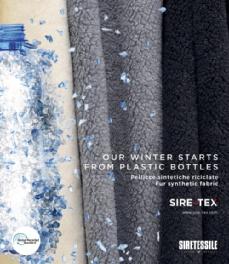
Online database of photos of shoes, bags and materials, categorized by style, season, events and much more. Hundreds of new pictures uploaded every week from fairs collection, catwalks, retail windows and e-commerce.
historical archive
Arsutoria (shoes) and Arpel (bags) historical archives available online. Arsutoria magazines from 1947 to 1980 and Arpel magazines from 1965 to 1980

ISSN 2531-9620 Send an e-mail to: arsutoria@edizioniaf.com to receive link and read the next issues of ARSUTORIA online for free 465 SS2023 TRENDS GUIDE CONCEPT, INSPIRATIONS, THEMES, COLOURS SS2023 VISION LAB NEXT MATERIALS FOR THE NEXT COLLECTIONS FOCUS SUSTAINABILITY B-CORP, NEW MATERIALS SUSTINABLE VISIONS AND FIGURES SAFETY SHOES INNOVATION, TECHNOLOGIES, NEW COLLECTIONS
MAGAZINES & BOOKS
ARSUTORIA
10 Issues
Arsutoria offers the most complete information for footwear & leather manufacturers and designers: collections, materials and technology.
FOTO
SHOE 30
6 Issues
An overview on medium-end footwear market: news, articles and pictures. Foto Shoe 30 is a must have for wholesalers and mass retailers..
arsutoriamagazine.com
ARSUTORIA ONLY SHOES / ONLY BAGS
Hard cover book of over 200 pages of shoes and bags presented for each season on fair sand catwalks.



fotoshoemagazine.com


FOOTWEAR DICTIONARY

• 500 illustrated pages
• 1000 terms in five different languages (IT-EN-ES-DE-FR)
• Only Printed edition
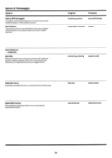
subscriptions@edizioniaf.com ph. +39 02 3191 2331 fax +39 02 3361 1619
www.edizioniaf.com
subscriptions@edizioniaf.com
ph. +39 02 3191 2331
fax +39 02 3361 1619
ORDER FORM
Prices include FedEx shipment
CREDIT CARD
EXP. DATE / CVV/CVC
CARDHOLDER NAME
SIGNATURE ____________________________________
BANK TRANSFER
IBAN: IT 49 Z 01030 01604 000002285956
Monte Paschi Siena Swift: PASCITM1MI4
* Prices are subject to VAT: only for Italy and private UE clients
** Available from January 2022
CONTACT EMAIL
VAT NBR COUNTRY +_____/______________________________
COMPANY ADDRESS CITY ZIP
PHONE
_ _ _ __ _ _ __ _ _ __ _ _ _
MAGAZINES & BOOKS ISSUES ITALY EUROPE REST OF THE WORLD ARSUTORIA - magazine 1 YEAR 10 250 € 450 € FOTOSHOE30 - magazine 1 YEAR 6 150 € 250 € FOOTWEAR TECHNICAL DICTIONARY* - book 1 book 1 120 € ARSUTORIA ONLY SHOES - book 1 YEAR 1 2 250 € 450 € ARPEL ONLY BAGS - book 1 YEAR 1 250 € ARSUTORIA STUDIO** USERS DIGITAL ITALY EUROPE REST OF THE WORLD SILVER (1 YEAR) Arsutoria magazine trends webinars 3 200 € 250 € 450 € GOLD (1 YEAR) SILVER +arstrends, photos of collections, catwalks, retail 5 SHOES BAGS FULL 450 € 350 € 500 € 500 € 400 € 550 € 700 € 600 € 750 € PLATINUM (1 YEAR) GOLD +historical archive 10 SHOES BAGS FULL 950 € 750 € 1200 € 1000 € 800 € 1250 € 1200 € 1000 € 1450 € PAPER
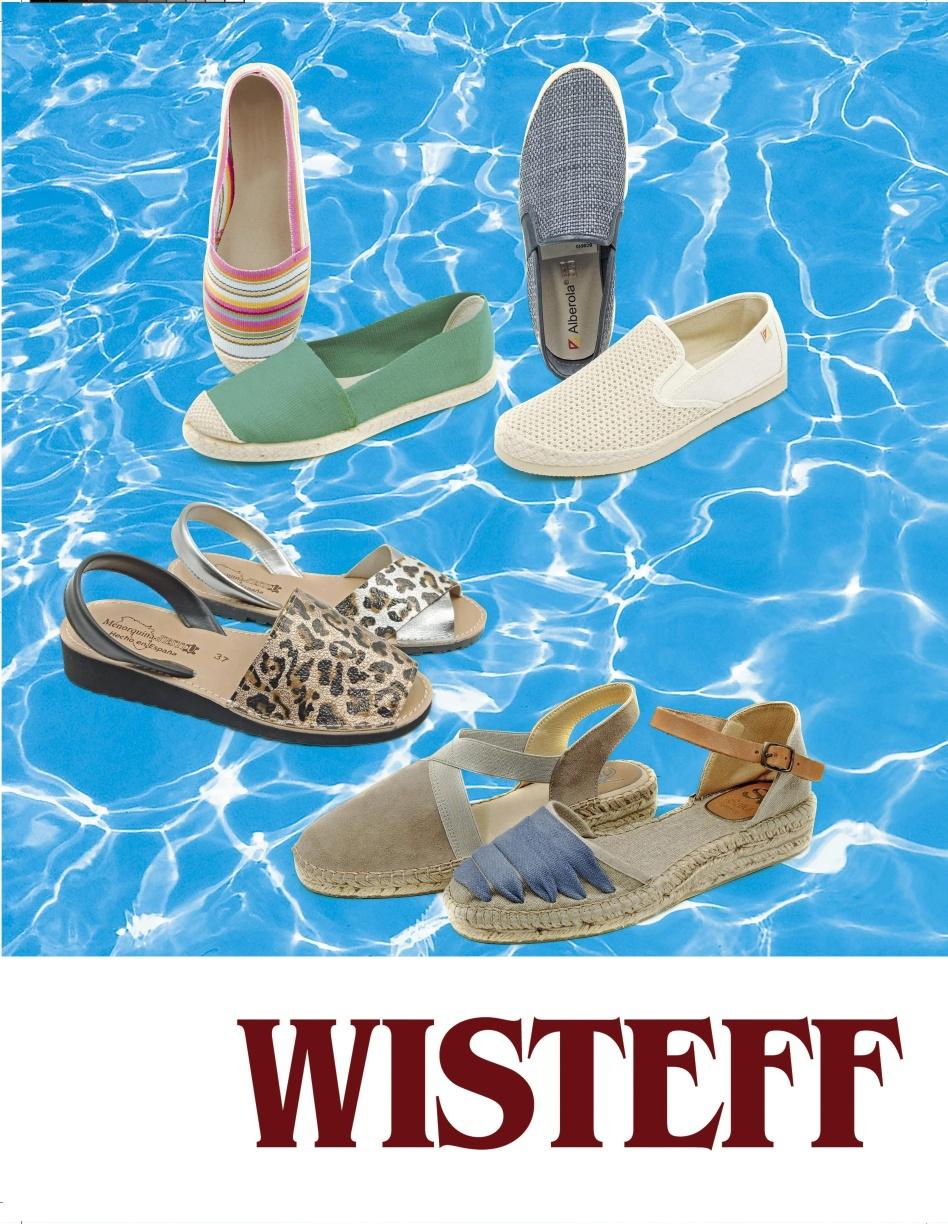

ADDRESSES
A.S.S.O. S.p.a. tel. +39 0734.628.940 www.assoitaly.it info@assoitaly.it pag. 153
BIOECO by ARKA 1927 tel. +48 33 876.55.33 www.bioeco-shoes.com info@bioeco-shoes.com pag. IV cover
CALZATERRA distributed by Zeugmas Ayakkabi Tekstil Ithalat Ihracat Sanayi Ve Ticaret Ltd. Sti. tel. +90 532.237.07.57 www.calzaterra.com info@calzaterra.com
pag. 27
CHINA LEATHER INDUSTRY ASSOCIATION
tel. +86 10.652.260.09 uitic-congress.chinaleather.org chaoying@chinaleather.org pag. 151
CLUB SHOES s.r.l. tel. +39 0583.920.118 www.clubshoessrl.com info@clubshoessrl.com pag. Sottocover
CORTINA NV
tel. +32 55.335.656 www.cortina-group.com info@cortina-group.com pag. 110
ECOBIO CALZATURE
GLOBAL FASHION s.r.l. tel. + 39 080.926.35.31 tel. + 39 0883.950.034 www.ecobiocalzature.com info@globalfashion.it pag. II cover
FLY FLOT s.r.l. tel. +39 030.968.900 www.flyflot.it info@flyflot.it
pag. 161
FLY s.r.l. tel. + 39 0422.363.097 www.flygroup.biz info@flygroup.biz
pag. 137
GALLO DIFFUSIONE s.r.l.
tel. +39 0583.974.274 www.gallodiffusione.com info@gallodiffusione.com
pag. 10
IMAC S.p.A. tel. +39 0734.938.721 www.imacspa.com nfo@imac-italia.it
pag. 3
LINEAPELLE s.r.l. tel. +39 02.880.77.11 www.lineapelle-fairs.it lineapelle@unic.it
pag. 23
REFRESH by MARSAN FOOTWEAR S.L. tel. +34 968.718.313 www.refreshoes.com info@refreshoes.com
pag. III cover
SYARIKAT PERUSAHAAN
JOOI BERSAUDARA SDN BHD
Tel. +604-508.18.18 www.asadi.com.my jooilim@asadi.com.my kiahng@asadi.com.my
pag. 4-5
TASD Fuarcilik A.S.
tel. +90 212.549.71.71
www.aymod.com info@aymod.com
pag. 28
WISTEFF SCHUH
tel. +39 0733.262.637 wisteffschuh@mercurio.it
pag. 158-159
XTI FOOTWEAR S.L.
tel. +34 968.718.313
www.xti.es xti@xti.es pag. Cover
The following pages are published only in the printed version at industry events.
Le pagine seguenti vengono pubblicate solo nella versione stampata in occasione degli eventi di settore.
APICCAPS tel. +351 22.507.41.50 www.apiccaps.pt aicep.milan@portugalglobal.pt pag. XV
CFTE - CHINA FOREIGN TRADE GUANGZHOU EXHIBITION CO., LTD. tel. +86 20.891.281.18 www.fairwindow.com/index shaoyz@fairwindow.com.cn liangdh@fairwindow.com.cn pag. XXIX
CHINA LEATHER PUBLISHER CO. LTD. BEIJING China
tel. +86 10.643.378.08 tel. +86 10.643.378.12 www.leather365.com jsltc-china@leather365.com pag. XIX
EASYWALK - I.G.F. s.r.l. ITALIAN GROUP OF FACTORIES tel. +39 0883.536.246 www.easywalk.it info@igfshoes.it pag. XXI
EXPO RIVA SCHUH RIVA DEL GARDA FIERECONGRESSI S.p.A. tel. +39 0464.520.000 www.exporivaschuh.it info@exporivaschuh.it pag. XLVIII
G&F CO., LTD. Fujian Foreign Economic Service Trade Corp. tel. +86 591.878.358.32 www.gffairs.com zyj@gffairs.com sherry@gffairs.com pag. XXIII
GUANGZHOU NEWTOP EXHIBITION BUSINESS CO. LTD. tel. +86 138.088.780.46 13808878046@189.cn pag. XXXI
I.L.M. INT’L LEATHER GOODS FAIR MESSE OFFENBACH GmbH tel. +49 69.82.97.55.0 www.messe-offenbach.de info@messe-offenbach.de pag. XXVII
L&C (XIAMEN) GROUPXIAMEN L&C INT’L EXHIBITION CO., LTD. tel. +86 592.226.10.26
www.lcfairs.com
chenshuning.m@lcfairs.com info@lcfairs.com
pag. V
LYFIT www.lyfitshoes.com info@lyfitshoes.com pag. XLVII
MESSE FRANKFURT FRANCE SAS tel. +33 155.268.989
fwww.leatherworld-paris.com
visitorservice@france.messefrankfurt.com pag. XVII
PT PORTO INDONESIA SEJAHTERA
tel. +62 21.540.55.40
www.porto.co.id
international.bd@porto.co.id
pag. IX
SHOES DUSSELDORF tel. +49 211.43.96.01
www.gallery-shoes.com info@igedo.com
pag. XI
160

I HIRED AN EXPERT IN ARMOCROMIA TO HELP US SELECT THE COLOR PALETTE FOR NEXT SEASON
I WAS HOPING FOR A SHARPER POINT OF VIEW…
- TIMOTHÉE CHALAMET WENT TO THE OSCARS SHIRTLESS - WE NEED TO DO MORE!
- PEDRO PASCAL WENT TO THE MET GALA IN SHORTS - WE NEED
- I’M ALREADY TRENDING ON TWITTER! - ARE YOU SURE THIS WILL HELP US SELL MORE CLOTHES?...
THIS REPORT SHOWS THAT FASHION AND LUXURY ARE NOT DOING ENOUGH TO PREVENT ABUSE AND MISTREATMENT ACROSS THEIR SUPPLY CHAIN
- WE MUST DO SOMETHING!

- I’LL HANDLE IT!

WORK FASTER! THE COLLECTION MUST BE READY IN TIME FOR OUR BIG EVENT ON CORPORATE RESPONSIBILITY!
FAIRY GODMOTHER, I NEED A DRESS FOR PRINCE CHARMING’S BALL. IT MUST BE LUXURIOUS AND IN THE LATEST FASHION!
BIBBIDI BOBBIDI BOO

- BUT… I AM STILL DRESSED IN RAGS..!?!
- IT’S CALLED “QUIET LUXURY”

162 @fashioncartoonist by Matteo Sessa Vitali
TO DO
MORE!

















 Artwork by Joe Colosimo
Artwork by Joe Colosimo








 Roberto Liscia, Netcomm President
Roberto Liscia, Netcomm President





































































 Photos by Angelo Lanza
Fashion by Luca Termine
Turtleneck PAOLONI Hat BONFILIO HATS
Suit and shoes MANUEL RITZ
Photos by Angelo Lanza
Fashion by Luca Termine
Turtleneck PAOLONI Hat BONFILIO HATS
Suit and shoes MANUEL RITZ






 Suit and sweater FAMILY FIRST Socks RED Shoes BIRKENSTOCK
Coat OUT FIT Pants and shirt KAPPA Sunglasses MOSCOT Shoes VEJA
Suit and sweater FAMILY FIRST Socks RED Shoes BIRKENSTOCK
Coat OUT FIT Pants and shirt KAPPA Sunglasses MOSCOT Shoes VEJA



 Suit PT TORINO Hat SUN 68 Shoes SICKING
Jacket and sweater AVANT TOI Pants RE-HASH Shoes SANTONI
Suit PT TORINO Hat SUN 68 Shoes SICKING
Jacket and sweater AVANT TOI Pants RE-HASH Shoes SANTONI


 Hat MANUEL RITZ
Shoes GREEN GEORGE
Hat MANUEL RITZ
Shoes GREEN GEORGE



 Pants ZARA
Shoes KAPE KAROO PROJECT @ARSUTORIA SCHOOL
Cardigan and sweater FILIPPO DE LAURENTIIS
Trousers BERWICH
Socks RED
Shoes CLARKS
Pants ZARA
Shoes KAPE KAROO PROJECT @ARSUTORIA SCHOOL
Cardigan and sweater FILIPPO DE LAURENTIIS
Trousers BERWICH
Socks RED
Shoes CLARKS

 Backpack SALVADOR MOLINA @ARSUTORIA SCHOOL
Shoes PANCHIC
Jacket CRUNA Pants PIACENZA CASHMERE Hat BONFILIO HATS
Socks RED
Shoes EASYWALK by IGF
Backpack SALVADOR MOLINA @ARSUTORIA SCHOOL
Shoes PANCHIC
Jacket CRUNA Pants PIACENZA CASHMERE Hat BONFILIO HATS
Socks RED
Shoes EASYWALK by IGF



 Suit MANUEL RITZ
Sweater PIACENZA CASHMERE
Shoes HODSON JAHANIAN @ARSUTORIA SCHOOL
Jacket and turtleneck BROOKSFIELD TORINO
Pants MANUEL RITZ
Shoes HODSON JAHANIAN @ARSUTORIA SCHOOL
Suit MANUEL RITZ
Sweater PIACENZA CASHMERE
Shoes HODSON JAHANIAN @ARSUTORIA SCHOOL
Jacket and turtleneck BROOKSFIELD TORINO
Pants MANUEL RITZ
Shoes HODSON JAHANIAN @ARSUTORIA SCHOOL


 Photos by Angelo Lanza Fashion by Luca Termine
Photos by Angelo Lanza Fashion by Luca Termine

 Dress BYBLOS
Necklace LARIULÀ MILANO
Shoes JEFFREY CAMPBELL
Dress BYBLOS
Necklace LARIULÀ MILANO
Shoes JEFFREY CAMPBELL



 Dress FLAVIA MARDI
Bra LARIULÀ MILANO
Shoes LORIBLU
Dress FLAVIA MARDI
Bra LARIULÀ MILANO
Shoes LORIBLU





 Catsuit POSTER GIRL
Sunglasses CALVIN KLEIN
Shoes LORIBLU
Catsuit POSTER GIRL
Sunglasses CALVIN KLEIN
Shoes LORIBLU
 Dress ANNAKIKI
Necklace and bracelet LARIULÀ MILANO
Dress ANNAKIKI
Necklace and bracelet LARIULÀ MILANO
 Dress LARIULÀ MILANO
Photos by Angelo Lanza
Fashion by Luca Termine
Photo assistant: Yadier Castro Piedra
Make-up and Hair: Imma Mennuti and Andrea Lacavalla
Stylist assistant: Emanuele Scanu Model: Daria Savytska @BraveModelManagement
Dress LARIULÀ MILANO
Photos by Angelo Lanza
Fashion by Luca Termine
Photo assistant: Yadier Castro Piedra
Make-up and Hair: Imma Mennuti and Andrea Lacavalla
Stylist assistant: Emanuele Scanu Model: Daria Savytska @BraveModelManagement


 Jacket DAVII Shirt JOHN RICHMOND Bralette ABSIDEM Skirt BABYLON Earrings and necklace MYRIL
Jacket DAVII Shirt JOHN RICHMOND Bralette ABSIDEM Skirt BABYLON Earrings and necklace MYRIL





 Playsuit MUUNICE Clocks HOOPS Earrings and necklace: SIMPLE RITUALS
Right ring: 12 PM JEWELRY
Left ring RADÀ Boots PARIS TEXAS
Photos by Giorgia Spina Styling by Antonio Musto Make-up and hair: Giulia Cannizzaro
Model: Kornelia Kukowska @WomenDirect - Milano
Playsuit MUUNICE Clocks HOOPS Earrings and necklace: SIMPLE RITUALS
Right ring: 12 PM JEWELRY
Left ring RADÀ Boots PARIS TEXAS
Photos by Giorgia Spina Styling by Antonio Musto Make-up and hair: Giulia Cannizzaro
Model: Kornelia Kukowska @WomenDirect - Milano

 Skirt and corset APNOEA Necklace and bag ROSANTICA Shoes PREMIATA
Skirt and corset APNOEA Necklace and bag ROSANTICA Shoes PREMIATA
 Trench BALESTRA
Sunglasses OSCAR MAMOOI
Boots GIANLUCA CAPANNOLO
Trench BALESTRA
Sunglasses OSCAR MAMOOI
Boots GIANLUCA CAPANNOLO

 Blazer MANUEL RITZ
Pants PT TORINO
T-shirt MULZIN Boots PRIMARK
Blazer MANUEL RITZ
Pants PT TORINO
T-shirt MULZIN Boots PRIMARK
 Blazer and dress NERVI
Shoes LUISA SPAGNOLI
Blazer and dress NERVI
Shoes LUISA SPAGNOLI
 Top MUUNICE Corset BABYLON Skirt GIANLUCA CAPANNOLO Bag VIC MATIE Boots ATIIMU
Top MUUNICE Corset BABYLON Skirt GIANLUCA CAPANNOLO Bag VIC MATIE Boots ATIIMU
 Suit TAGLIATORE Turtleneck WOLFORD Necklace and bag ROSANTICA Shoes BEATRICE
Suit TAGLIATORE Turtleneck WOLFORD Necklace and bag ROSANTICA Shoes BEATRICE
 Dress NERVI
Necklace ROSANTICA
Shoes LUISA SPAGNOLI
Dress NERVI
Necklace ROSANTICA
Shoes LUISA SPAGNOLI
 Top GIANLUCA CAPANNOLO
Turtleneck BALESTRA Skirt MUKZIN Boots ATIIMU
Photos by Angelo Lanza Fashion by Luca Termine
Photo assistant: Yadier Castro Piedra MUA: Francesca Giancotti Stylist assistants: Emanuele Scanu and Vittoria Macrì Model: Anh @BraveModels
Top GIANLUCA CAPANNOLO
Turtleneck BALESTRA Skirt MUKZIN Boots ATIIMU
Photos by Angelo Lanza Fashion by Luca Termine
Photo assistant: Yadier Castro Piedra MUA: Francesca Giancotti Stylist assistants: Emanuele Scanu and Vittoria Macrì Model: Anh @BraveModels
 Photos by Stratis Kas Fashion by Dinalva Barros
Dress CRISTIANO BURANI Necklaces SHARRA PAGANO Shoes GIUSEPPE ZANOTTI
Photos by Stratis Kas Fashion by Dinalva Barros
Dress CRISTIANO BURANI Necklaces SHARRA PAGANO Shoes GIUSEPPE ZANOTTI
 Dress ROMEO GIGLI
Bag MONTE SHARP
Dress ROMEO GIGLI
Bag MONTE SHARP
 Dress VERONICA IORIO Bag L’ATELIER DU SAC
Dress VERONICA IORIO Bag L’ATELIER DU SAC



 Dress CETTINA BUCCA
Top POMANDÈRE
Shoes SARA WONG
Dress CETTINA BUCCA
Top POMANDÈRE
Shoes SARA WONG
 Top and coulotte HUI
Photos by Stratis Kas @MKS-MILANO
Styling by Dinalva Barros @MKS-MILANO
Make-up: Giovanni Zummo @MKS-MILANO
Hair: Elizabeth Fogel @Hairdresserlf using Kevin Murphy Fashion assistants: Ilaria Gelormini and Sofia Ruzzon
Top and coulotte HUI
Photos by Stratis Kas @MKS-MILANO
Styling by Dinalva Barros @MKS-MILANO
Make-up: Giovanni Zummo @MKS-MILANO
Hair: Elizabeth Fogel @Hairdresserlf using Kevin Murphy Fashion assistants: Ilaria Gelormini and Sofia Ruzzon
 Suit NARA CAMICIE Turtleneck PIERRE MANTOUX Bra WOLFORD Bag and shoes KAPE KAROO PROJECT @ARSUTORIA School
Photos by Angelo Lanza Fashion by Luca Termine
Suit NARA CAMICIE Turtleneck PIERRE MANTOUX Bra WOLFORD Bag and shoes KAPE KAROO PROJECT @ARSUTORIA School
Photos by Angelo Lanza Fashion by Luca Termine



 Bag RICCARDO CAVALIERE @ARSUTORIA SCHOOL
Bag RICCARDO CAVALIERE @ARSUTORIA SCHOOL








 Photos by Angelo Lanza Fashion by Luca Termine
Photo assistant: Yadier Castro Piedra
Make-up: Alessia Damiata Hair: Francesca Giancotti Stylist assistant: Emanuele Scanu Model: Aleksandra Korotkaia @BraveModels
Total look TAGLIATORE 0205
Small bag LA FESTIN
Big bag KAPE KAROO PROJECT @ARSUTORIA SCHOOL
Shoes CHIE MIHARA
Photos by Angelo Lanza Fashion by Luca Termine
Photo assistant: Yadier Castro Piedra
Make-up: Alessia Damiata Hair: Francesca Giancotti Stylist assistant: Emanuele Scanu Model: Aleksandra Korotkaia @BraveModels
Total look TAGLIATORE 0205
Small bag LA FESTIN
Big bag KAPE KAROO PROJECT @ARSUTORIA SCHOOL
Shoes CHIE MIHARA




 Suit FRANCESCA COTTONE Choker, hand chain bracelet MYRIL Shoes GIUSEPPE ZANOTTI
Suit FRANCESCA COTTONE Choker, hand chain bracelet MYRIL Shoes GIUSEPPE ZANOTTI

 Jacket and pants JOHN RICHMOND
Tank top POLO RALPH LAUREN
Earring RADÀ
Shoes MOSHIONS
Jacket and pants JOHN RICHMOND
Tank top POLO RALPH LAUREN
Earring RADÀ
Shoes MOSHIONS

 Sweatshirt EDWIN Hat HUF
Sweatshirt EDWIN Hat HUF
 T-shirt THROWBACK Pants MOSHIONS Bag HIVA ATELIER Bracelet RADÀ
T-shirt THROWBACK Pants MOSHIONS Bag HIVA ATELIER Bracelet RADÀ

 Jacket SIMON CRACKER Sweatshirt and pants MOSHIONS
Sunglasses KYME
Photos by Giorgia Spina Styling by Antonio Musto Make-up: Eleonora Saraceni
Model: Paolo Grebic @BraveModels - Milano
Jacket SIMON CRACKER Sweatshirt and pants MOSHIONS
Sunglasses KYME
Photos by Giorgia Spina Styling by Antonio Musto Make-up: Eleonora Saraceni
Model: Paolo Grebic @BraveModels - Milano


 Mariacarla Boscono for MUGLER
Photos by Armando Grillo
Mariacarla Boscono for MUGLER
Photos by Armando Grillo
 Shalom Harlow
Shalom Harlow

 Irina Shayk
Irina Shayk

 Eva Herzigova
Eva Herzigova
 Amber Valletta
Amber Valletta






 Ann Demeulmester
Ann Demeulmester















 Saint Laurent
Saint Laurent
























































